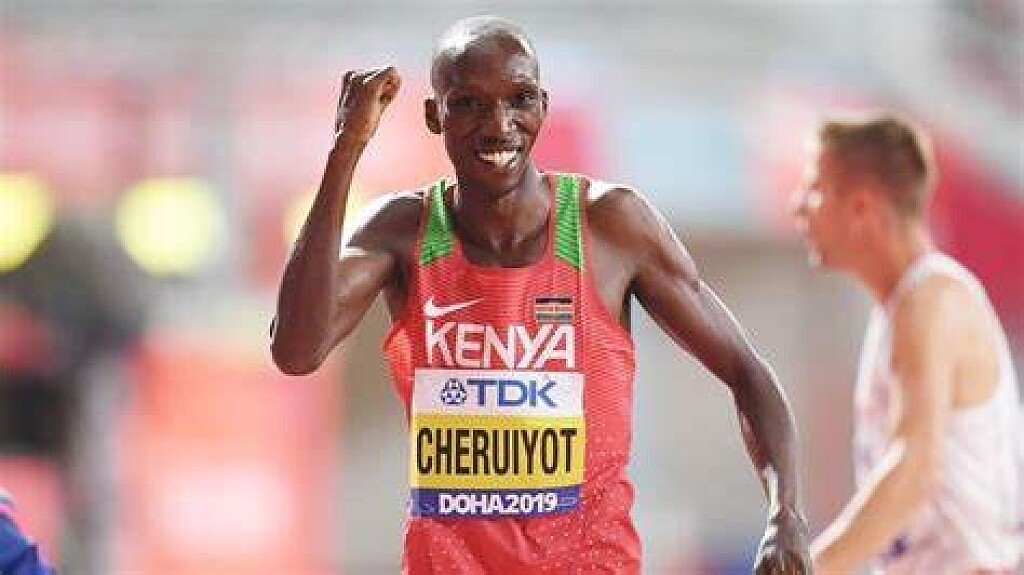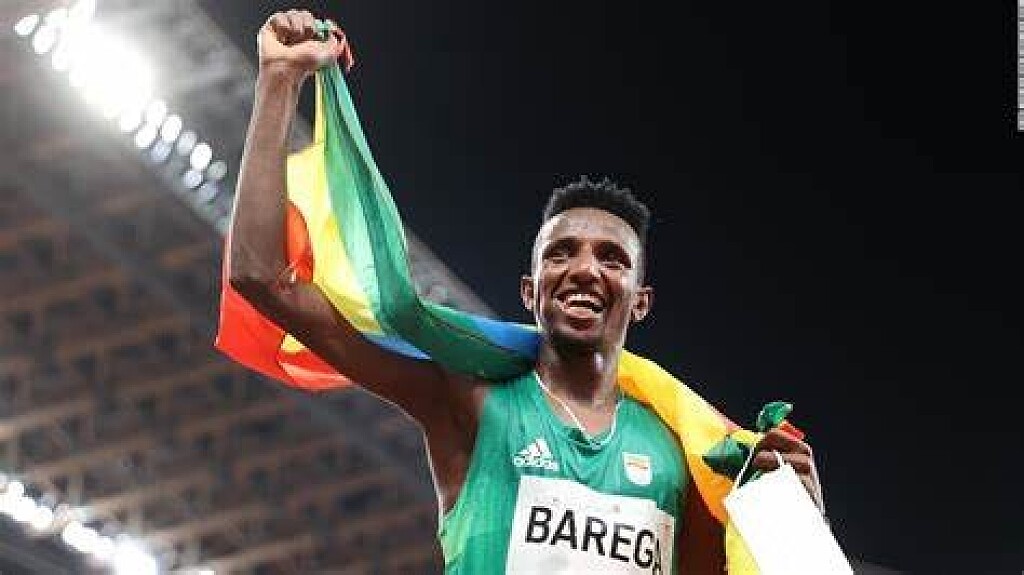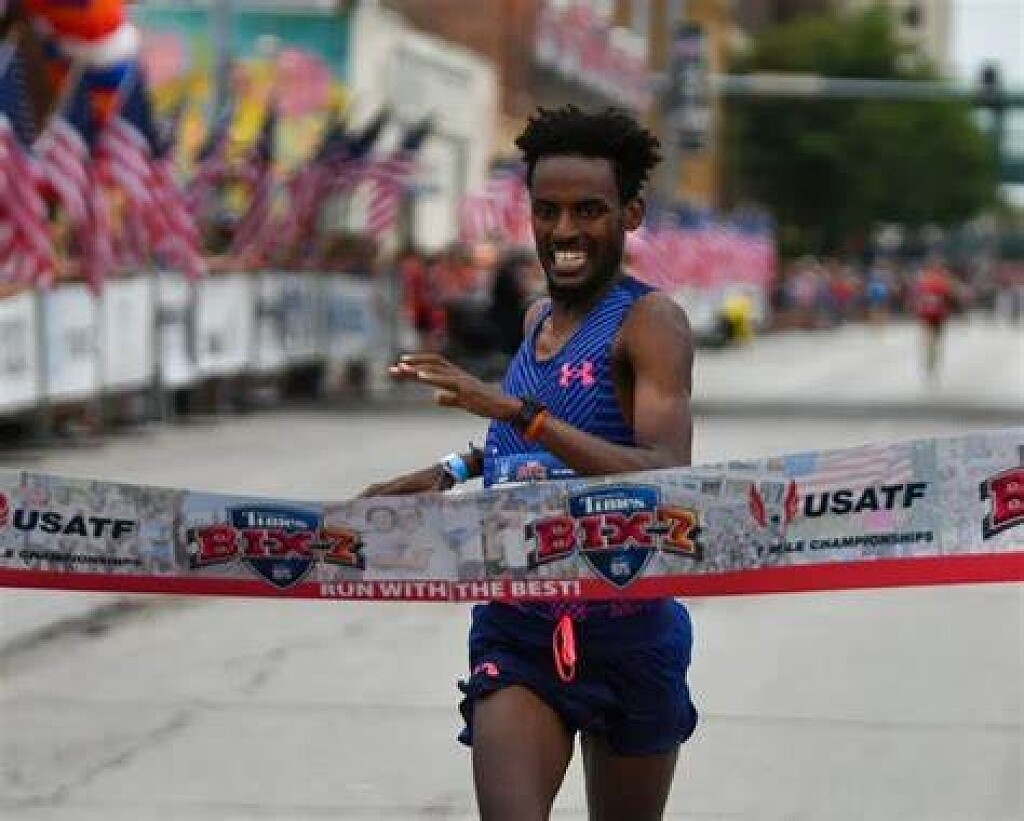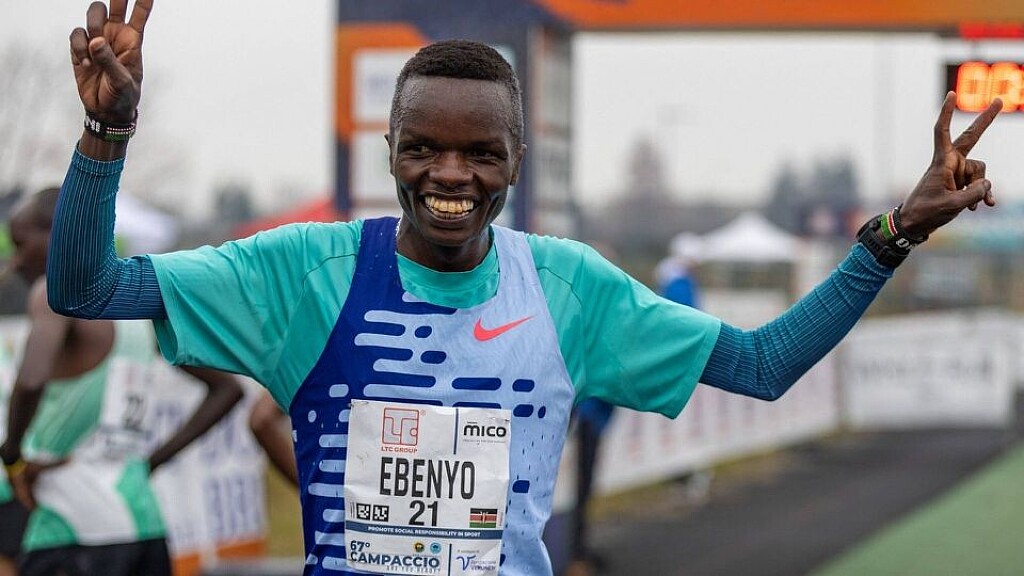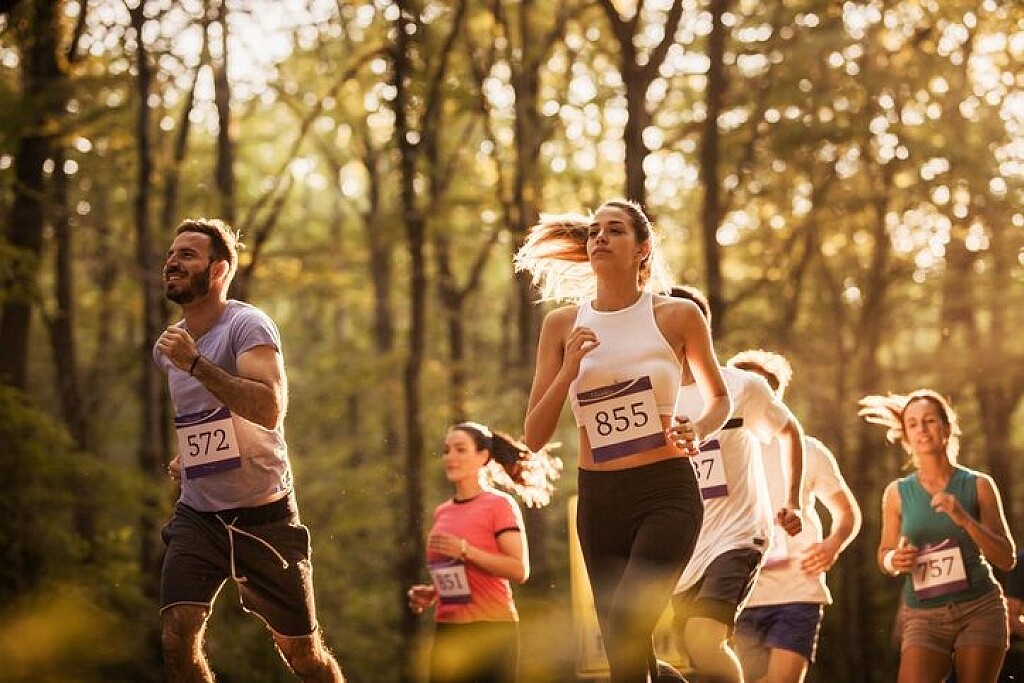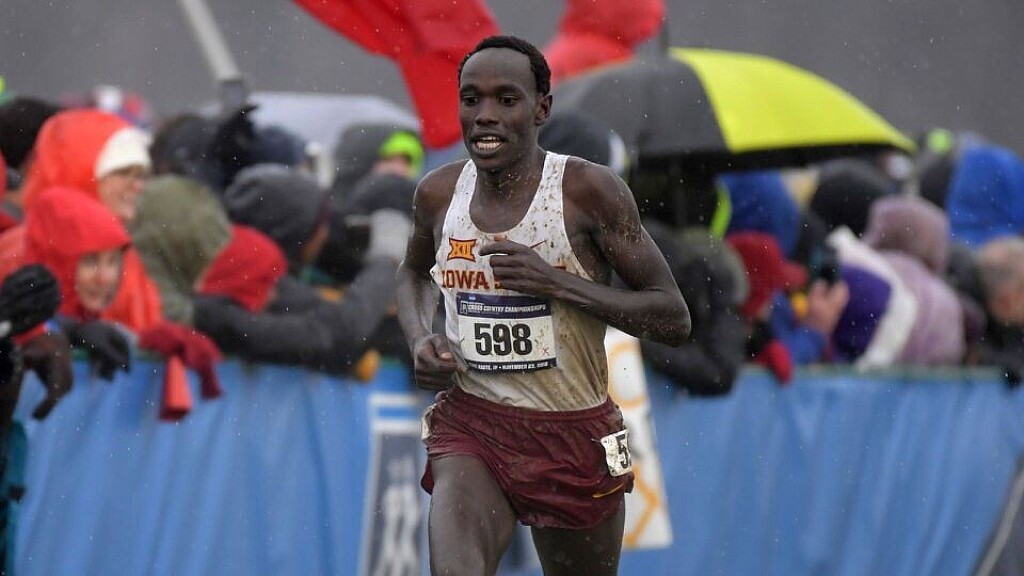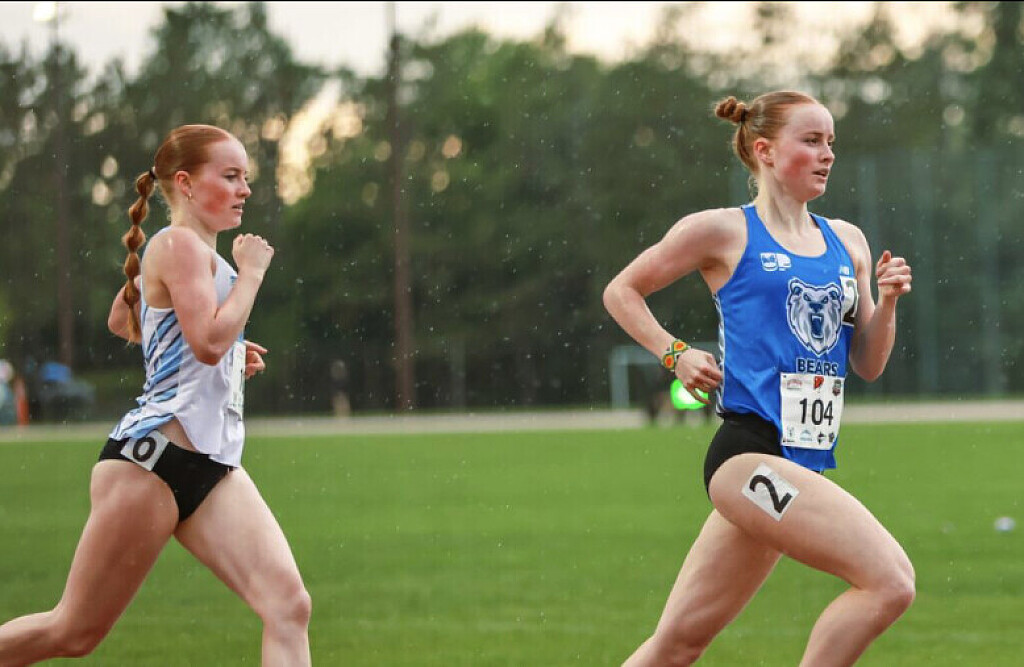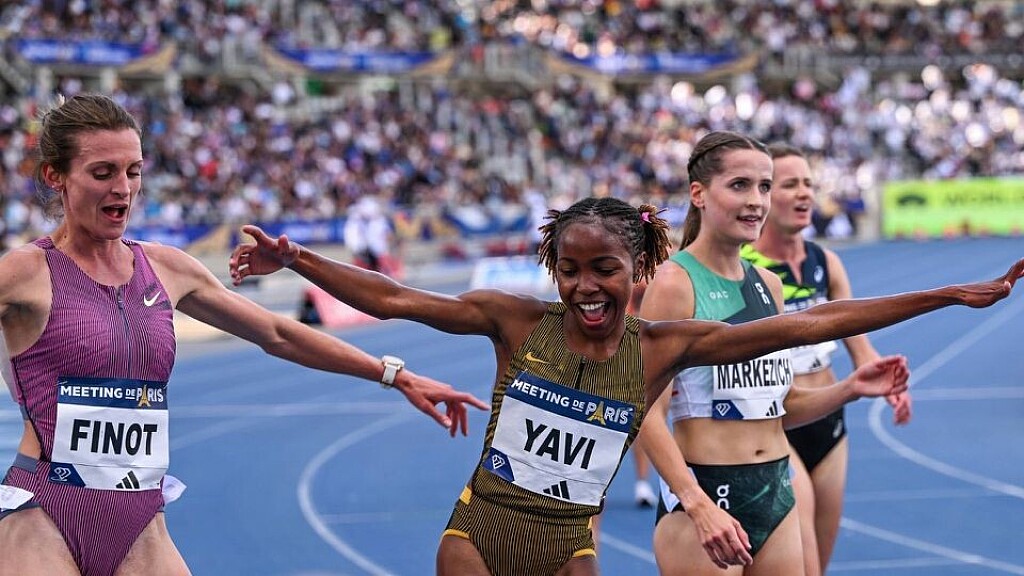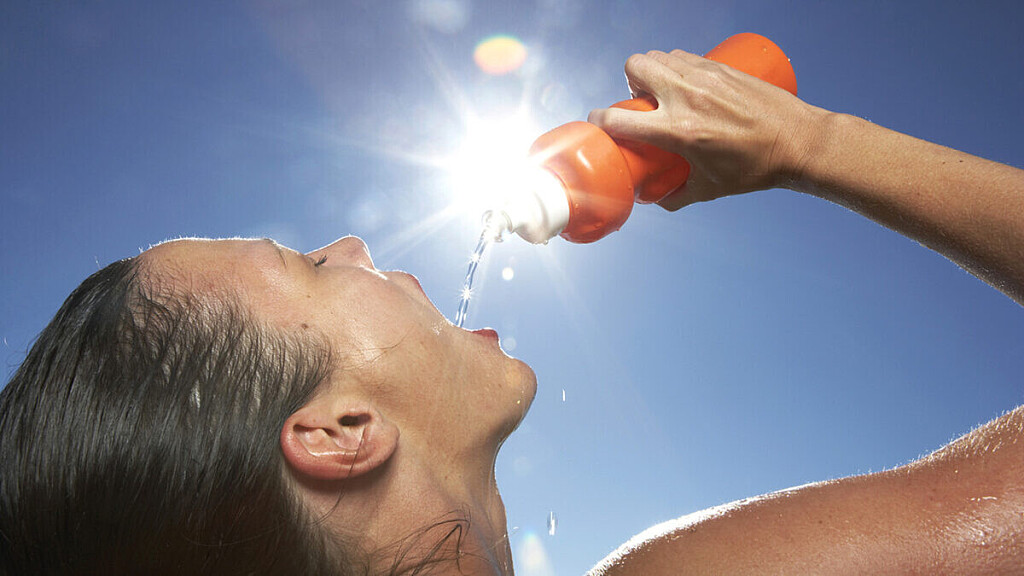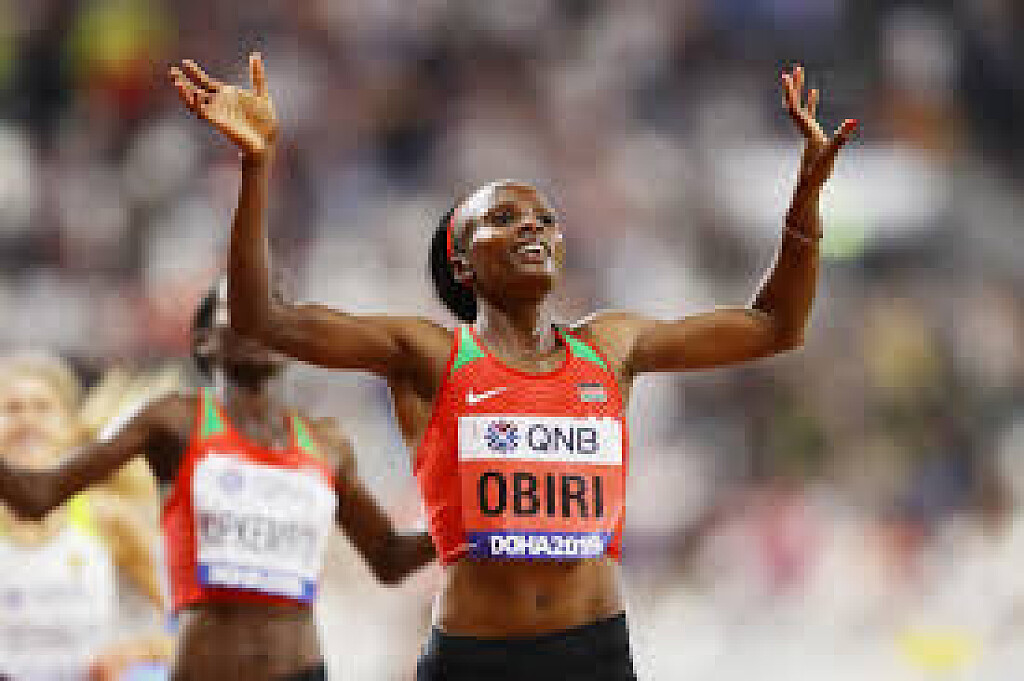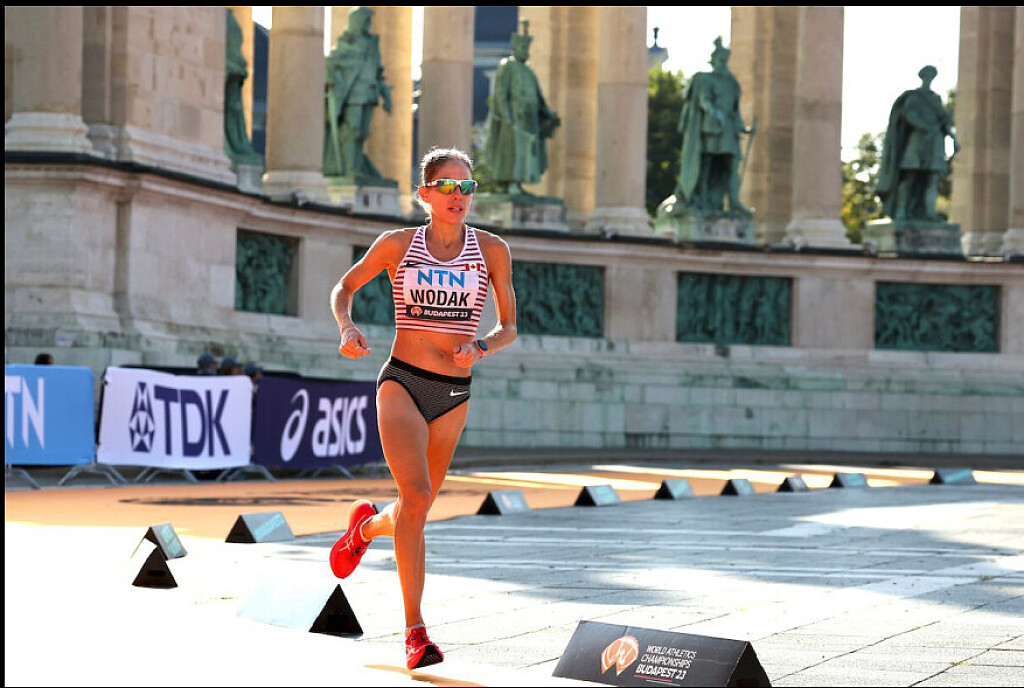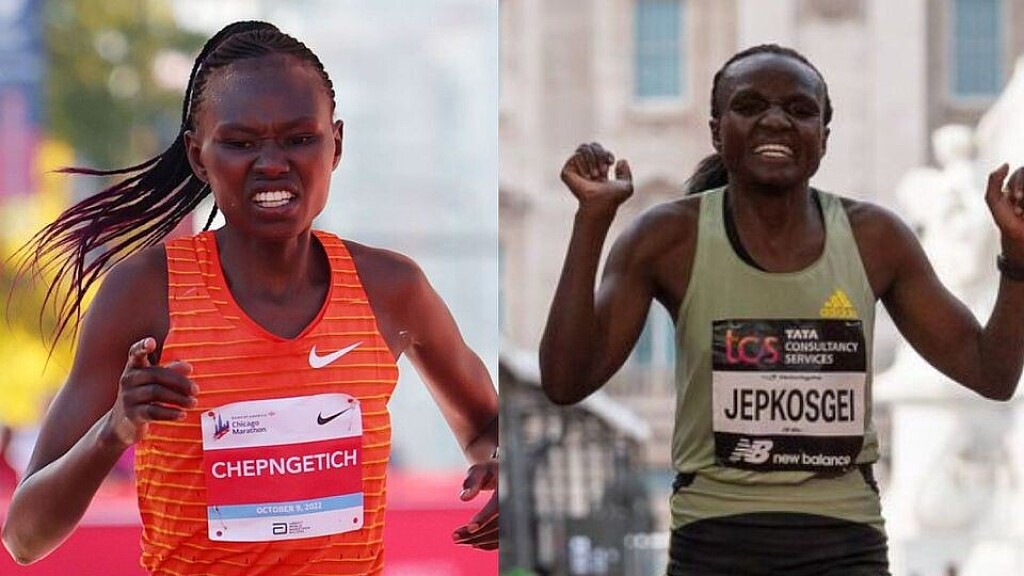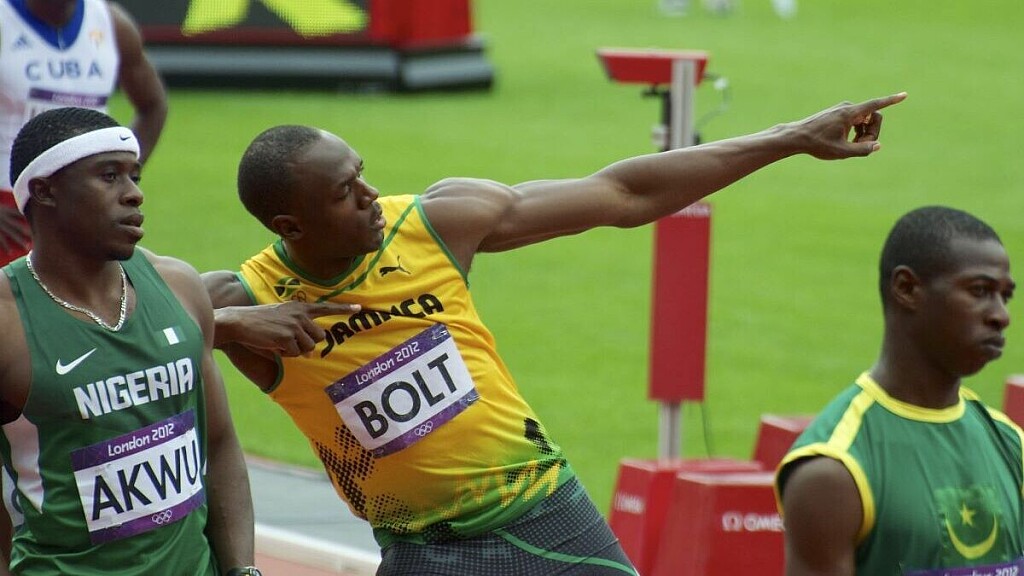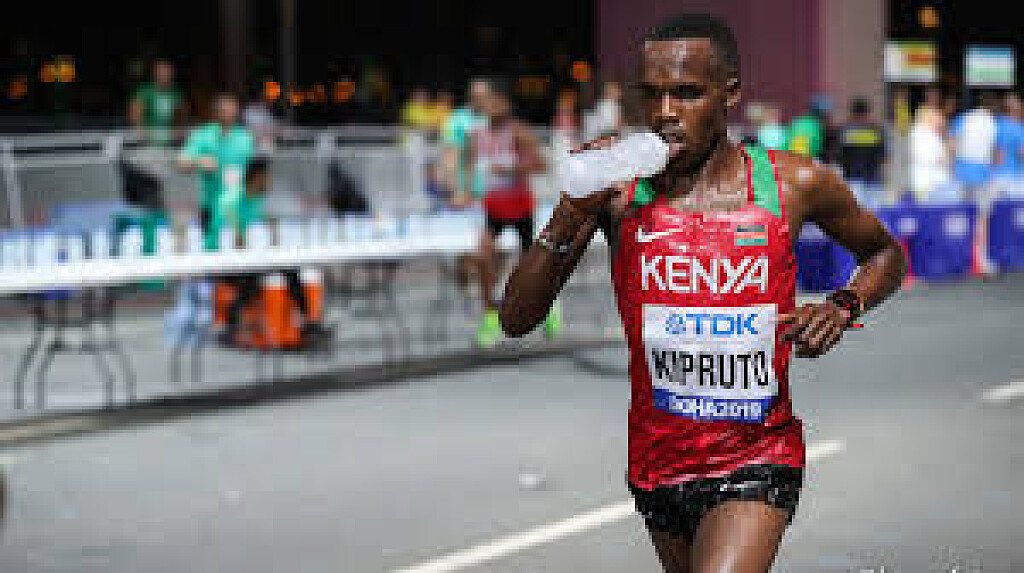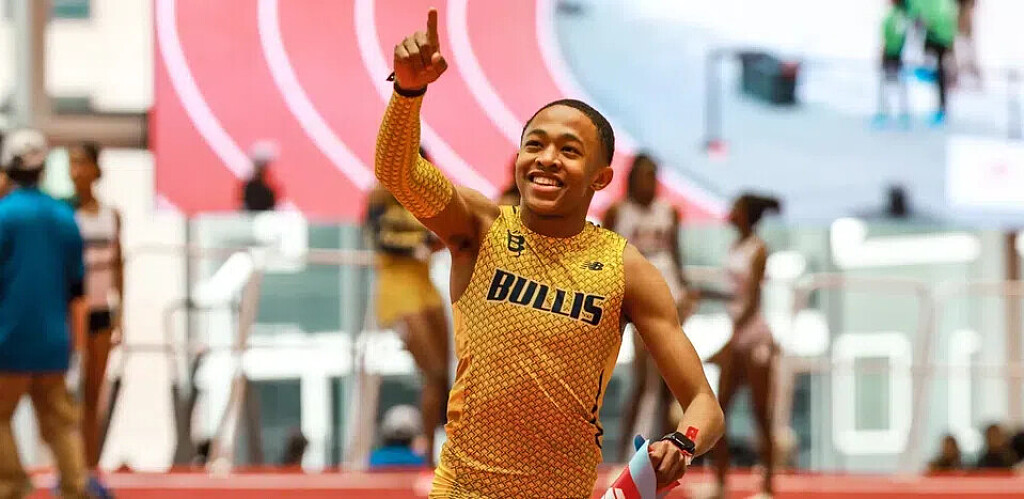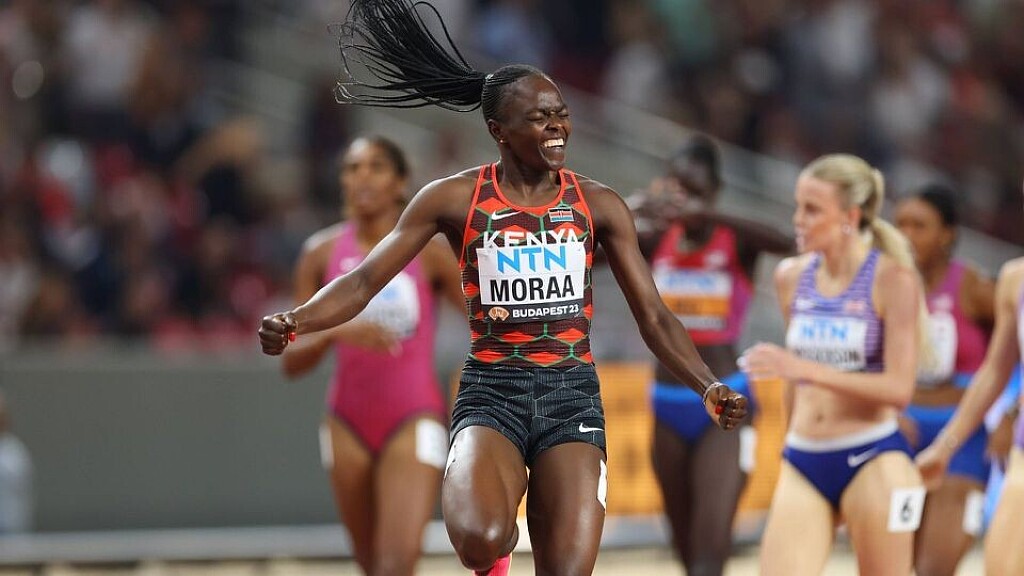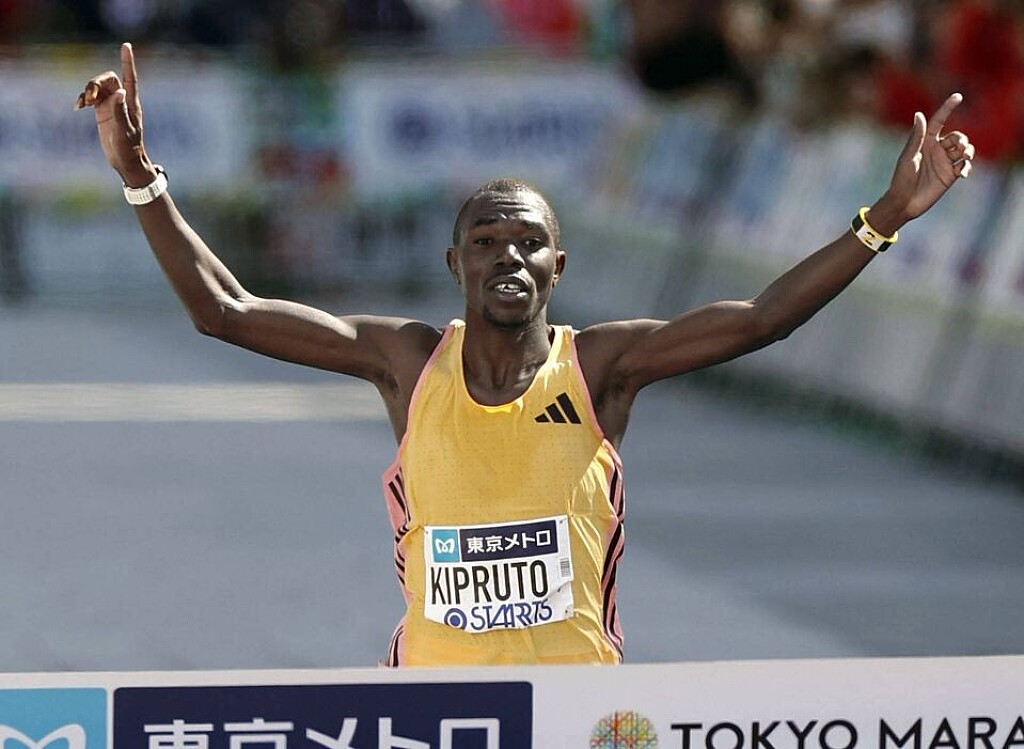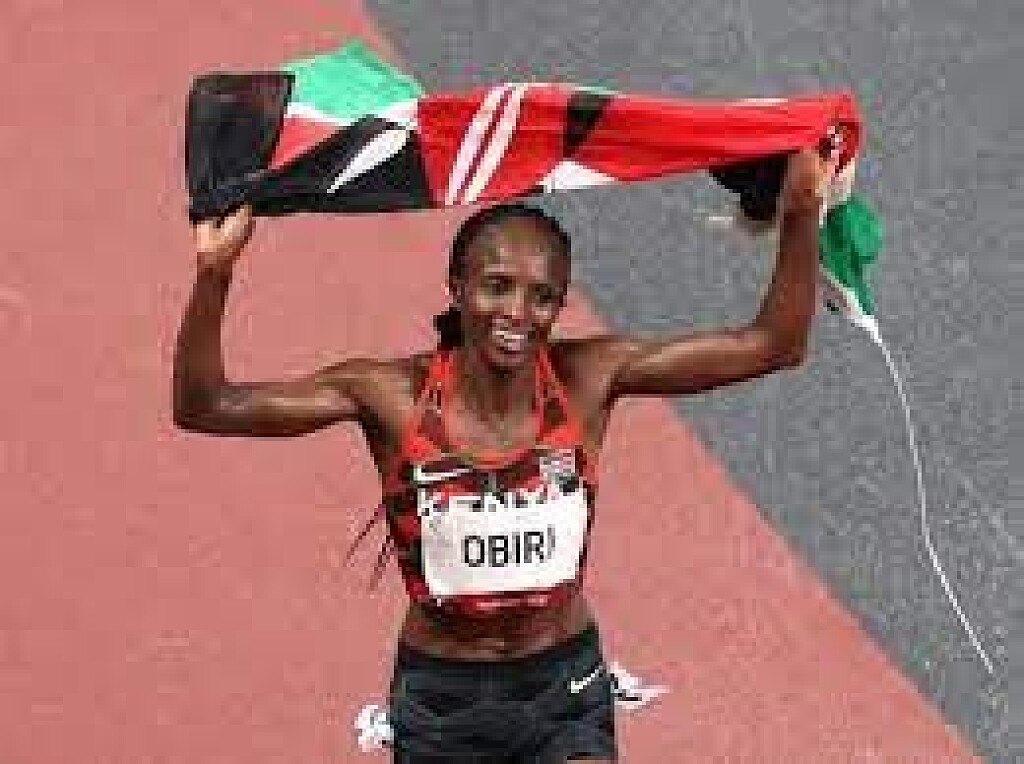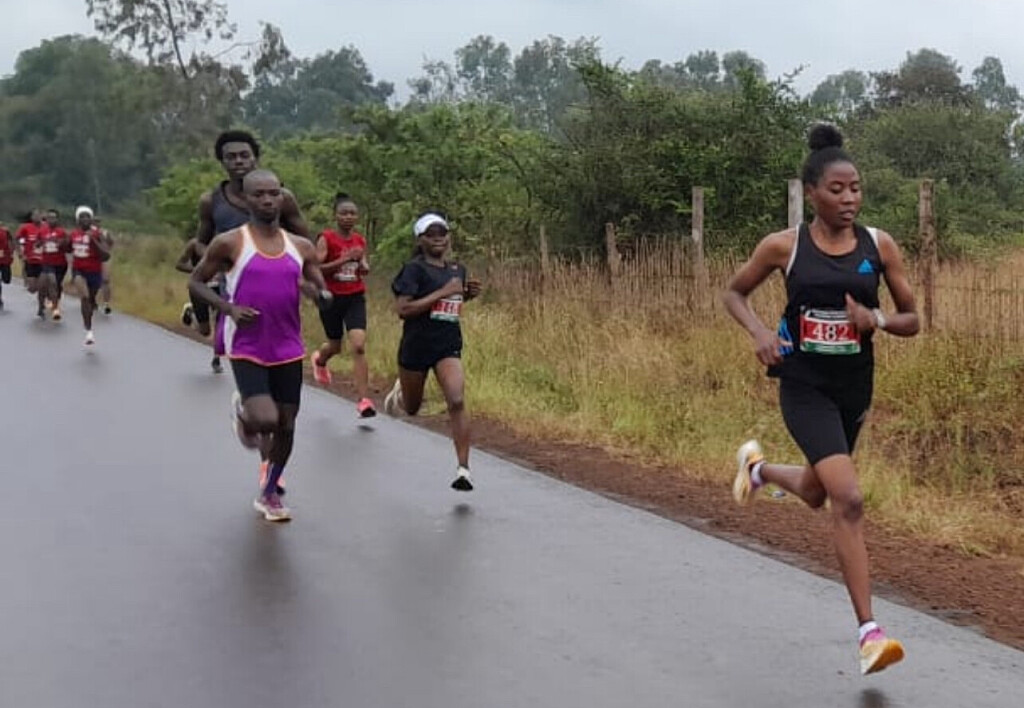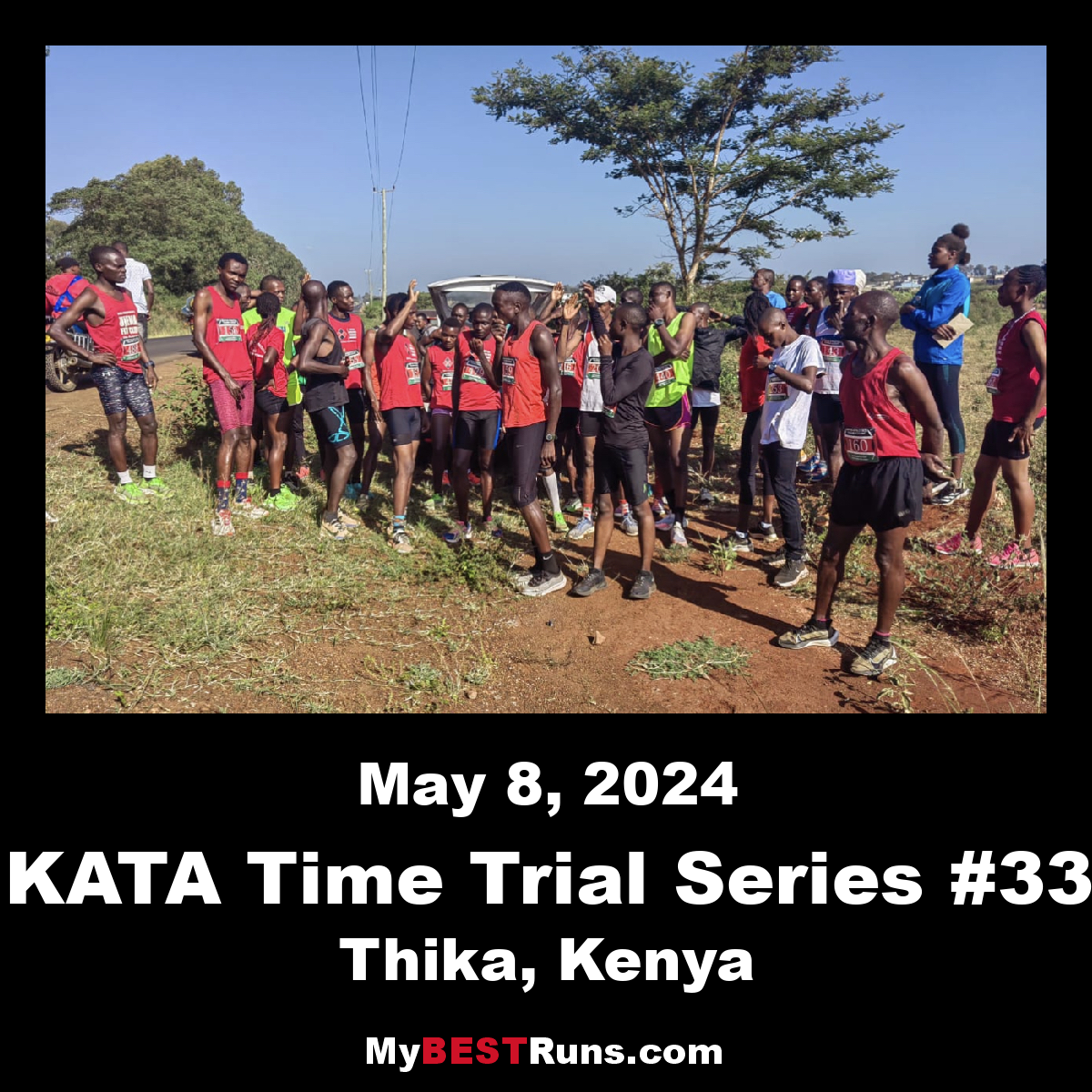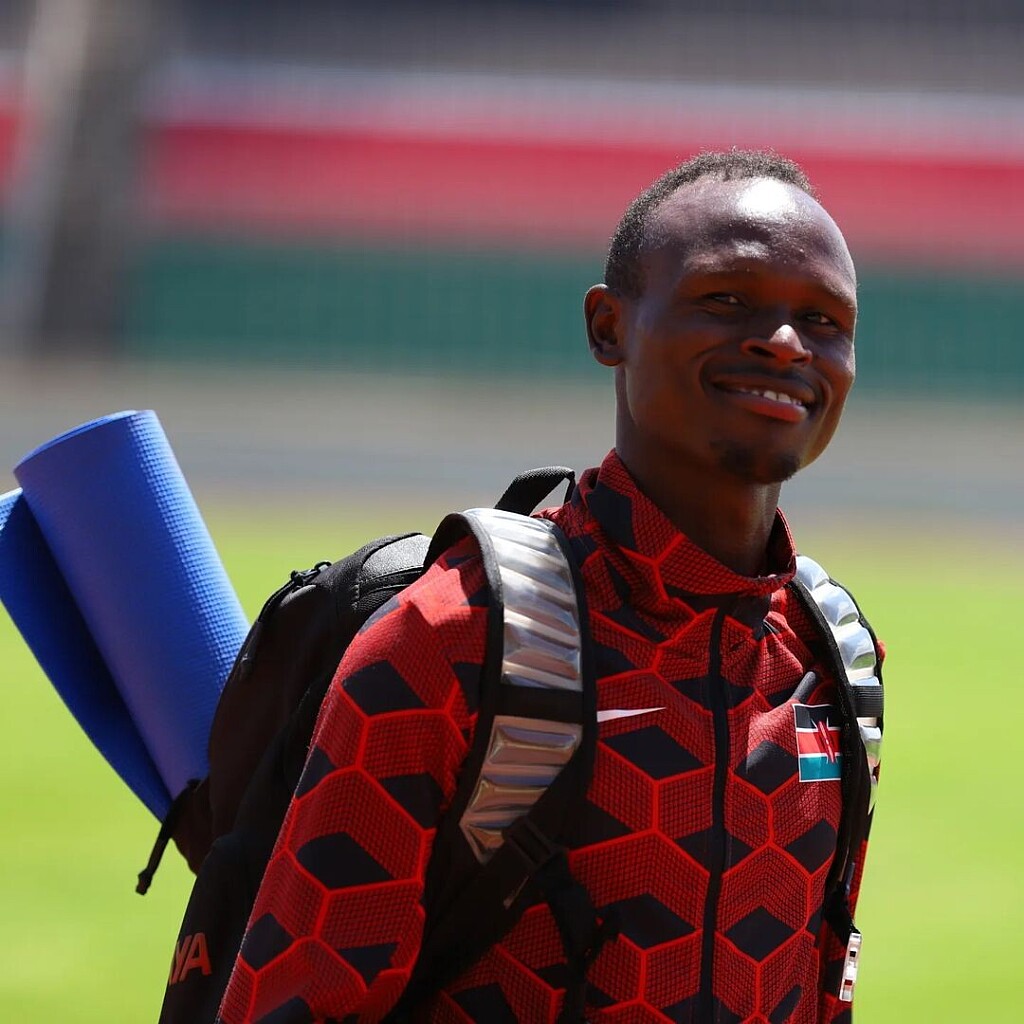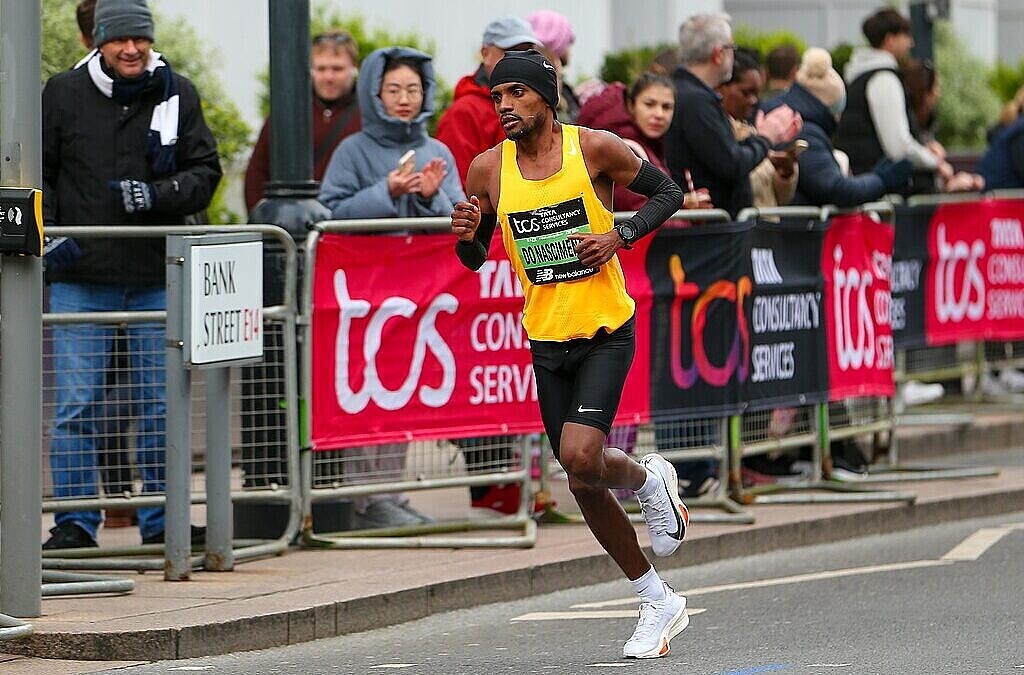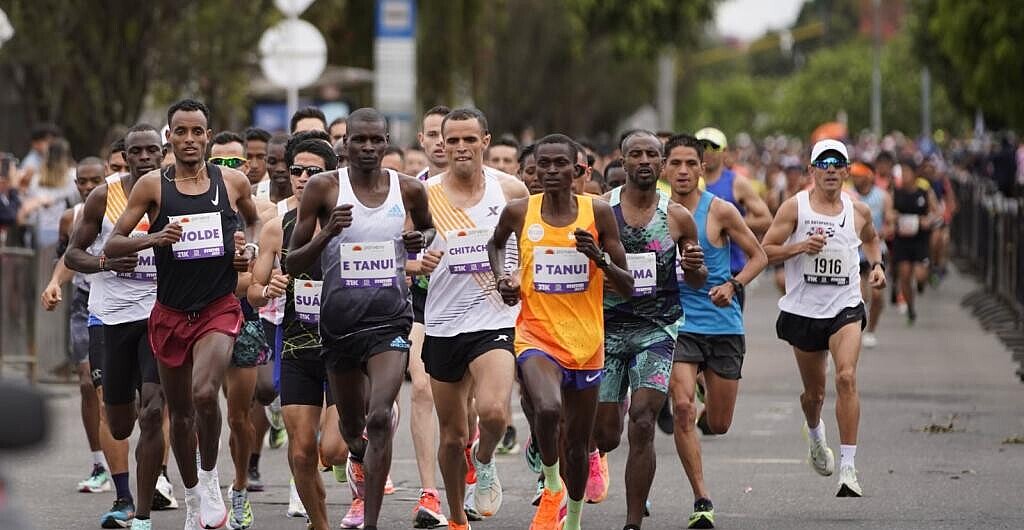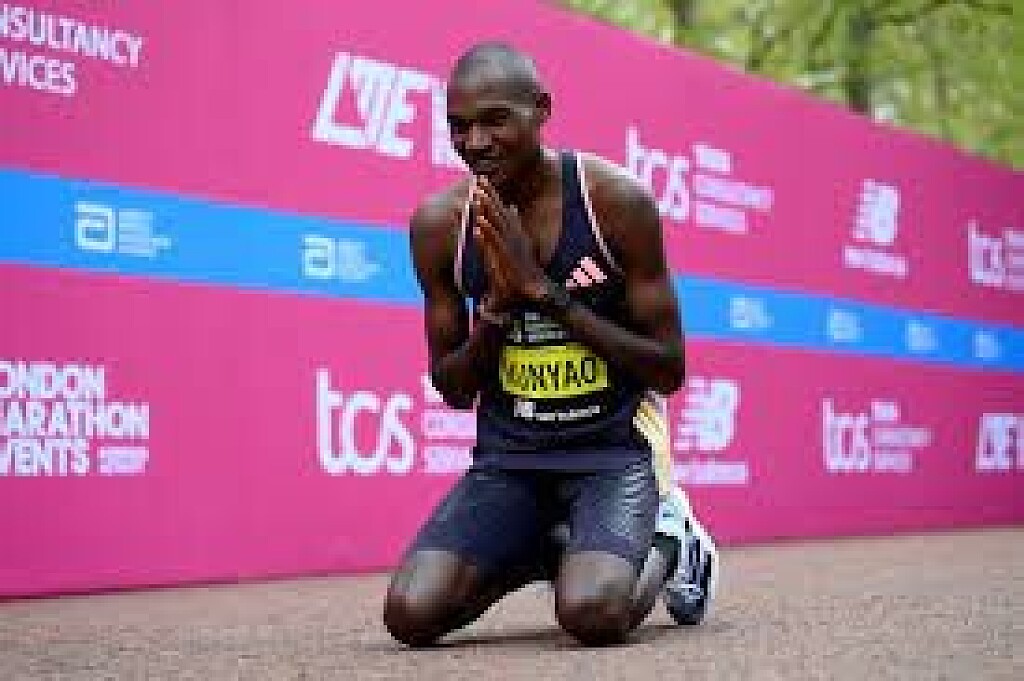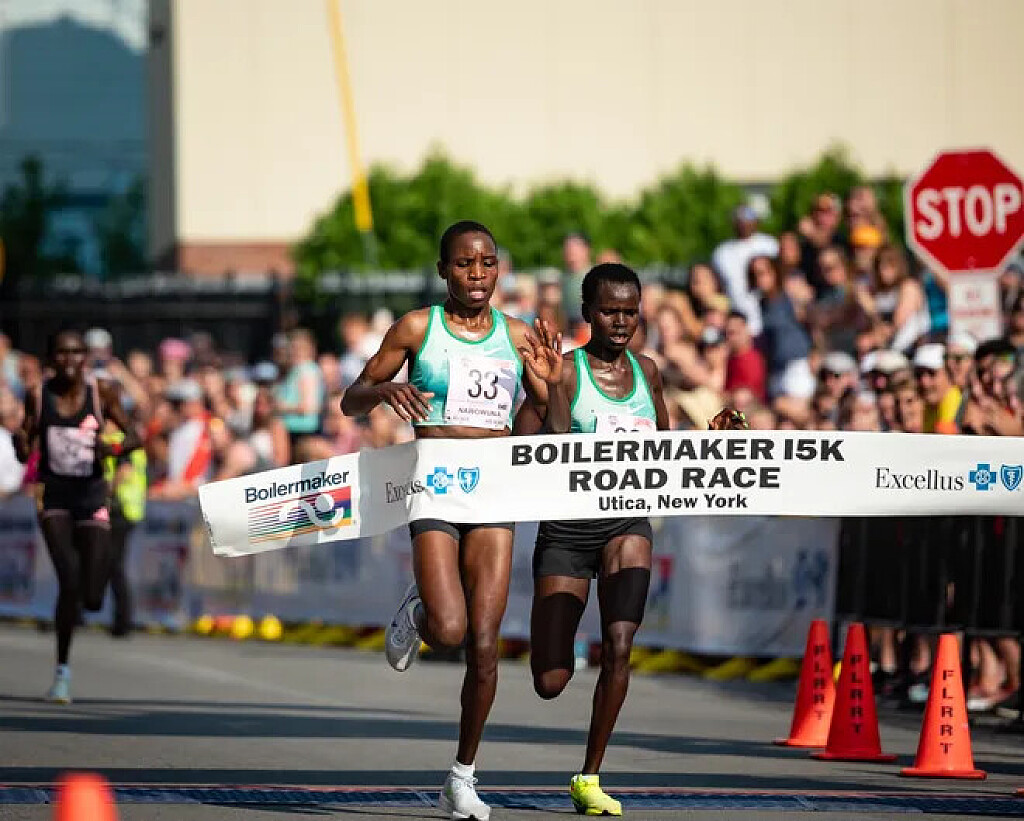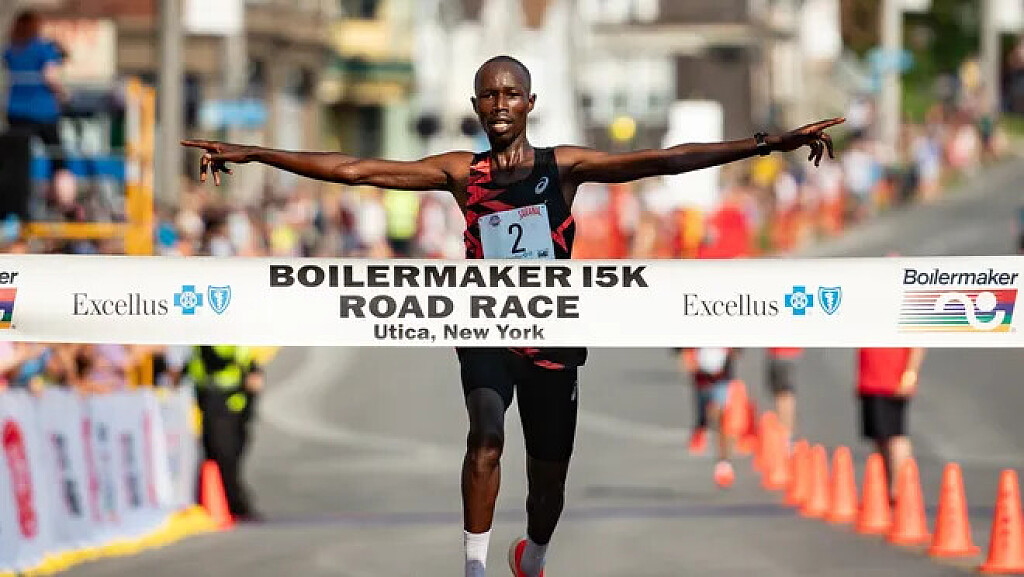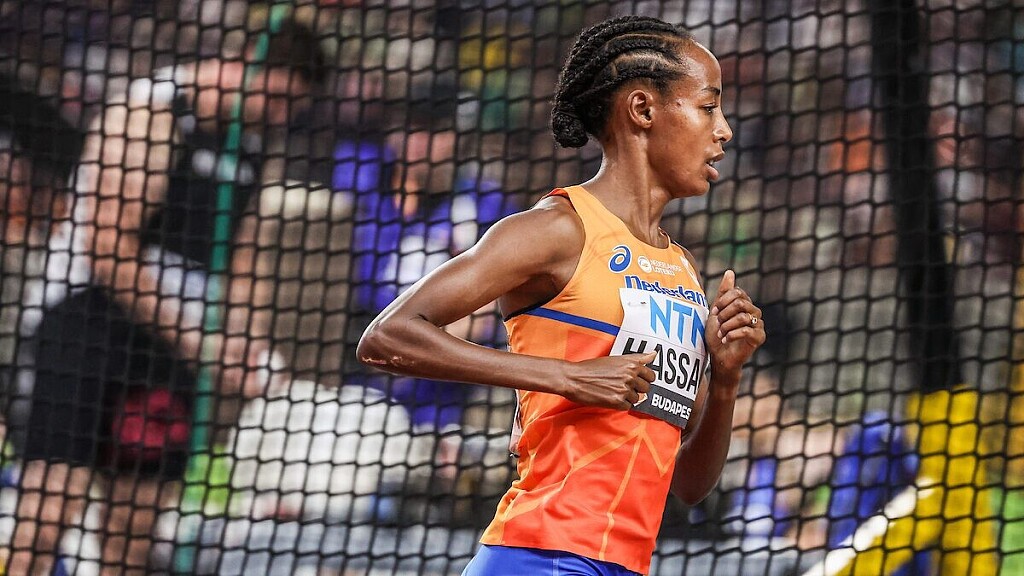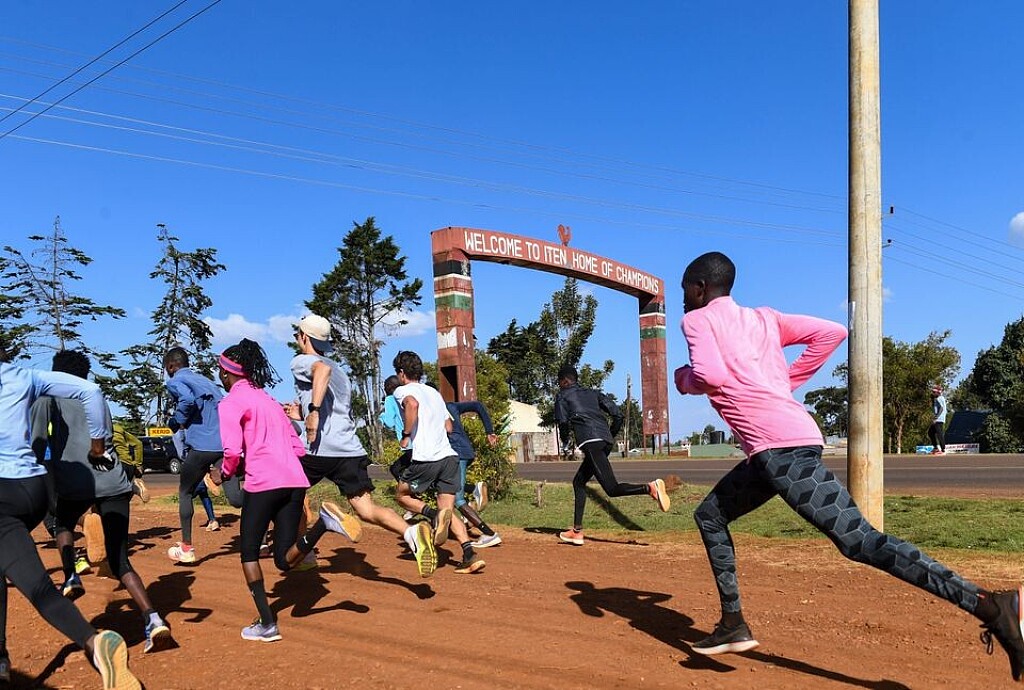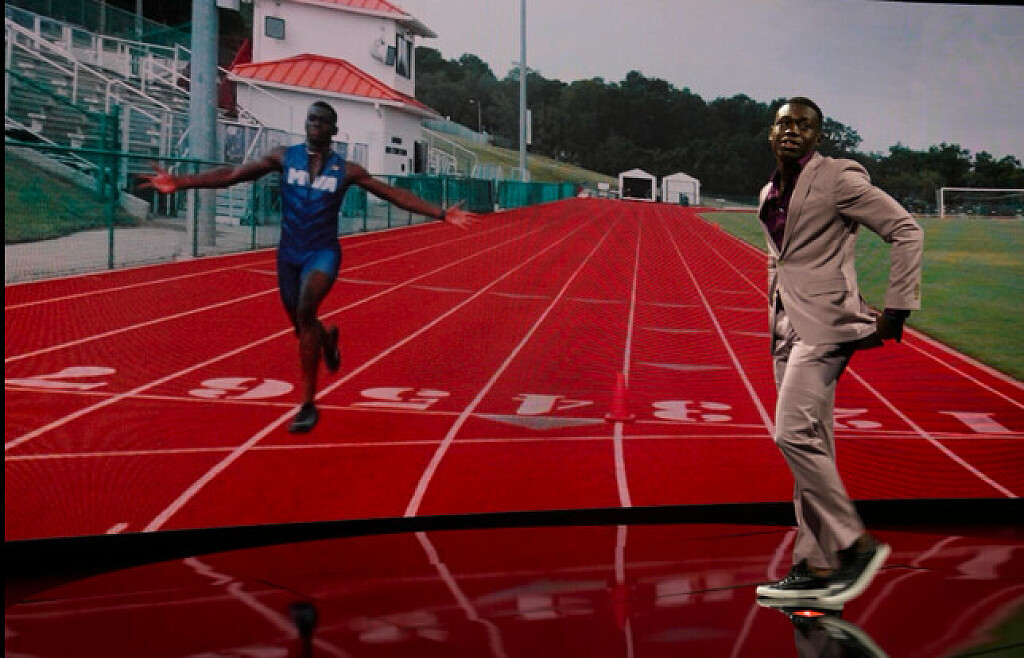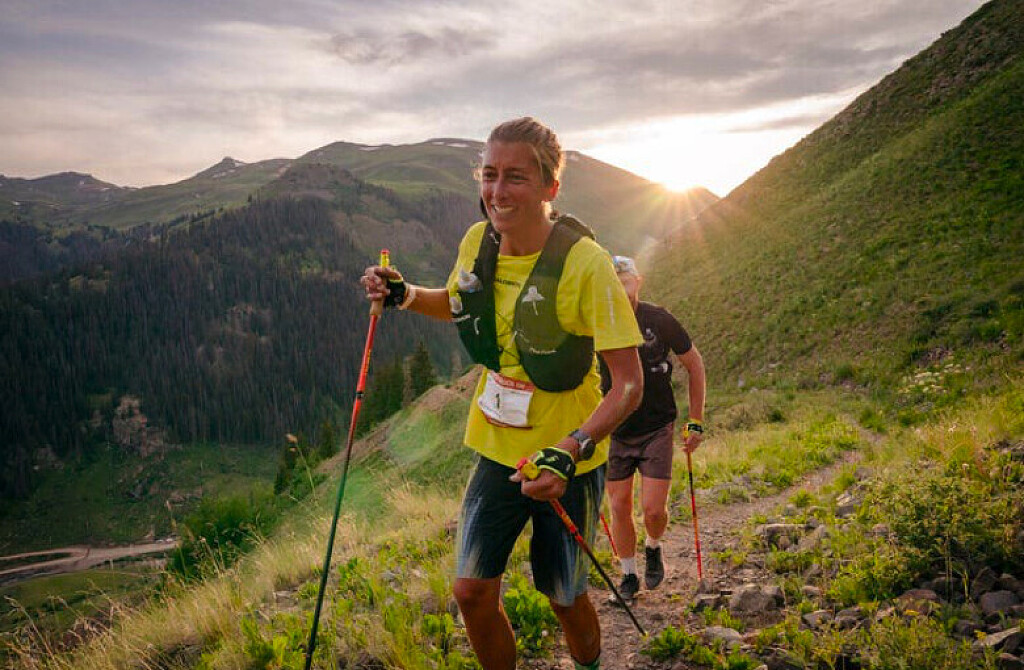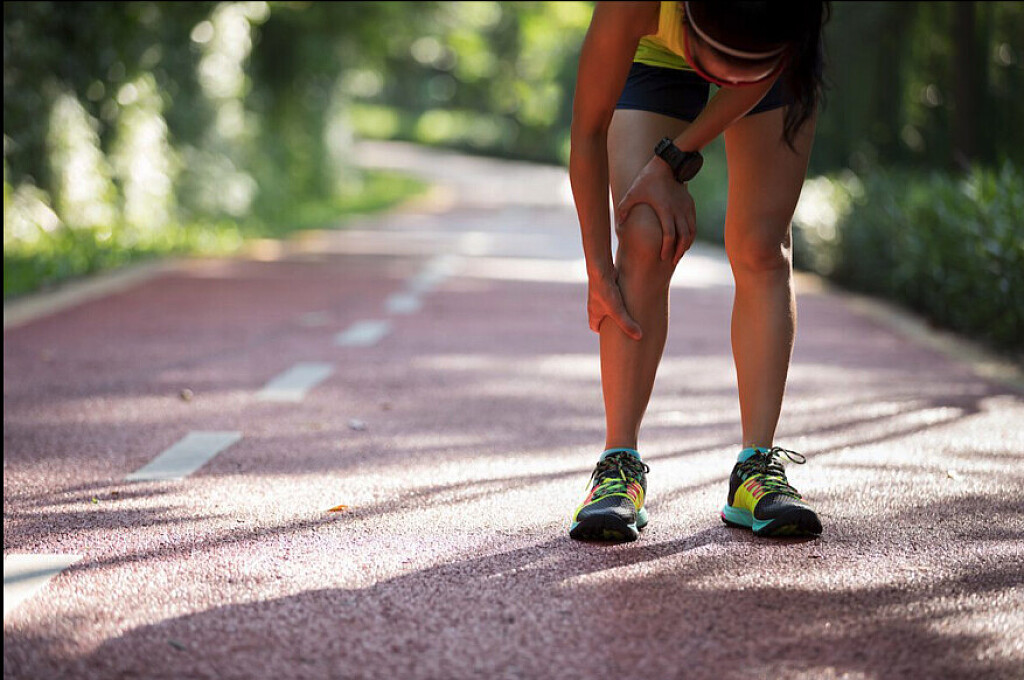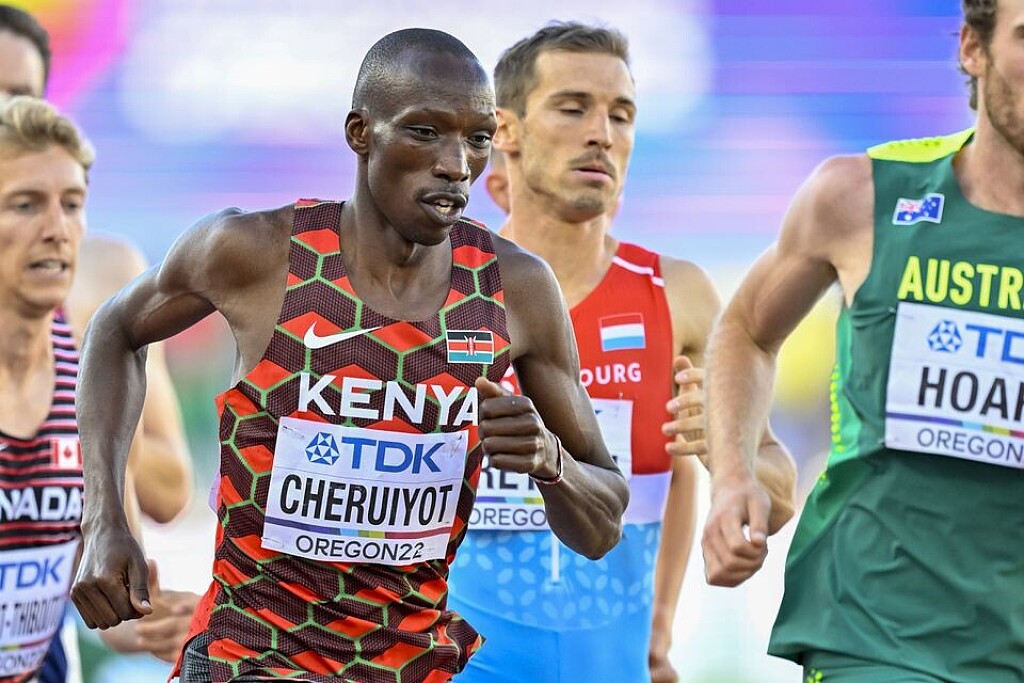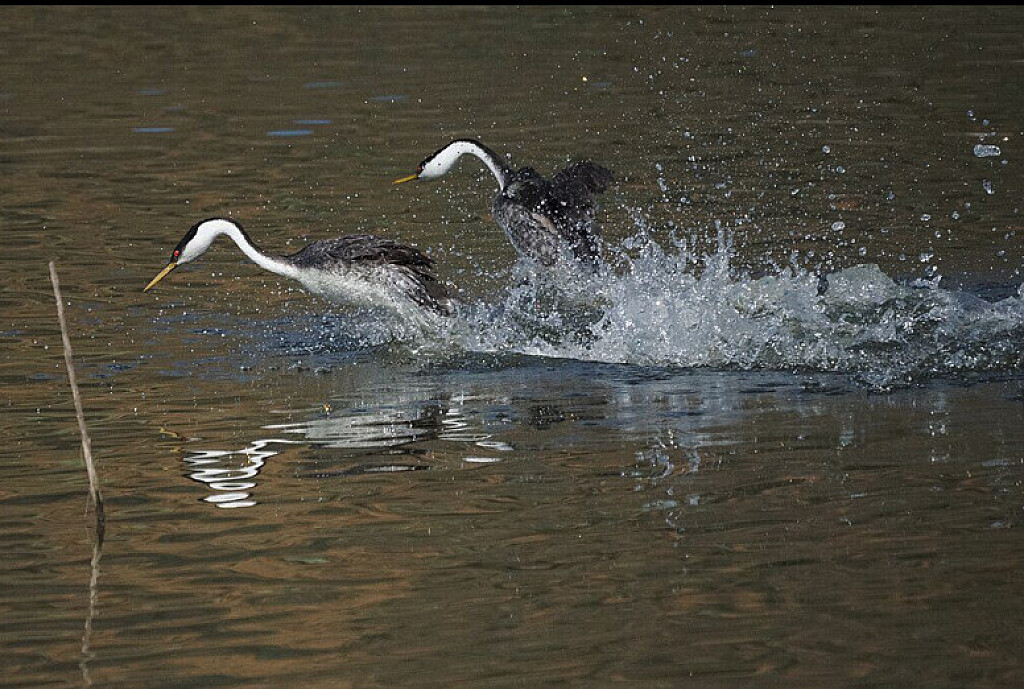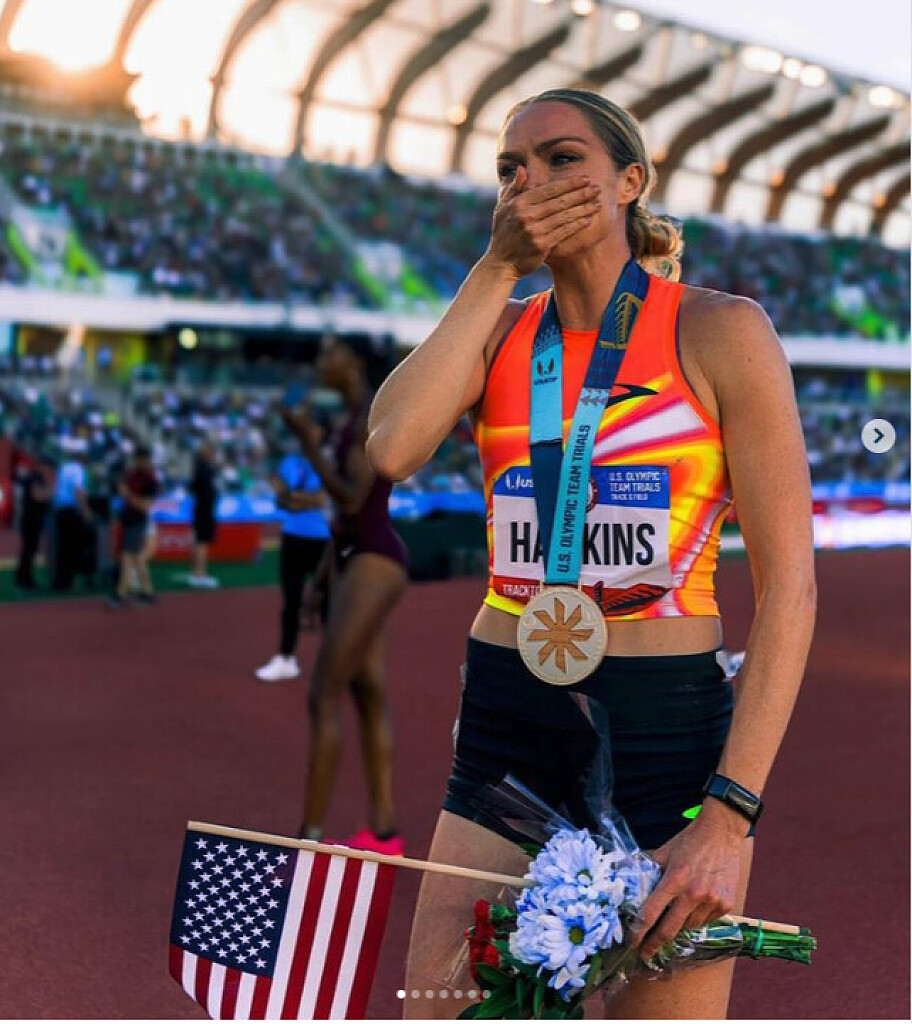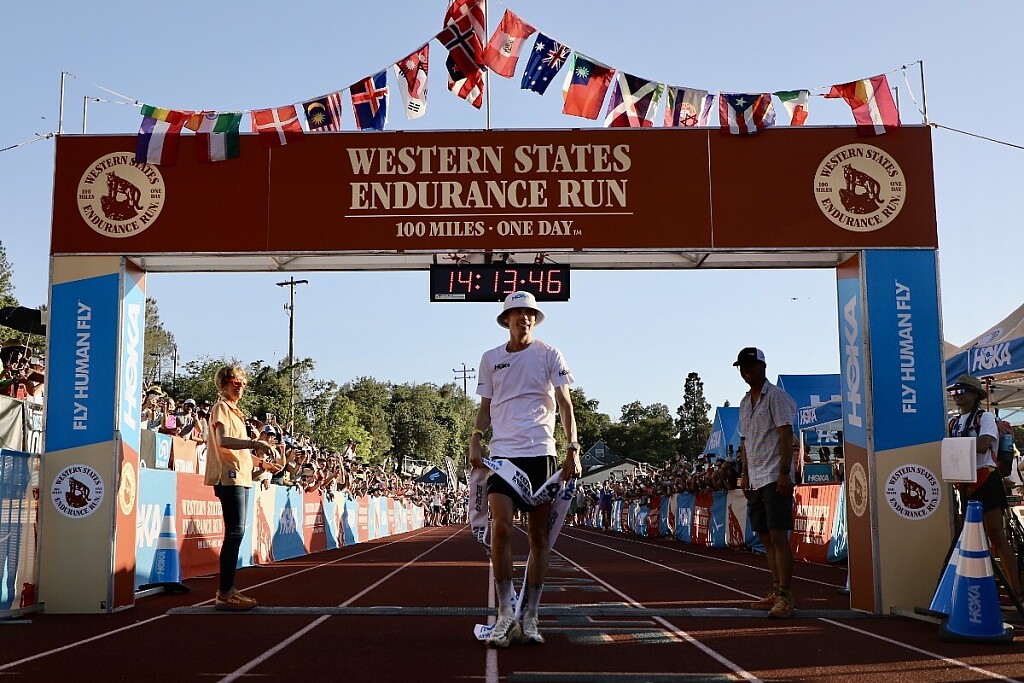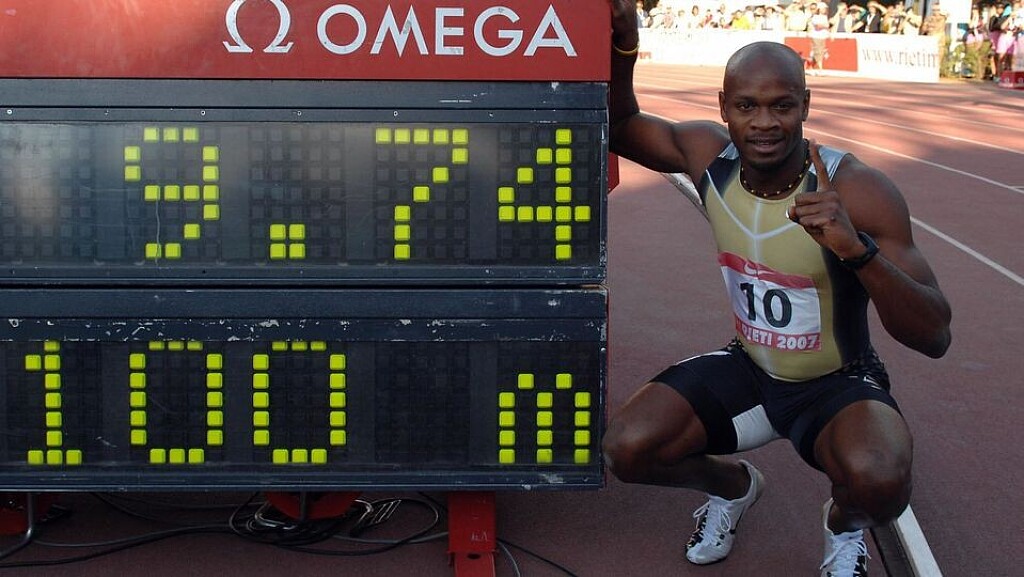Running News Daily
Running News Daily is edited by Bob Anderson. Send your news items to bob@mybestruns.com Advertising opportunities available. Train the Kenyan Way at KATA Kenya and Portugal owned and operated by Bob Anderson. Be sure to catch our movie A Long Run the movie KATA Running Camps and KATA Potato Farms - 31 now open in Kenya! https://kata.ke/
Index to Daily Posts · Sign Up For Updates · Run The World Feed
Paris 2024 Olympics: Veteran mile race Timothy Cheruiyot's counsel to government, Kenyans
The soft spoken 1500m runner will lead the country's charge for medals in probably his final Olympic Games appearance.
The 2019 world 1500m champion Timothy Cheruiyot has requested Kenyan fans and the government to show athletes the respect they deserve.
The 28-year-old explained that most of the time, athletes are treated like nobodies yet they raise Kenya’s flag high on the global scene.
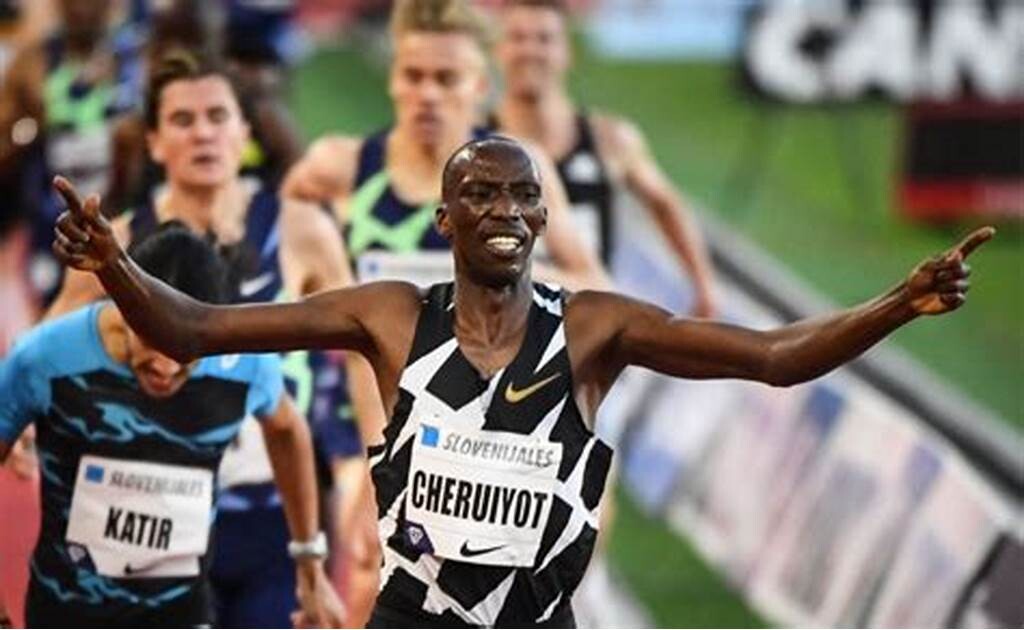
Cheruiyot added that athletes go through several challenges and the last thing they expect is to be treated poorly by their fans. He disclosed that some sleep hungry and suffer challenges in training like getting proper training gear and grounds.
“There are a lot of challenges in terms of training and sometimes food in the camp. When you ask an athlete their background, you will be surprised because some athletes even sleep hungry,” Cheruiyot said on the Safari za Mabingwa show.
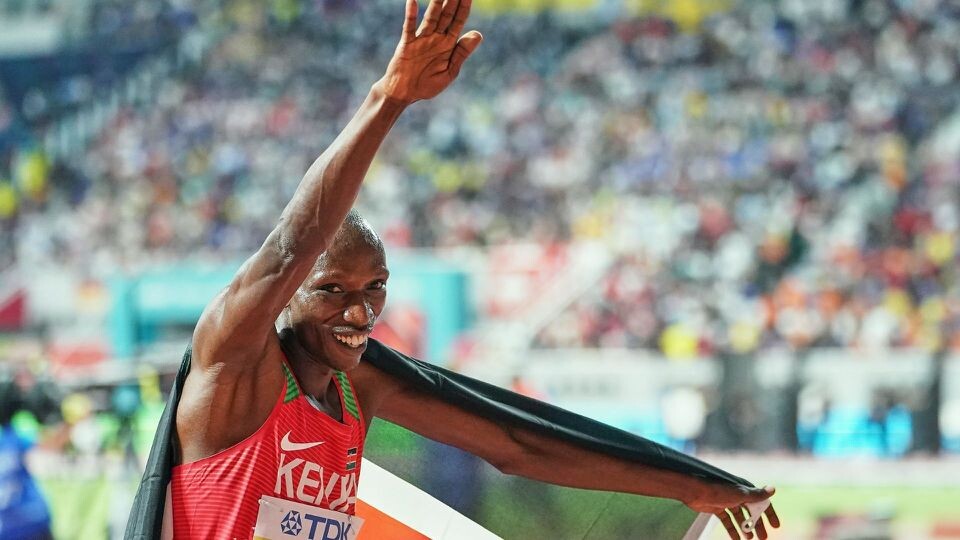
“However, maybe in two years or a year, they fly Kenya’s flag high and I would the like the government and Kenyans to give the athletes the respect they deserve,” he added.
The Olympic Games 1500m silver medallist had a disastrous season last year, finishing ninth in the semifinal of the World Championships in Budapest and failed to proceed to the final.
He recounted how Kenyans on social media came at him and spread rumors that his career was over after the performance.
Little did they know that Cheruiyot had just suffered an injury 10 minutes to the semifinal. However, he was bold enough to show up for and finish the race. He added that Kenyans will always praise an athlete when he/she is winning but the moment things get tough, they always turn their backs on the athletes.
“Last year in Budapest, people said my career was over but I had an injury. I got an injury 10 minutes to the call room since I had a tendon tear and it took time for me to heal. However, my management flew me out and I received treatment,” he said.
“An injury among athletes is something common but you have to take care and ensure you avoid them at all cost. When you don’t perform, people automatically say your career is over without even knowing the challenges you are going through.”
(07/23/2024) ⚡AMP
by Abigael Wafula
Paris 2024 Olympic Games
For this historic event, the City of Light is thinking big! Visitors will be able to watch events at top sporting venues in Paris and the Paris region, as well as at emblematic monuments in the capital visited by several millions of tourists each year. The promise of exceptional moments to experience in an exceptional setting! A great way to...
more...Teenage sprint phenom lowers his U18 world record again
Quincy Wilson, the 16-year-old American track and field phenom, has broken his U18 world record in the men’s 400m for the third time this year. On Friday night in Gainesville, Fla., Wilson ran his final race before heading to Paris to compete on Team USA’s 4x400m relay team, blazing to a jaw-dropping win in 44.20 seconds.
Wilson edged out 2020 Olympic relay gold medalist and 2023 U.S. champion Bryce Deadmon at the finish line by three-one hundredths of a second. His time lowered his previous personal best and world record by nearly half a second, making him the eighth-fastest sprinter in the world this year.
Earlier this month, Wilson became the youngest American male track athlete to be named to the U.S. Olympic Team at 16 and 176 days, surpassing 200m sprinter Erriyon Knighton, who made the U.S. Olympic team at 17 for Tokyo 2020. Wilson just finished his sophomore year (Grade 10) at the Bullis School in Potomac, Md., and reportedly doesn’t even have his driver’s license yet.

Regarding Wilson’s chances of racing in Paris, this record-setting performance complicates the decision for U.S. relay coaches for the 4x400m team. Currently, his time is the third-fastest among the six men on the team. Michael Norman, who is ranked behind Wilson on time, will likely be given the fourth spot ahead of Wilson since he finished ahead of him at the U.S. Olympic Trials in June.
To keep Norman, Quincy Hall and Vernon Norwood fresh for the men’s 400m heats, semis and finals (+ men’s relay), we will likely see Wilson make his Olympic debut in the mixed 4x400m relay on Day 2 of the athletics program.

by Marley Dickinson
Ethiopia set the bar high at the Paris Olympic Games
Ethiopia is well-prepared to win more than four medals at the Paris 2024 Olympics and write a new chapter in the country's athletics history, a senior official of the Ethiopian Olympic Committee said.
Briefing the media in Addis Ababa, the capital of Ethiopia, Ashebir Woldegiorgis, president of the Ethiopian Olympic Committee, said top-performing athletes are leaving for Paris to pick up scores of gold medals from the event.
"We are leaving for Paris to grab as many gold medals in the marathon, 10,000m, 5,000m, and 3,000m steeplechase among other events. We are not going there to lose," said Woldegiorgis in an interview with Xinhua after the briefing.
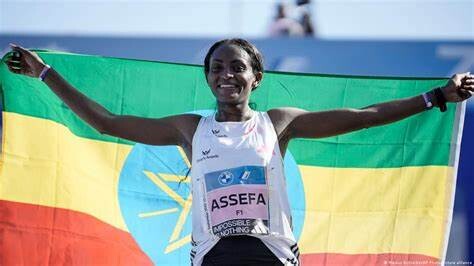
Besides athletics, Ethiopia will also take part in swimming and boxing, among others. Kenenisa Bekele, former world record holder in both 5,000m and 10,000m and Olympic gold medalist at Beijing 2008, will represent the East African country in marathon at the upcoming Olympics. According to the president, the women's marathon event will feature world record-holder Tigist Assefa and three other famous athletes.
Selemon Barega will defend his 10,000m title and also compete in the 5,000m event, while current women's world record holder for 5,000m Gudaf Tsegay will enter both the women's 5,000m and 10,000m races in Paris.

World record holder Lamecha Girma, along with three others, will compete in the 3,000m steeplechase after securing silver in the Tokyo 2020 Olympics.
"We are ready to win. We have made good preparations," Woldegiorgis told Xinhua, noting that it won't be easy to compete with athletes coming from all over the world.
Ethiopia won four medals, including one gold, at the Tokyo 2020 Olympics. The president said this time confidence is high and Ethiopia will by far, surpass its four medals earned at the Tokyo 2020 Olympics.
(07/23/2024) ⚡AMPby Xinhua News
Paris 2024 Olympic Games
For this historic event, the City of Light is thinking big! Visitors will be able to watch events at top sporting venues in Paris and the Paris region, as well as at emblematic monuments in the capital visited by several millions of tourists each year. The promise of exceptional moments to experience in an exceptional setting! A great way to...
more...Muhumed, Smith win USATF 8K road titles at Crazy 8s 8K Race
The Crazy 8s 8K Race has been a staple in Northeast Tennessee for decades. Saturday night, however, marked the first time it would serve as the USA Track & Field 8K road race championship for both men and women.
The competition did not disappoint in the humidity of the Model City.
Warren, Bayless inducted into Tennessee Sports Hall of Fame
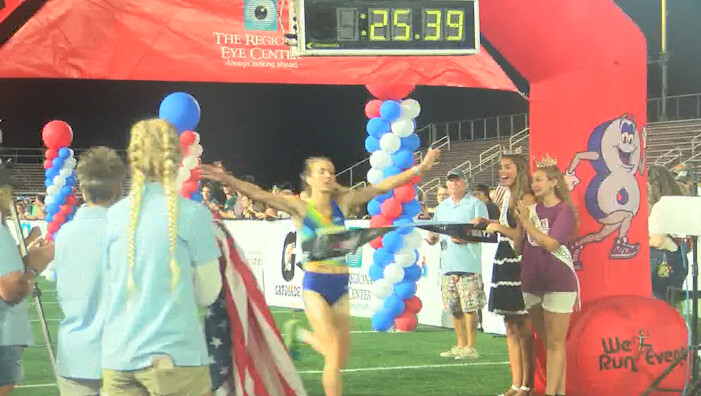
The elite start went off just after 9 p.m. ET, with the finish remaining just as tight as the starting line. Ahmed Muhumed crossed the finish line first, arms outstretched, in a time of 22:26 to claim the men’s 8K road race championship.
The former Boise State and Florida State star missed out on the 2024 Summer Games, but earned a confidence-boosting win in Tennessee.
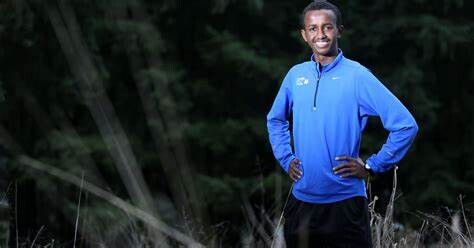
“I haven’t won any national titles – I came second in the 5K in New York,” he said. “The time – when I saw it I said ‘no way I just did that.’ It’s something that I can only dream of in terms of it being up there. But I didn’t really – I talk about splits on my watch, but I did not care about what pace I was running. It was all about competing and staying with the front guys.”
Isai Rodriguez finished just one second behind (22:27) in second place, while Hillary Bor claimed bronze with a time of 22:34.
In the women’s competition, former U.S. Olympian and World Championships participant, Rachel Smith, earned herself an 8K road race title with a time of 25:40.
“Any time you can win a national championship title, it’s so special,” she said. “I definitely don’t take any of these for granted, especially as I’m getting older. It’s always an honor to win a national championship title.”
Emma Grace Hurley took the silver on the women’s side with a time of 25:58, as Natosha Rogers turned in a 26:11 for third place.
Muhumed and Smith claimed a $5,000 prize and the title for their efforts, but said running in the Model City is a memory they’ll take with them, as well.
“This is one of the best environments I’ve been in, in terms of racing,” Muhumed said. “Just grateful for the City of Kingsport and the Tri-Cities and everybody who is out here supporting.”
“The hospitality and the event was so, so awesome,” Smith said. “I really enjoyed being here and I hope to come back again.”
(07/22/2024) ⚡AMPby Nick Dugan
Crazy 8s 8k Run
Run the World’s Fastest 8K on the world famous figure-8 course on beautiful candle-lit streets with a rousing finish inside J. Fred Johnson Stadium. Crazy 8s is home to womens’ 8-kilometer world record (Asmae Leghzaoui, 24:27.8, 2002), and held the men’s world record (Peter Githuka, 22:02.2, 1996), until it was broken in 2014. Crazy 8s wants that mens’ record back. ...
more...Defending champions return to Bix
Kellyn Taylor and Biya Simbassa each ran the Quad-City Times Bix 7 for the first time last year.
They clearly loved the course, the atmosphere and just about everything about the annual race through the streets of Davenport.
Both Taylor and Simbassa held off late challenges from other runners, both ran the sixth best Bix 7 times ever by a U.S. athlete of their gender and both plan to return to defend their championships when the race is held for the 50th time on July 27.
It marks the first time in 12 years that both the men’s and women’s champions are returning to defend their Bix titles.
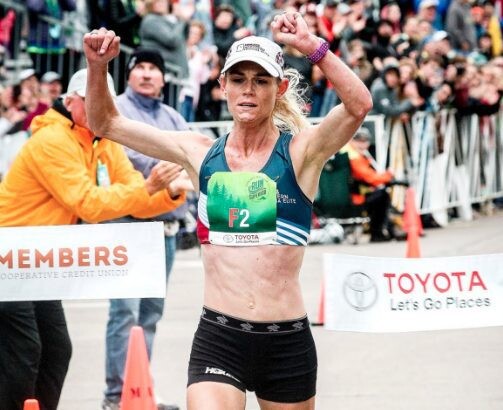
Simbassa admitted he wasn’t really sure how he felt about the Bix 7 course last year when he first saw the endless array of ups and downs in the course. But after holding off Olympian Clayton Young to win, he liked it.
“I mean, now I do,’’ he said after his victory. “It’s a course that’s all about strength and I train for this."
Taylor went through a similar transformation.
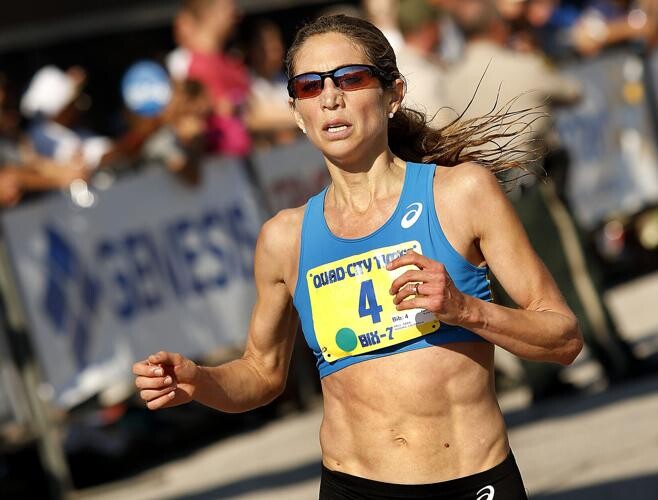
“When I saw the course, I was like, ‘Oh, no. What did I get myself into?’ ” she said. “That’s a super substantial hill right at the beginning and then it rolls all the way through. It’s certainly not easy by any means. I think that works to my favor since I’m more of a strength runner.”
Taylor appreciated more than just the hills.
“The crowds were amazing,” she said. “It’s not what I expected at all — the streets were completely lined, and a race that isn’t a huge marathon, I don’t feel like you see that that often. The crowds were incredible.”
Taylor and Simbassa will be bidding to repeat as Bix 7 champions, something that has been done only seven times in the race’s history, four times by men, three times by women.
Both runners failed to land berths on the U.S. Olympic team, which would have precluded a return to Bix, but they’ve still used their 2023 victories as a springboard to additional success.
Taylor briefly led the New York City Marathon last November before placing eighth, making her the top American finisher in the race. It was the third time she has been in the top eight at New York.
The Wisconsin native, who will turn 38 a few days before the Bix 7, then focused her attention on making the U.S. Olympic team and made a respectable showing in the trials in the marathon, finishing 15th, and the 10,000 meters, placing sixth.
Simbassa, a 31-year-old native of Ethiopia who now lives in Flagstaff, Arizona, attempted to earn an Olympic spot in the marathon but placed 11th in the trials.
However, he has followed that with an ambitious schedule on the U.S. road racing circuit, recording top-five finishes in the Bolder Boulder 10k (5th), Cherry Blossom 10-miler (5th), Gate River 15k (4th), Amway River Bank 25k (3rd) and Houston Half-marathon (4th).
Also included in the field are four former Olympians and nine other runners who have placed in the top 10 at the Bix 7 in the past. Elite athlete coordinator John Tope said even more top runners could be added between now and race day.
Among the top men’s entries are two former Iowa State University standouts.
Wesley Kiptoo of Kenya was the 2021 NCAA indoor 5,000-meter champion and a seven-time All-American for the Cyclones. He was seventh in the Bix 7 two years ago and won the Cherry Blossom 10-miler earlier this year.
Hillary Bor, a Kenya native who is now an American citizen, also attended Iowa State before representing the U.S. in the 3,000-meter steeplechase at the Olympics in both 2016 and 2021. He also is the U.S. record-holder in the 10-mile run.
Other former Olympians in the field are Morocco’s Mohamed El Aaraby and Americans Jake Riley and Shadrack Kipchirchir. Riley and Araby both competed in the marathon in Tokyo in 2021 and Kipchirchir ran the 10,000 meters in 2016.
Riley also is a Bix 7 veteran along with Kenya’s Reuben Mosip and Americans Frank Lara, Andrew Colley and Isai Rodriguez. Lara was second in the Bix 7 in 2021 and eighth a year ago.
Rounding out the men’s field are Raymond Magut of Kenya; Tsegay Tuemay and Tesfu Tewelde of Eritrea; and Americans Nathan Martin, Ryan Ford, JP Trojan, Merga Gemeda and Titus Winders.
The most recognizable name in the women’s field is 41-year-old Sara Hall, the wife of two-time Olympian, U.S. half-marathon record-holder and 2010 Bix champion Ryan Hall. Sara Hall was fifth in the U.S. Olympic marathon trials earlier this year and has two strong Bix 7 efforts on her resume, placing second in 2014 and third in 2017.
She and Taylor will be challenged by three up-and-coming runners from Kenya — Emmaculate Anyango Achol, Grace Loibach Nawowuna and Sarah Naibei. Achol has run the second fastest women’s 10k ever (28:57) and Naibei won the Lilac Bloomsday 12k in May.
Also in the field are Bix 7 veterans Kassie Parker, Jessa Hanson, Carrie Verdon and Tristin Van Ord along with Americans Annmarie Tuxbury and Stephanie Sherman, Ethiopia’s Mahlet Mulugeta and Kenya's Veronicah Wanjiru.
The elite field also includes four legendary runners who have helped build the Bix 7 into the international event that it is. Two-time champion Bill Rodgers, who has run the Bix 7 43 times, will be joined by four-time women’s champion and 1984 Olympic gold medalist Joan Samuelson, two-time Olympic medalist Frank Shorter and Meb Keflezighi, who has two Bix titles and an Olympic silver medal on his resume.
(07/22/2024) ⚡AMPby Don Doxsie
Bix 7 miler
This race attracts the greatest long distance runners in the world competing to win thousands of dollars in prize money. It is said to be the highest purse of any non-marathon race. Tremendous spectator support, entertainment and post party. Come and try to conquer this challenging course along with over 15,000 other participants, as you "Run With The Best." In...
more...Daniel Simiu aware of tough competition as he gears up for full marathon debut in Chicago
Daniel Simiu has shifted focus to making his full marathon debut later this year after missing out on the Olympic Games 10,000m team to the Olympics.
Daniel Simiu is bracing up for a tough show as he eyes a successful full marathon debut at the Chicago Marathon scheduled for Sunday, October 13.
The world 10,000m silver medalist noted that it is a new venture and he will approach the race with respect. He added that is a rare opportunity for athletes to make their debuts in a World Marathon Major and expressed gratitude to the race organizers and his sponsors, Nike, for the opportunity.
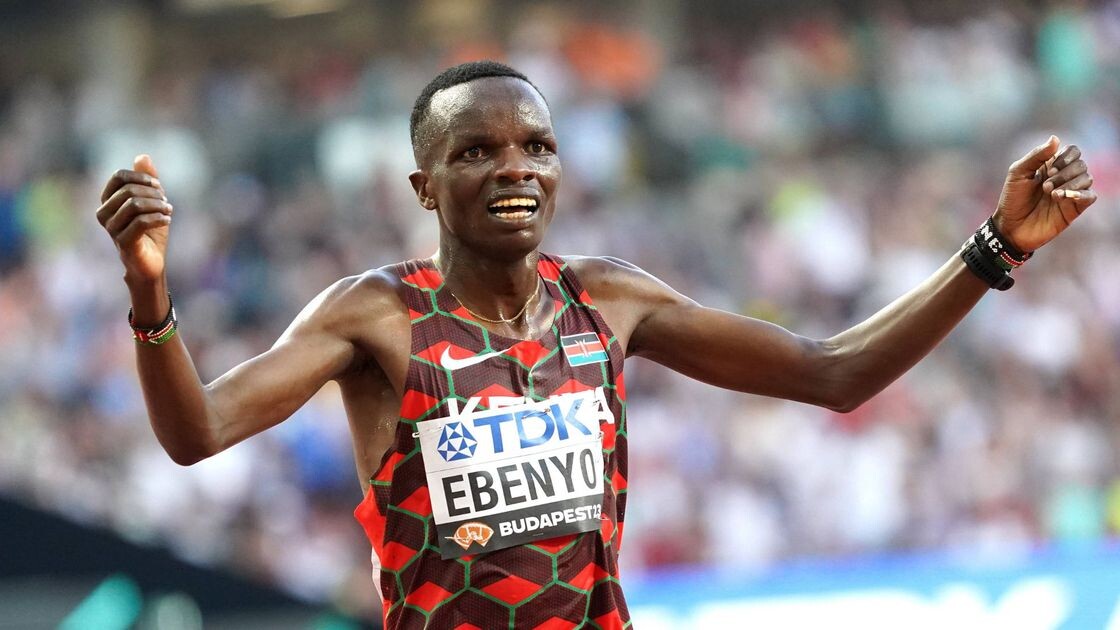
Simiu will be hoping to impress and hopefully finish the race successfully without any major challenges noting that it is a longer distance and not what he is used to.
“I’m much more excited to be a part of the Bank of America Chicago Marathon and I know it’s very tough and it’s a very long distance because it is 26.2 miles,” Simiu said.
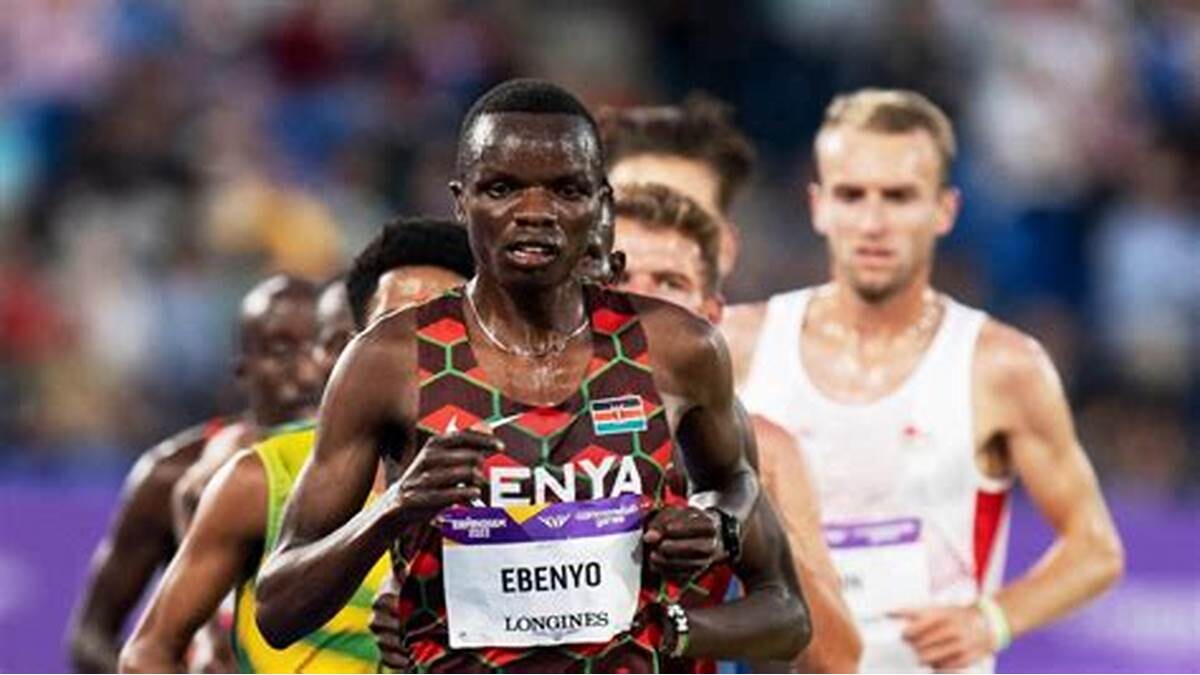
“I will be approaching the marathon with huge respect because I’m new there and I hope to do my best. Starting with the world majors is exciting and it’s not for everybody to be there but I thank the organizers for giving me a chance and the Nike running group and I know it has big names but my name is also big,” Simu added.
The 28-year-old was hoping to make the Kenyan Olympic team in the 10,000m but encountered a visa hitch that saw him arrive in the US for the Prefontaine Classic a few hours to the race.
During the race, he fell and could only afford an eighth-place finish in 27:24.33. The top two athletes were guaranteed a spot in the Olympic team but the third athlete would be selected at the discretion of the selection panel.
Athletics Kenya decided to pick the top three athletes who crossed the finish line, meaning Daniel Mateiko, Nicholas Kimeli and Bernard Kibet would fly Kenya’s flag high.
Following his exclusion from the team, Simiu has now shifted focus to making the full marathon debut at the Chicago Marathon.
(07/22/2024) ⚡AMPby Abigael Wafula
Three workouts to help you cruise to a half-marathon PB
Whether you’re an experienced half-marathoner or taking on the 21.1K challenge for the first time, the right workouts can be a game-changer. To help you speed past a PB and cross the finish line faster, we’ve lined up three essential training sessions designed to elevate your speed, endurance and overall race performance.
The half-marathon distance demands a balance of stamina and speed endurance—the ability to maintain a fast pace over a longer stretch. Incorporating a mix of short, intense workouts with longer, steady, tempo runs will build the strength and pace you need to conquer this challenging race.
1.- Speed building session
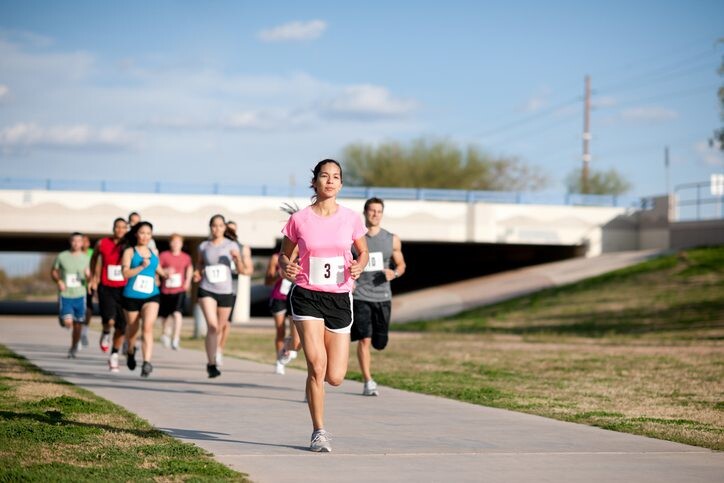
Warm up with 10-15 minutes of easy running.
Run 4 x 1-2 kilometers at 10 seconds slower than your 10K pace (or a hard effort that you can sustain for around an hour) with 60 seconds rest after each interval.
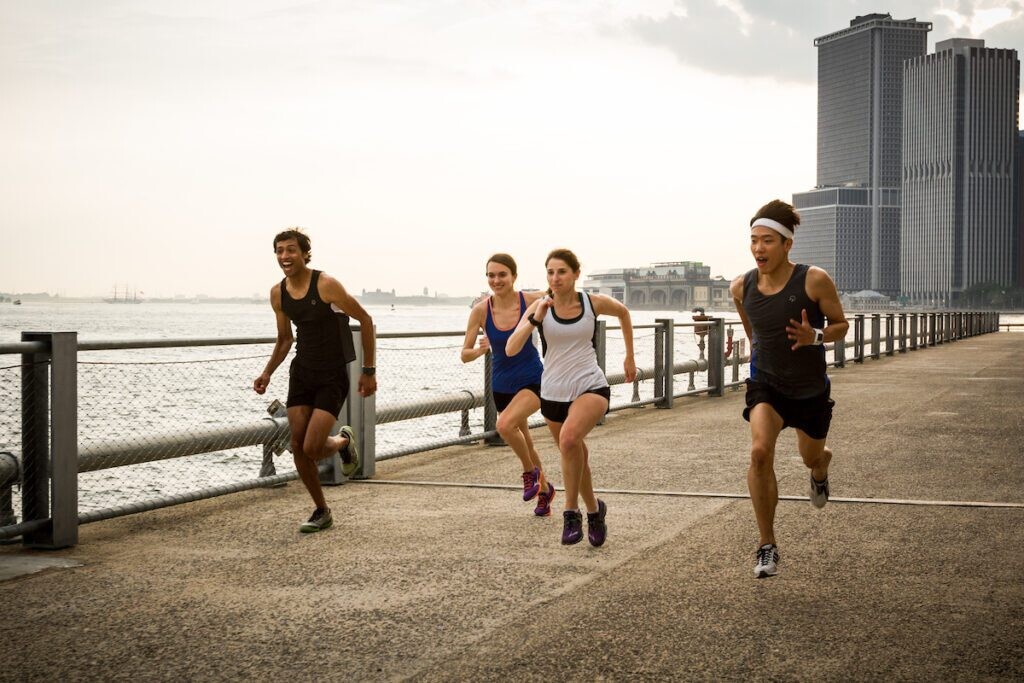
Cool down with 10 minutes of easy running.
As you gain strength, increase the distance in each interval, while maintaining the 10K pace throughout.
The half-marathon tempo run
A tempo run is a high-intensity, sustained run designed to be tougher than your longer, steady runs. While there are many variations of tempo runs, they all share one key element: a focus on consistent, controlled pacing to push your limits and boost your performance.
2.- Shorter tempo intervals
Warm up with 5-10 minutes of easy running.
Run 3-5 repeats of 6-8 minutes at a 10K pace, with 1.5-2 minutes of recovery time after each interval.
Cool down with 10 minutes of easy running.
3.- Longer tempo repeats
Warm up with 5-10 minutes of easy running.
Run slightly under your goal race pace for 9-10K (close to half of your race-day distance).
Cool down with 5-10 minutes of very easy running.
As you gain strength, you can progress this workout by adding distance or increasing your pace slightly. Alternatively, shorten the distance if 9-10K is too far for you right now.
Make sure to take a recovery day, or a very easy running day, after speedwork sessions like these ones, and hydrate before, after and during your workout, especially in the summer heat.
(07/22/2024) ⚡AMPby Keeley Milne
Edwin Kurgat confident of ending Kenya's 36-year wait for Olympics 5,000m title
Little-known Edwin Kurgat is inspired by his London Diamond League performance to win the 5,000m Olympics title that the country last claimed in 1988 Seoul Games.
Edwin Kurgat is now ready to stun the masses at the Paris Olympic Games and reclaim Kenya’s gold medal in the men’s 5000m following his London Diamond League Meeting third-place finish.
Kurgat, competing in the men’s 3000m, crossed the finish line third in 7:28.53 as Dominic Lobalu set a Swiss record, clocking a personal best time of 7:27.68 to win the race. Grant Fisher finished second in the hotly-contested race, clocking 7:27.99.
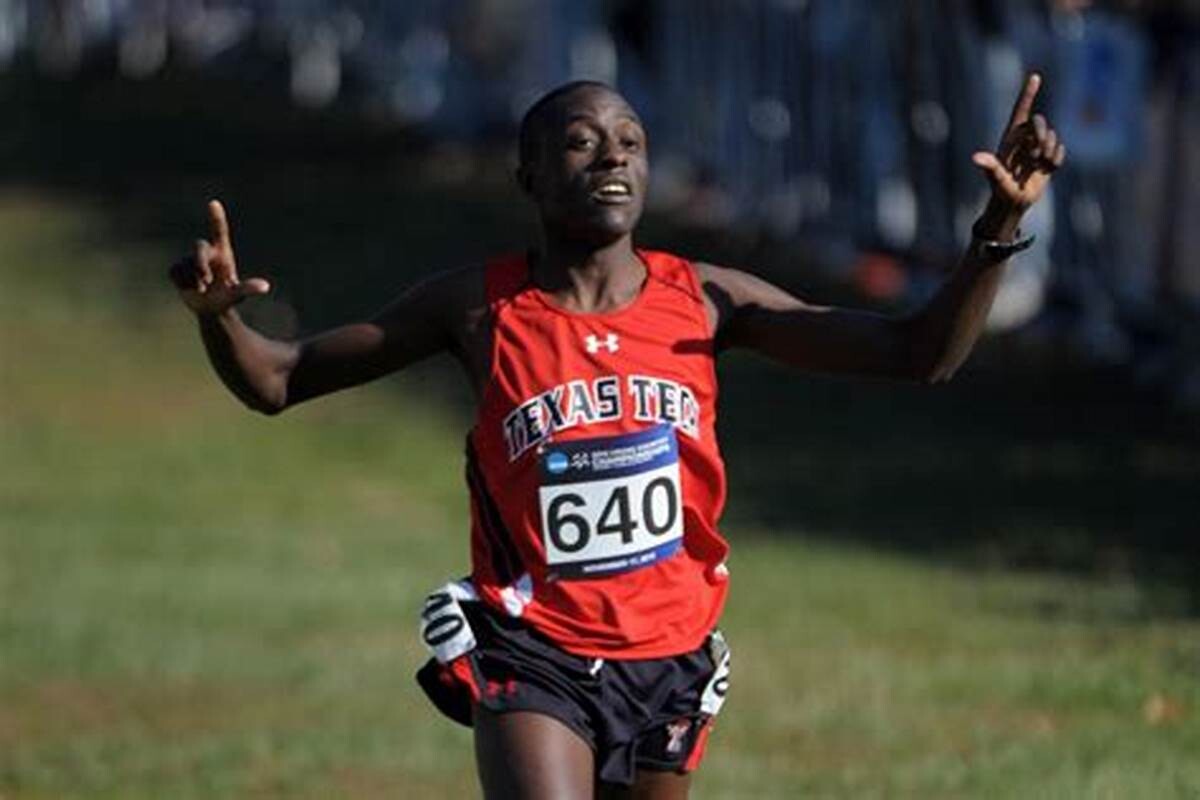
Kurgat admitted that the race is very vital as he heads to the Olympic Games. He disclosed that throughout the race, his body was feeling good and going under 7:30 is a sign of fireworks at the Olympic Games.
The last time Kenya won a gold medal at the Olympic Games in the men’s 5000m was at the 1988 Seoul Olympic Games courtesy of the late John Ngugi.
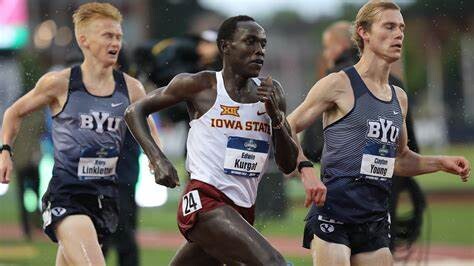
“Throughout the race I was feeling good, really composed. This was the race where I wanted to run good to get ready for the Olympics so I'm glad with how I ran,” Kurgat said.
“I'm feeling confident going in to Paris, running under 7:30 is a big achievement for me and now I'm just ready for what's to come. The crowd was amazing, they helped push me to get it finished,” he added.
The 28-year-old has been impressive this season, starting from his indoor campaign to the outdoor races. He opened his season with the 3000m and 5000m indoor races at the New Balance Indoor Grand Prix and Boston University John Thomas Terrier Classic respectively finishing second and first.
Kurgat finished fourth in the men’s 10,000m at the Prefontaine Classic, missing out on the Olympic team shortly but bounced back in the 5000m to finish third and automatically qualify for the event.
(07/22/2024) ⚡AMPby Abigael Wafula
Paris 2024 Olympic Games
For this historic event, the City of Light is thinking big! Visitors will be able to watch events at top sporting venues in Paris and the Paris region, as well as at emblematic monuments in the capital visited by several millions of tourists each year. The promise of exceptional moments to experience in an exceptional setting! A great way to...
more...The Research on Beetroot Supplements and Exercise Is Kind of Awesome
But let's get to the root of the actual science.
SUPPLEMENT MAKERS ADVERTISE that their powdered beets support your heart and make workouts easier.

Beetroot powder is available as a standalone product, though it also pops up in a bunch of other supplements, such as pre-workout energy boosters and heart health chews, as an added ingredient.
Supplement companies claim beetroot powder boosts energy, increases athletic performance, and promotes heart health by improving blood pressure and circulation. Often, these companies will cite beets’ ability to boost nitric oxide, a molecule that helps blood vessels expand and contract.
Let's get to the root of those claims.
What Is Beetroot Powder?
IT'S BEETS, BUT in powder form.
And know that beets, as in the root vegetable, are good for you—no debate there. “Beetroot contains two types of bioactive constituents, betalains (which give the purple color) and nitrate (which also occurs in similar amounts in some other common vegetables, like celery and lettuce),” says Kirsten Brandt, Ph.D., senior lecturer at the Human Nutrition & Exercise Research Centre at the UK’s Newcastle University. Betalains have heart-protecting properties, and your body converts nitrate into nitric oxide to help regulate your circulatory system and reduce inflammation.
More good news: These compounds stay mostly intact when beets undergo processing into powder or even juice. Concentrations vary by beet variety and processing method, but research suggests both powders and juices can both hold onto in those beneficial compounds. (Fun fact: Often, beetroot powder is just freeze-dried beet juice).
What Is Beetroot Powder Good For?
IN SUPPLEMENT FORM, beets might:
Moderately Reduce Blood Pressure
A study review published in Frontiers in Nutrition showed that people who consumed beetroot juice daily for anywhere from three to 60 days reduced their systolic blood pressure by five more points than the control group. The reason: Nitric oxide helps blood vessels relax.
Make Hard Workouts Easier
A study review in the Journal of the International Society of Sports and Nutrition suggests that beetroot juice supplements might boost power and improve performance during high-intensity exercise. Again, nitric oxide comes into play by helping your muscles maintain phosphocreatine, a building block that otherwise depletes during a hard workout. Beets also improve the release and use of cellular calcium to help you contract muscles faster.
Improve Muscle Recovery
A study review published in Sports Health suggests that a few days of beetroot supplementation can speed recovery from post-workout muscle soreness. One theory is that nitric oxide reduces muscle inflammation and aids regeneration.
Assist Your Memory
In a recent study in the European Journal of Nutrition, people who consumed three grams of chewable beetroot powder tablets 90 minutes before taking memory tests scored 21 percent higher on a test of short-term memory than they did after taking a placebo. A beet-induced boost in nitric oxide might increase cerebral blood flow, temporarily boosting brain power, the researchers say.
So the benefits of beets are promising, but don’t get too excited yet: Beet supplement studies have small numbers of participants (just five to 80 in the studies cited above) and lack the rigor of drug trials, says Brandt. (A phase III drug trial would likely have 1,000+ participants.)
That means it’s hard to generalize the results and conclude whether the benefits shown in these supplement studies would apply to all or most of the population, including you.
And don’t count on beetroot supplements to save your heart in the long run. There’s no evidence that the acute benefits of beetroot powder, for your heart or elsewhere, add up over time.
Without high-quality long-term studies, any claims implying long-term benefits can’t be verified. And since the good-for-you compounds in beets can’t be patented, “there is little economic incentive for the industry to carry out large well-controlled trials,” says Brandt.
Should You Take Beetroot Supplements?
YOUR BEST BET is eating more beets in their whole vegetable form, says Brandt.
Whole beets contain beneficial fiber, which some supplements lack. Now if you hate the taste or can’t bear the chore of peeling beets, the powder can be an easy substitute–just make sure you consume other foods rich in fiber, like whole grains, says Brandt.
What Should You Look for in a Good Beetroot Supplement?
WHEN SHOPPING FOR beet powder, avoid capsules and opt for a loose powder or chewable option instead. The process of converting nitrate to nitric oxide begins in your mouth, thanks to an assist from bacteria on your tongue, says Brandt. Capsules bypass this process and land further down in your digestive tract. And skip antibacterial mouthwash before you take your beets—it can interfere with nitrate’s conversion to nitric oxide, she says.
Who Should Not Take Beetroot Supplements?
AVOID BEETROOT SUPPLEMENTS if you already have hypotension and don’t need your BP to go any lower. And steer clear of beetroot powder if you know you have a high risk of kidney stones, because beets contain a lot of stone-forming oxalate.
If you have high BP and already take medication for it, talk to your doctor before buying a beet supplement. If it works, your doctor might need to adjust your medication, says Brandt.
(07/21/2024) ⚡AMPBMI Is a Controversial Measure of Health Outcomes—a New Study Suggests a Better Method
It’s not all about height and weight.
New research suggests incorporating waist circumference into how we predict health outcomes, instead of relying on BMI.
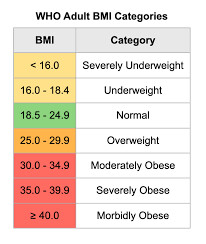
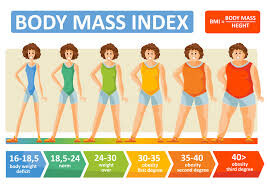
Study authors say BMI does not take into account muscle mass or the links between abdominal fat and poorer health, among other downfalls of the measurement.
In an effort to understand how body composition affects health, most medical professionals and researchers still use the body mass index (BMI), but this has always been a problematic and controversial method when actually applied to individuals, rather than large populations. For example, commentary in the British Journal of General Practice, published back in 2010, called use of BMI unethical, overly simplistic, and potentially harmful to a significant proportion of patients.
A new study in JAMA Network Open assessed a possible pivot toward a different measurement tool: the body roundness index, or BRI. In addition to weight and height (which is all that the BMI includes), the BRI considers waist circumference because that can more comprehensively reflect visceral fat distribution, according to the study’s lead author Xiaoqian Zhang, M.D., at Beijing University of Chinese Medicine in China.
In the cohort study involving nearly 33,000 U.S. adults, researchers looked at the association between an increase in BRI from 1999 to 2018 and the significant rise in all-cause mortality (particularly cardiometabolic disease, kidney disease, diabetes, and cancer) during the same period.
More abdominal fat has been linked to higher risk of these conditions because this type of fat is often visceral, which means it wraps around your organs instead of sits just under the skin. That means it can increase inflammation and drive more chronic diseases, Zhang told Runner’s World. For example, one study of Korean adults found those with normal body mass index had more cardiovascular risk factors if they carried excess abdominal obesity.
“Because of the way it includes waist circumference, BRI effectively provides a more accurate indication of health problems related to being overweight or underweight,” Zhang said. “We found both the lowest and the highest BRI values are associated with significantly increased risks of all-cause mortality.”
The Problem with BMI
Considering a switch away from BMI involves understanding why this effort matters. BMI was not meant to be used on an individual level. It relied only on Belgian men (because it was a formula devised in the 1830s by a Belgian mathematician) and did not take women and/or non-Caucasians into account, the British Journal of General Practice authors noted. As other researchers note, it was also not meant to inform medicine or predict health outcomes
By looking only at height and weight, the BMI might measure general obesity but it doesn't distinguish body fat from muscle mass, said the recent study’s co-author Wenquan Niu, Ph.D., at the Center for Evidence-Based Medicine in China. Because of this, for example, many bodybuilders are classified as obese.
“Fat distribution and body composition can vary dramatically among individuals who have the same BMI,” he told Runner’s World. “That’s why we need a more accurate indication of health problems related to overweight or underweight. Using the BRI is more helpful for this, given the limitations of the BMI metric.”
What to Know About Waist-to-Hip Ratio
The BMI and BRI are not the only possibilities when it comes to body composition. One that’s easy to measure at home is hip-to-waist ratio (WHR), which involves measuring both of those and then dividing your waist number by your hip number. According to a study published in JAMA Network Open in 2023, the ideal ratio for most men is below 0.95 and under 0.85 for women.
Even if you’re physically active and are not overweight, the WHR can help identify your risk of future metabolic issues, because abdominal fat plays a significant role in issues like insulin resistance and hypertension, according to Vitor Engrácia Valenti, Ph.D., a researcher at Sao Paulo State University in Brazil who has done work on body composition.
“The BMI calculation is far less helpful than your WHR, which can give you an indication of whether your waist circumference is outside the normal range,” he told Runner’s World.
Other indicators of body composition are lean muscle mass and fat mass, but those require specialized equipment such as a DXA scan for accurate numbers, Valenti added.
In general, the goal shouldn’t be reducing body fat as much as possible—you do need body fat for overall health—but to focus on reduction of abdominal fat in particular.
Although “spot training” for this type of fat is not a possibility, a systematic review and meta-analysis published in Advances in Nutrition looked at 43 studies focusing on training styles and their effects. Researchers found that although aerobic exercise tends to produce slightly greater efficacy in decreasing belly fat, the biggest change comes when it’s combined with resistance training.
(07/21/2024) ⚡AMPby Runner’s World
These 5 hairstyles will make you run faster
If you’re a runner with long hair, you always somehow end up with extreme flyaways, your ponytail falling out and hair sticking to your back or even in your mouth. My long hair even ends up wrapping around my armpit some days. According to statistics (that I made up), sloppy or boring running hairdos slow you down. Here are five hairdos to try on race day to make you look good, feel good and knock a few seconds off the clock.Braids into a ponytail
My go-to race day look is dutch-braiding the top of my hair and securing the rest in a ponytail. I love the look of braids, but find that a braided ponytail ends up whacking my neck or back–which hurts a surprising amount. I find with this look, I can get away with having loose or imperfect braids that still look cute and stay out of my face all day.Braids into a high bun
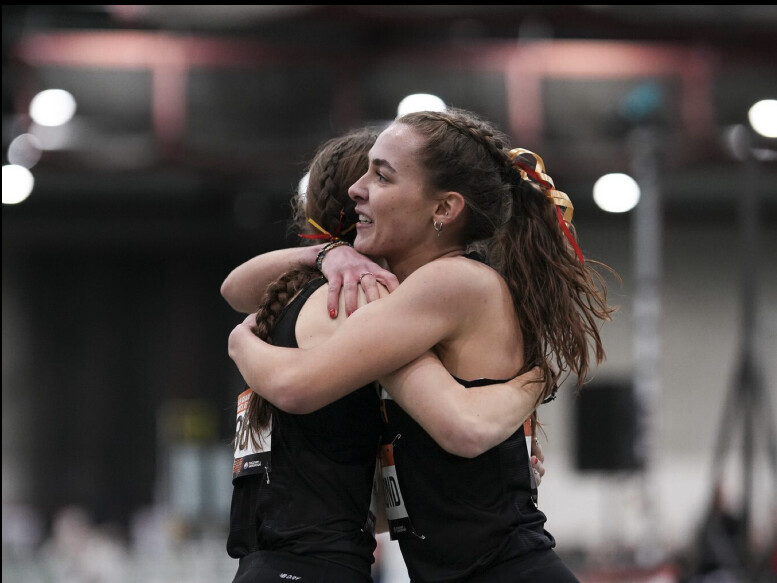

If your ponytail in the previous hairdo is still long enough to stick to your neck on hot days, the next step is to wrap your hair into a high bun. A low bun will bounce around and unravel–the high bun, with the help of elastics and bobby pins, is your best friend. This hairstyle will be a little tougher for those with thick hair, which will make your bun heavy, but the final look will be both elegant and intimidating, leaving your competitors in awe.The slick-back
This hairstyle is popular in a non-running setting, completing the trending “clean girl” aesthetic, slicking back the flyaways and frizziness that likes to sit as a halo around your head. This simple, neat look (my backup hairdo when my hair refuses to be braided) is perfect for taming your hair on race day. It also takes minimal effort–all you need is a hairbrush and some hair cream or gel. You can complete the look with a regular or braided ponytail.Space buns
Space buns are hands-down the most adorable hairstyle you can have while running. The sport isn’t a very cute activity, but if you are rocking two little buns while hitting the road, you will capture the hearts of many onlookers. Low buns can be a little messy while still looking sweet, but will need a bit of extra security from elastics and bobby pins to keep from bouncing out of place. High buns create more of an intense look and will be a lot more secure, but you can’t get away with having as many imperfections here and there, so be sure to slick your hair back well and double-check your part.Bubble braids
If your hair is long, with limited layers, don’t hesitate to try a bubble braid. This look is fun and pretty, adding volume to your hair while making you look like a pro. The look is simple: put your hair in a ponytail (slicked back or not) and add mini-elastics down the length of your pony, spaced one to two inches apart (depending on how many bubbles you want). Then, pull the hair in each bubble, starting from the top, to loosen it and bring on the volume. You can also use colourful elastics to spice it up even more.
(07/21/2024) ⚡AMPby Running Magazine
Winfred Yavi eager to win Bahrain a second steeplechase Olympic gold medal at Paris Olympics
Winfred Yavi will be out to claim a second Olympic gold medal for Bahrain at the Paris Olympics after Ruth Jebet set the pace at the 2016 Rio Olympic Games.
Kenyan-born Bahraini Winfred Yavi has plans to emulate Ruth Jebet and win Bahrain the second Olympic gold medal as she heads to the Paris 2024 Olympic Games.
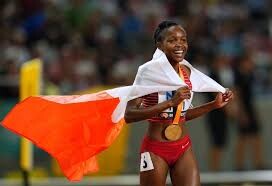
Jebet claimed Bahraini’s first gold medal in the women’s 3000m Steeplechase at the delayed 2016 Rio Olympic Games and Yavi will be looking to reclaim the title after they lost it to Uganda through Peruth Chemutai at the delayed 2020 Tokyo Olympic Games.
The reigning world champion noted that this season, their main focus will be to surprise fans at the Stade de France with her impeccable run to win the women’s steeplechase. At the moment, Yavi is working on every aspect of her training as she looks to dine with the finest steeplechasers from across the globe.
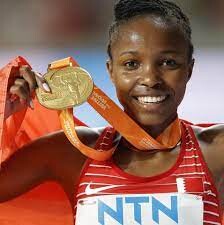
The 24-year-old added that she knows every athlete who makes it to the Olympic Games has worked for that spot and she has a lot of respect for all of them.
“I have a lot of respect for each and every competitor who has qualified for the Olympic Games. My team and I are focusing on getting ready,” Yavi told Gulf Daily News.
“The Olympic Games are one of the biggest arenas in the world, and it is a proud moment for me. The best athletes in the world are at the Olympic Games. You have to prepare well.”
Yavi added that it’s incredible to fly the Bahrainian flag high once again as she looks to make an impact just like she did at the World Championships in Budapest, Hungary and the Prefontaine Classic, the Diamond League Meeting in Eugene.
This season, she claimed her first win of the season at the Diamond League Meeting in Paris and will be looking to maintain her form to the Olympics. She had a faulty start to her season, finishing ninth at the Prefontaine Classic but managed a bounce back in Paris.
“It is an honor to have a team and a coach who I can collaboratively work together with. I am looking forward to the Olympic Games, and I am trusting the process. It’s incredible!” Yavi said.
(07/20/2024) ⚡AMPby Abigael Wafula
Paris 2024 Olympic Games
For this historic event, the City of Light is thinking big! Visitors will be able to watch events at top sporting venues in Paris and the Paris region, as well as at emblematic monuments in the capital visited by several millions of tourists each year. The promise of exceptional moments to experience in an exceptional setting! A great way to...
more...Three DIY electrolyte drinks to make this summer
Staying hydrated in the hot summer season is crucial, but commercial electrolyte drinks are often packed with artificial ingredients and sugars. Making your own electrolyte drinks at home lets you control what goes into your body, ensuring you get the nutrients you need without any unwanted additives. Plus, it’s often more cost-effective, and customizable to your taste preferences.
Citrus Burst Electrolyte Drink
This thirst-quenching combo of citrus fruits also provides a natural dose of vitamin C and potassium.

Ingredients
2 cups water1/4 cup fresh lemon juice1/4 cup fresh orange juice1/8 teaspoon sea salt1-2 tablespoons honey or maple syrup (to taste)

Instructions
Combine all the ingredients in a pitcher.Stir well until the salt and honey are fully dissolved.Chill in the fridge for at least an hour, or until you’re ready to enjoy.
Source: Wellness Mama
Coconut Lime Electrolyte Drink
Coconut water is naturally rich in electrolytes like potassium and magnesium, making it a perfect base for this tropical drink.
Ingredients
1 cup coconut water1 cup waterJuice of 2 limes1/8 teaspoon sea salt1 tablespoon agave syrup or honey (optional)
Instructions
Mix all ingredients in a pitcher and stir well.Taste and adjust sweetness if needed.Chill before serving, and sip it during or after your run.
Source: Fit Foodie Finds
Berry Blast Electrolyte Drink
Packed with antioxidants and vitamins, this berry-infused drink is not only tasty but also great for recovery.
Ingredients
1 cup mixed berries (fresh or frozen)2 cups water1/4 cup freshly squeezed lemon juice1 tablespoon honey or agave syrup1/8 teaspoon sea salt
Instructions
Blend the berries and water until smooth.Strain the mixture through a fine-mesh sieve to remove any pulp.Mix the berry juice with lemon juice, honey and sea salt in a pitcher.Stir well and chill before serving.
Source: The Kitchn
Creating your own electrolyte drinks at home is a fun and easy way to stay hydrated and energized on your runs—but the fun doesn’t need to stop with beverages. Try freezing any of these electrolyte drink mix into ice cube trays, ready to liven up any ordinary glass of water; to take your electrolyte drinks (or your frozen cubes) to the next level, toss in a few fresh or frozen berries, mint leaves or lime wedges.
(07/20/2024) ⚡AMPby Keele Milne
Hellen Obiri to approach Olympic marathon with 'caution' as she chases her first gold medal
Hellen Obiri is aware of the tough competition awaiting her at the Olympics as she seeks to take a different approach to the race with her main goal being to claim a gold medal.
Two-time Boston Marathon champion Hellen Obiri will be taking a different approach in the Paris Olympic Games as she competes in the marathon.
Obiri was selected in the team alongside defending champion Peres Jepchirchir and Sharon Lokedi and has admitted that triumphing over her compatriots will be a tough ordeal.
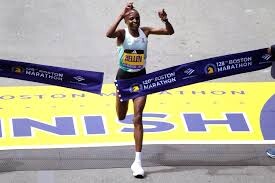
Speaking to Nation Sport, the reigning New York City Marathon champion insisted that she knows every competitor has trained well and prays for good health and fitness as she eyes her first Olympic gold medal.
She is now on her final stages of training and so far, things are looking up for the two-time Olympic 5000m silver medallist.
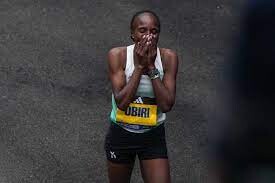
“I’m delighted that I’m heading to the Olympics for the fourth time. I want to achieve what I have been dreaming, which is a gold medal, and as I finalise my training, I pray I remain healthy and injury free,” Obiri said.
“The Kenyan team is strong. I will be approaching the race with caution because everybody has trained hard and wants to win.”
Obiri made her full marathon debut at the New York City Marathon where she faded to finish sixth in the tight race. However, that did not stop her from pursuing her marathon dream as she proceeded to the Boston Marathon last year.
She was no fluke as she claimed top honours in the race before winning the 2023 New York City Marathon. The two-time world 5000m champion successfully defended her title at this Boston Marathon.
She has since been selected to represent Kenya at the Olympic Games and will be looking to add the only medal missing in her trophy laden cabinet, an Olympic gold medal.
The former world 10,000m silver medallist has been consistent in the marathon and she will certainly be a favourite as the athletes line up for the marathon.
(07/20/2024) ⚡AMPby Abigael Wafula
Paris 2024 Olympic Games
For this historic event, the City of Light is thinking big! Visitors will be able to watch events at top sporting venues in Paris and the Paris region, as well as at emblematic monuments in the capital visited by several millions of tourists each year. The promise of exceptional moments to experience in an exceptional setting! A great way to...
more...Strava denies Canadian marathon record holder a pro athlete account
Canada’s Natasha Wodak has had an impressive career on both the track and the roads, and is considered one of the country’s greatest-ever female distance runners. She has represented Canada at two Olympic Games and holds the national marathon record of 2:23:12. Despite her achievements, the fitness tracking app Strava does not seem to recognize their significance; it denied her a pro athlete subscription for 2024.
“I am not sure what hurts more, not making the Canadian Olympic team or getting rejected by Strava for my PRO badge renewal,” Wodak wrote on her Instagram.
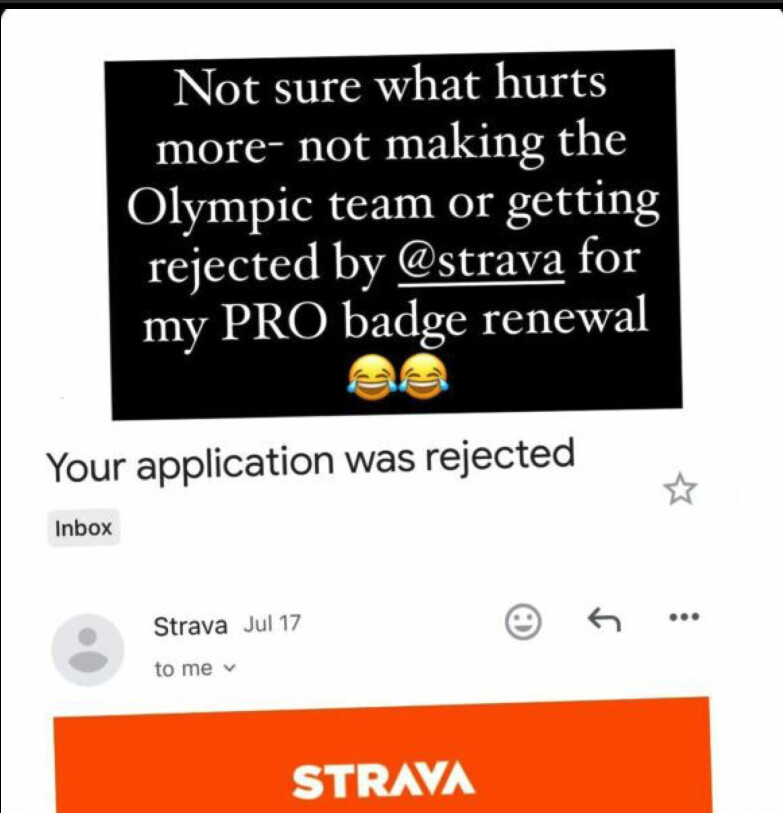
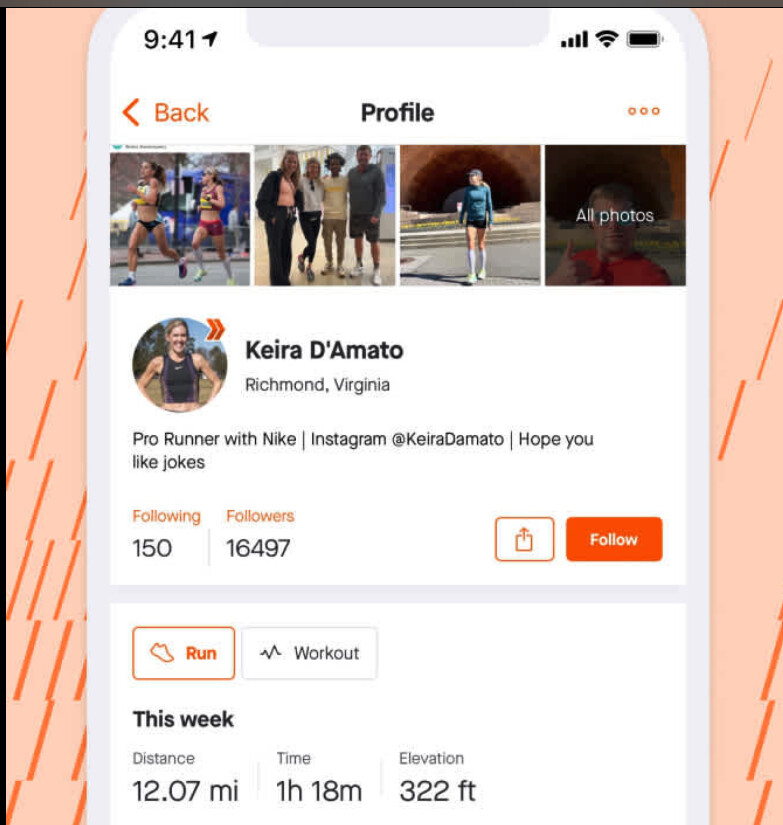
A Strava Pro Athlete and Verified Badge offers several benefits, including exclusive features on Strava, such as advanced analytics, performance insights and the ability to create and share custom challenges or events for free. Pro athletes are highlighted on Strava, making it easier for fans and followers to find and follow them. The badge exists to recognize public figures, noteworthy community builders and influential individuals around the world.
According to Strava, for a professional runner to be approved for a pro athlete badge, they must have achieved a World Athletics entry standard in the past 18 months or placed in the top five at a national championship (e.g. USA Track & Field or Athletics Canada). An athlete must also provide proof of financial compensation for training and athletic endeavours, whether through a travel stipend, training cost stipend or salary from notable sponsors (e.g. Brooks, Asics, Nike).
In Wodak’s case, she meets both of these verification criteria, which is why the rejection email came as a shock. She qualified and competed for Canada at the 2023 World Athletics Championships in Budapest in the women’s marathon and has won three Canadian national titles in the last 18 months. Additionally, she receives financial compensation through a professional (salary-based) contract with Asics Canada.
Wodak took three shots at making the Canadian marathon team for Paris 2024, but came up just a few minutes short of the women’s marathon standard of 2:26:50.
Strava’s pro-athlete community includes more than 2,300 athletes from 195 countries. This status not only recognizes them as professional athletes, but also provides them with a complimentary Strava subscription and access to a community of active followers.
(07/20/2024) ⚡AMPHardrock 100 Denies Zach Miller’s Attempt to Race After Appendectomy
After recovering quickly from the emergency surgery on July 5, Miller was hopeful to start the 100-mile race through Colorado's San Juan MountainsZach Miller had been looking forward to running the Hardrock Hundred Mile Endurance Run in southwestern Colorado for years.
The 35-year-old runner sponsored by The North Face received entry into the 2024 event via one of race director Dale Garland’s six personal picks, and with a solid regimen of training under his belt, Miller appeared to be one of the favorites for this year’s event on July 12-13. But on July 5, he woke up in Silverton, Colorado, with considerable abdominal pain. Doctors in Durango, Colorado, initially thought he might have been suffering from kidney stones—the pain was consistent to a 25-hour episode he said he suffered in mid-June—but a few hours later, he had an emergency appendectomy via a laparoscopic surgical procedure.
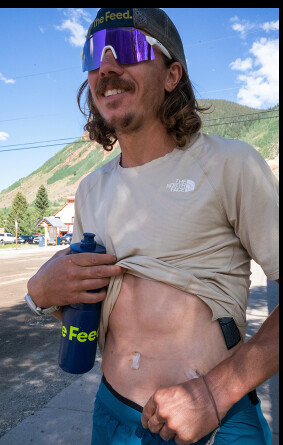
Miller’s appendix didn’t burst, but doctors removed it because they believed it was imminent. But soon after the procedure, he said he started thinking about the chance to be on the Hardrock starting line. He said he was walking around the hospital later in the evening after the procedure, and the next day, after he was released from the hospital, he walked about 3 miles in Durango. The following day, he rode his gravel bike in Silverton without any pain, and the the day after that—three days after the surgery—he was back running the trails around Silverton with mild post-surgical discomfort.
By Wednesday of this week, after running 8 miles and 6 miles on back-to-back days, Miller said he had hoped to start the 100.5-mile event and received verbal consent from his doctor. By Thursday morning, that consent came in written form, which he then submitted to Hardrock officials.
Miller said he had consulted with his doctor, his girlfriend, Jess, and several other people close to him and decided he wanted to continue with his intent to run. He said he didn’t feel any pain running this week, only some slight discomfort from the suture closures at the three point-of-entry holes in his abdomen that provided access for the laparoscopic procedure.
However, the Hardrock board of directors met with its medical advisors on Thursday and decided Miller would be ineligible to start the event. (Hardrock officials did not respond to RUN’s request for an interview or statement about the situation.)
“The recovery’s been really smooth, every day’s been better,” Miller said Thursday afternoon. “I ran the past four days and biked the other, and I felt surprisingly good. Honestly, I felt like I could go out there and give it a good hard go. Would I have? I don’t know, but I felt like there was a shot.”Miller said he understands the liability and safety concerns—both for his health and for the heightened potential of on-course evacuation if a problem did arise—and respects Hardrock’s decision.
“I think if they gave me the green light, it was pretty much decided I was going to go for it,” said Miller, who finished second at the Ultra-Trail du Mont-Blanc in Chamonix, France, last summer. “But we didn’t get it, and that’s just the way it is, so I’ll just move on from here. There’s definitely some disappointment, but it was a difficult and unexpected situation, and nobody wanted to be in that situation and making those decisions. As much as it hurts, it’s understandable, and it’s the responsible thing to do.”
In the months leading up to Hardrock, Miller had been running 140-150 miles per week between 40,000 and 56,000 vertical feet of gain training in Bend, Oregon, Manitou Springs, Colorado, and eventually Silverton. He said he hopes to maintain his fitness and then pivot to another event or a potential fastest known time attempt in the near future, but said on Thursday he hadn’t yet thought about that in detail.
On Thursday evening, after learning he wasn’t going to be able to run, he went on a two-hour run near Silverton that covered 12 miles with 1,200 feet of vertical gain.
“There are still some good races left for the year and there’s always plenty of projects and FKTs to consider so the fitness I’ve enjoyed from the training doesn’t have to be wasted,” he says. “It’s still there and I can hopefully go use it somewhere else.”
(07/20/2024) ⚡AMPRuth Chepng’etich, Joyciline Jepkosgei confirmed for 2024 Chicago Marathon
Ethiopians will challenge Kenyan stars Ruth Chepng’etich and Joyciline Jepkosgei at the 2024 Chicago Marathon, promising a thrilling race.
Two of Kenya's marathon luminaries Ruth Chepng’etich and Joyciline Jepkosgei have been confirmed to compete in the 2024 Chicago Marathon on October 13.
This news comes with a mix of excitement and high expectations as they prepare to face formidable Ethiopian opposition in a race that promises thrilling competition.
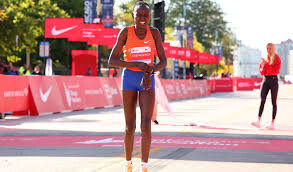
Chepng’etich, a two-time Chicago Marathon winner, returns to the Windy City with hopes of reclaiming her title.
She previously stunned the running world by clocking a phenomenal 2:14:18 in 2021, securing her a spot as the fourth fastest woman in marathon history.
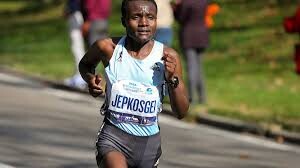
Despite her non-selection for the Paris Olympics, Chepng’etich's record speaks volumes about her resilience and prowess.
Her participation in Chicago marks a significant step as she aims for a hat-trick of wins in a city that has witnessed some of her greatest triumphs.
On the other hand, Joyciline Jepkosgei, the 2019 New York City Marathon champion and a seasoned competitor with a personal best of 2:16:24, is no stranger to the pressures of big city marathons.
With victories in both New York and London, Jepkosgei's strategic racing and endurance will be key assets as she navigates the Chicago course alongside Chepng’etich.
However, the Kenyan duo’s ambitions will be tested by strong Ethiopian contenders, including Sutume Kebede the reigning Tokyo Marathon champion with an impressive personal best of 2:15:55.
Kebede's entry adds a layer of intensity to the race, setting the stage for a gripping showdown among some of the world’s elite marathoners.
Further adding to the international flavor of this year's Chicago Marathon are other Kenyan runners like Mary Ngugi-Cooper, who posted a 2:20:22 at the 2022 London Marathon, and Stacey Ndiwa, who recently finished with a time of 2:25:29 in Los Angeles.
The American contingent is led by Keira D’Amato, who has a personal best of 2:19:12 and is transitioning from her 10th place finish in the 10,000m at the U.S. Olympic trials to her first marathon of the season.
Sara Hall and Emma Bates who have shown strong performances in past Chicago Marathons will also return aiming to capitalize on their familiarity with the course and local support.
(07/19/2024) ⚡AMPby Festus Chuma
Bank of America Chicago
Running the Bank of America Chicago Marathon is the pinnacle of achievement for elite athletes and everyday runners alike. On race day, runners from all 50 states and more than 100 countries will set out to accomplish a personal dream by reaching the finish line in Grant Park. The Bank of America Chicago Marathon is known for its flat and...
more...Try this elite workout and smash your 5K PB
As an elite runner, I’ve had my fair share of bad workouts. I dread the workouts with longer, slower stuff (5 x 800m) which feel mentally draining, or workouts with lots of repetitions (10 x 400m)–boring, right?
In my opinion, the best workouts have a good mix of steady, hard and fast. This keeps things interesting and makes it feel less repetitive (and therefore more fun). Even if you are running a longer distance, incorporating some short and fast anaerobic intervals into your training will help to increase your aerobic capacity, making that long race feel easier.
If you have a 5K or mile race coming up, add this spicy track workout to your training plan to knock some time off the clock.
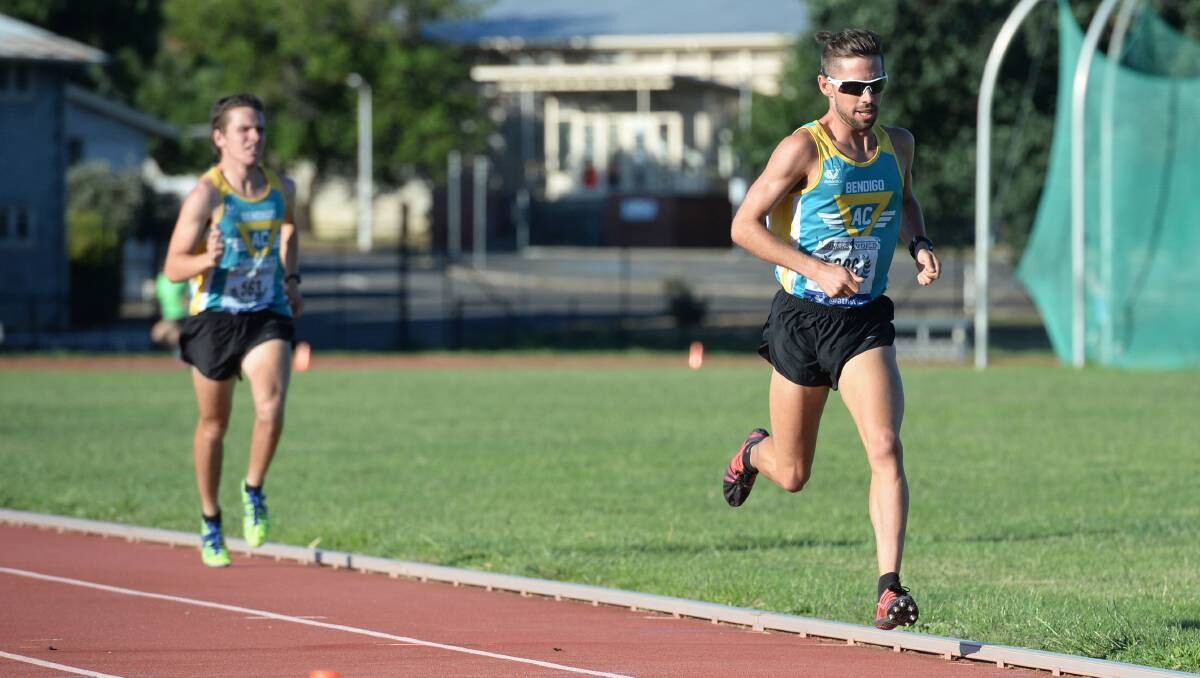
Warmup
Before you hit the track at full speed, make sure you do a solid warmup. To prepare for an interval workout especially, your warmup should first involve dynamic exercises to get your joints moving and activate your major muscle groups.
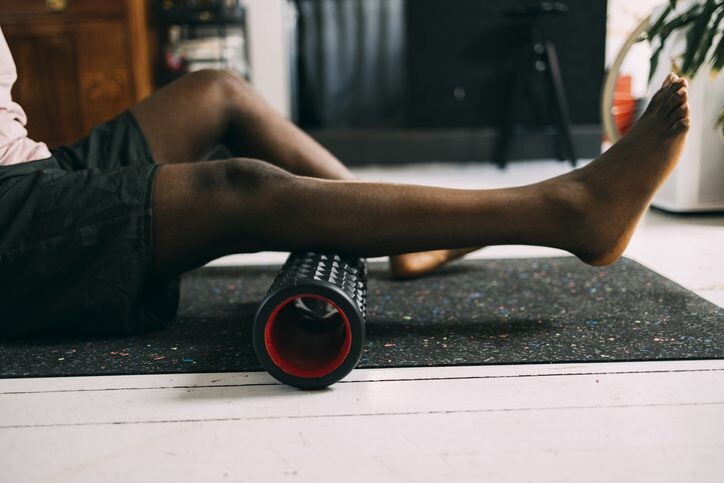
Glutes: fire hydrants and glute bridges
Spine: cat/cows
Hips: 90-90s
The warmup run should consist of 15-20 minutes of easy running (a very comfortable pace where you can easily hold a conversation). This should be on a nearby road or trail, to avoid running additional circles around the track.
If you are more of an elite runner, add four by two minutes of tempo running (a faster, steady pace that you consider comfortably hard), with one minute of rest between reps. Follow with a few minutes of running drills to focus on your form.
Workout
The workout: three to four sets of 400m, 300m, 200m with 90 seconds of rest between reps.
400m rep: complete at 5K pace. If you have a 25-minute 5K goal (5:00 per kilometre), aim to complete this rep in 2 minutes.
300m rep: complete at 3K pace. If you have a 3K goal of 14:30 (4:50 per kilometre), aim to complete this rep in 87 seconds.
200m rep: complete at mile pace. If your goal is 7:12 (4:30 per kilometre), aim to complete this rep in 54 seconds.
Take four minutes between sets to reset. Adjust the workout as you go to make it harder or easier; make sure you feel comfortable, strong, and focus on having good form. It should not be an all-out effort. If you are training for a shorter race or need a higher intensity, aim for 3K, mile, 1K pace. Follow the workout with a few strides to practise your turnover on tired legs.
Modifications: If you don’t have access to a track, don’t fret. This workout can be easily modified for the trail or the road, based on time. Calculate your rep times based on your goal race pace, and just run at a steady, comfortable pace for that amount of time. If you have a GPS watch that tracks your pace, even better.
Cooldown
Don’t forget to run for an easy 10 minutes to follow the workout. This will slowly lower your heart rate and reduce soreness and risk of injury. Track workouts are tough–hydrate with electrolytes and fuel with a post-workout snack. Even better if you do some static stretches (while your muscles are still warm) and do some foam-rolling for recovery.
Overthinking a workout is my kryptonite; the key for me is to show up to practice, run and then leave. Not getting in your own head allows your body to just work hard. At the end of the day, a workout that leaves you feeling fast and confident is a great workout.
(07/19/2024) ⚡AMPby Cameron Ormond
Usain Bolt named ninth-greatest athlete of the 21st century
On Thursday, ESPN dropped a list ranking the 100 best athletes in the world since the year 2000. 70,000 ESPN contributors voted based on performances since 2000, assembling the list of the greatest athletes of the 21st century–with track and field’s very own Usain Bolt taking the ninth spot.
It’s sometimes hard to believe that the worlds of the “Big Four” leagues (MLB, NBA, NFL and NHL), tennis, soccer, golf, and the Olympics all exist in the same universe. How can you even compare the accomplishments of individual athletes to those of athletes in a team sport?
The Jamaican sprinter has a very impressive resume, collecting nine Olympic gold medals over his four Games (he had to return one due to a teammate’s doping violation), and still holds three world records: the 100m, 200m and 4x100m relay. Bolt’s 100m record has stood since 2009, when he ran 9.58 seconds to break the record for his third time, deeming him the world’s fastest man.
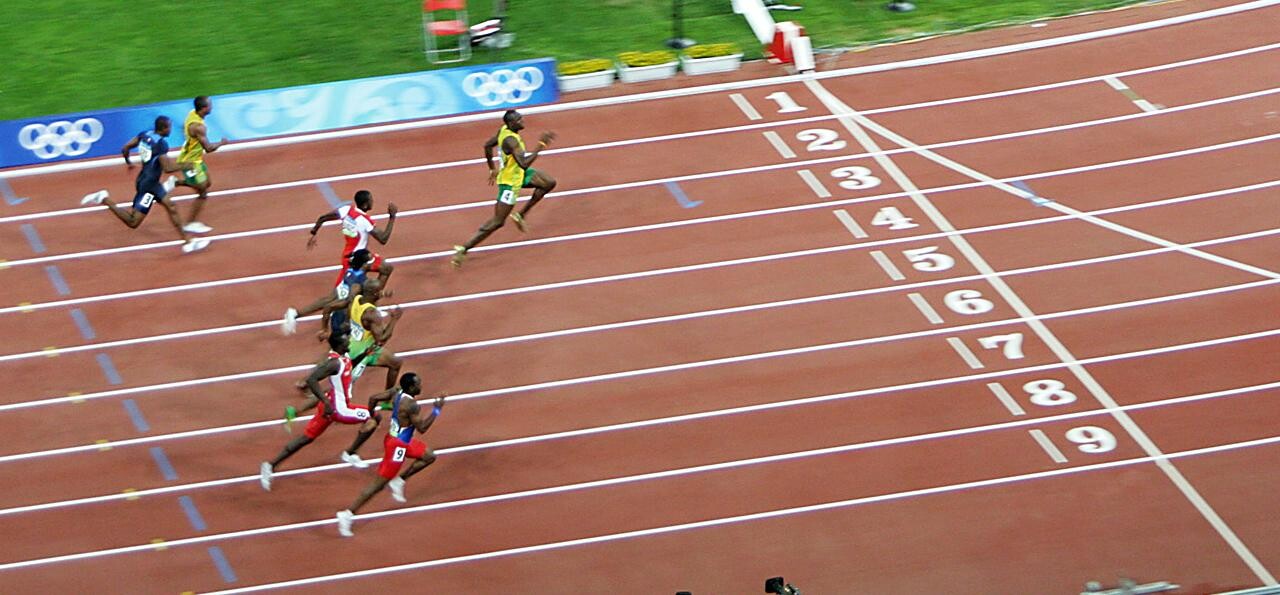
At his last Games in Rio 2016, Bolt achieved the triple-triple–winning three sprint golds at three consecutive Olympics. Although he retired in 2018, his monumental achievements will leave an extraordinary legacy in the track world.
Bolt is one of three Olympians in the ESPN top 10, bettered by only swimmer Michael Phelps, who took the top spot, and gymnast Simone Biles, in seventh.
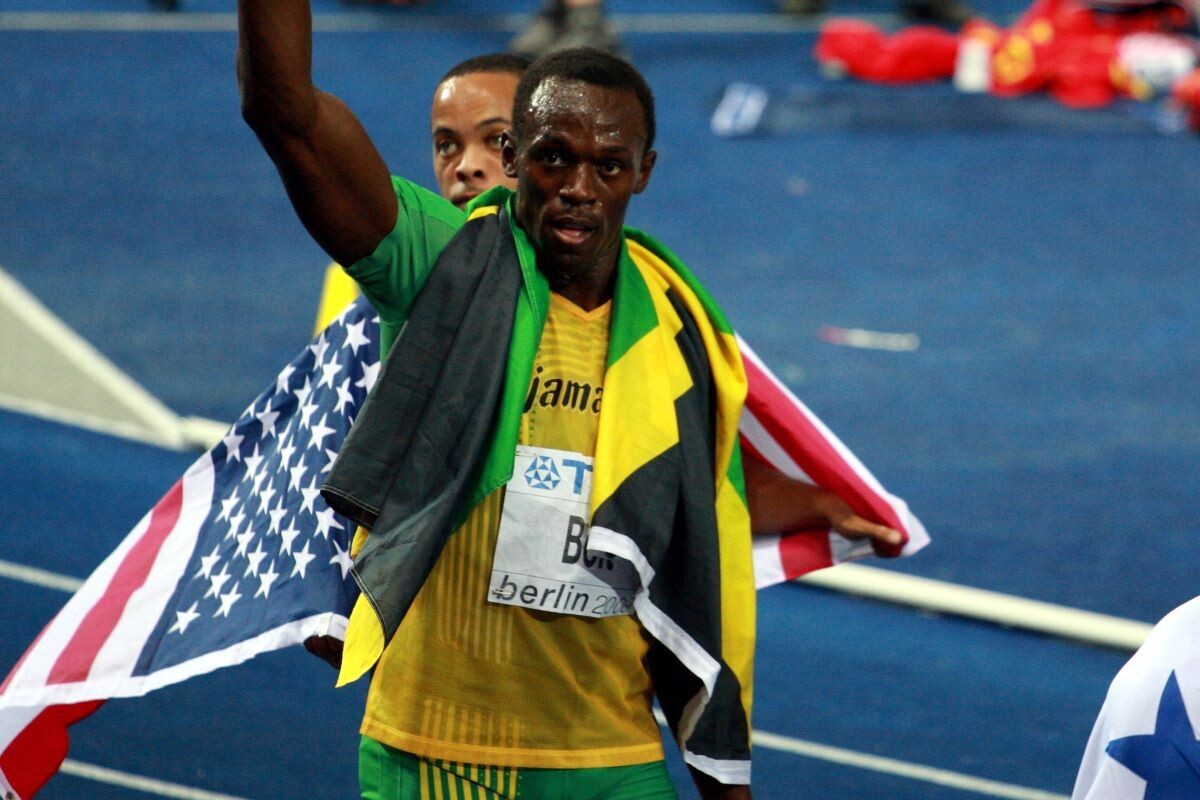
The representation of athletics in ESPN’s top 100 doesn’t end there: sprinters Allyson Felix of the U.S. and Shelly-Ann Fraser-Pryce of Jamaica claim the 63rd and 77th spots, respectively. Felix is a five-time Olympian for Team USA, with seven Olympic titles to her name, plus three silvers and one bronze. Fraser-Pryce is a three-time Olympic champion and eight-time Olympic medallist. At 37, the Jamaican hasn’t called it quits yet–she has qualified for her fifth and final Games later this summer in Paris.
(07/19/2024) ⚡AMPby Cameron Ormond
World champions to headline 2024 Chicago Marathon
As we inch toward the fall road racing season, the 2024 Chicago Marathon is the first Abbott World Marathon Major (AWMM) to announce its men’s and women’s elite list. Last year’s elite races in Chicago saw two course records and one world record set by the late Kelvin Kiptum—something that will be hard to beat. But the 2024 field does not lack talent or potential, with former world champion and fourth-fastest marathoner in history Ruth Chepngetich headlining the women’s field and world 10,000m silver medallist Daniel Ebenyo making his marathon debut in the men’s field.
The men’s race
Ebenyo has had a successful career on the track, winning multiple medals at World Championships and Commonwealth Games, but never individual gold. He is currently ranked by World Athletics as the top 10,000m runner in the world, holding a personal best of 26:57.80, which he set in 2023. The 28-year-old was not selected for the 10,000m by the Kenyan Olympic team for Paris 2024 after an eighth-place finish at the Kenyan Trials.
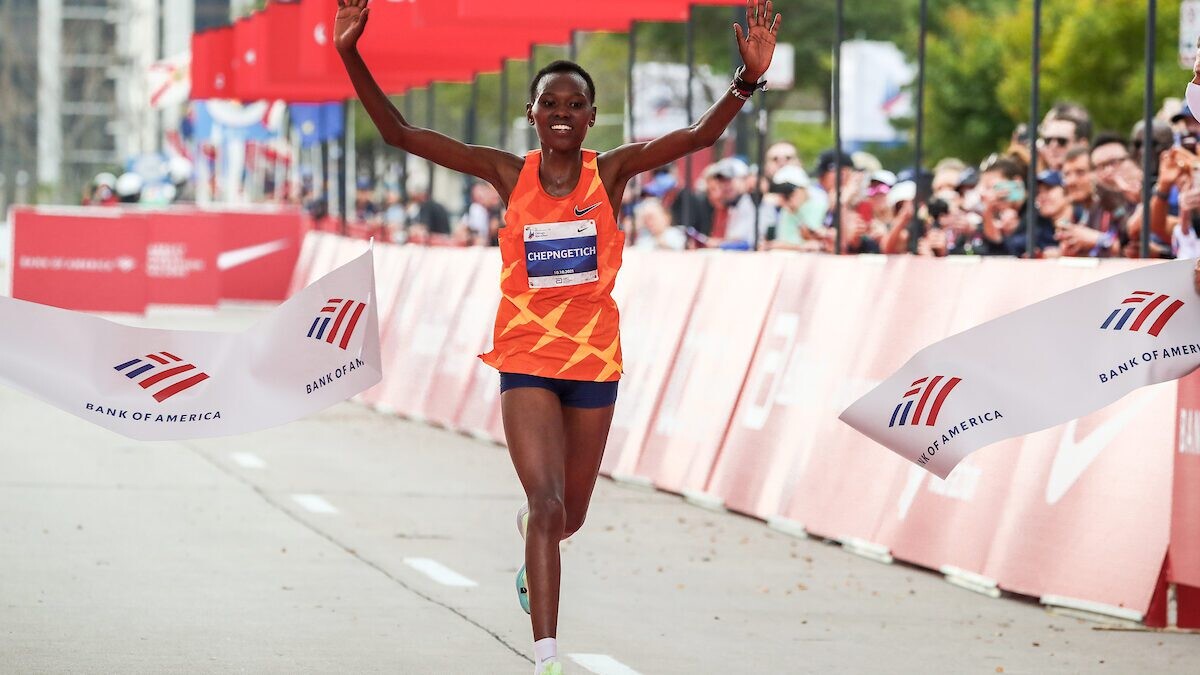
Although the Kenyan star has had success on the track, he has also flourished in his short career on the roads, winning silver in the half-marathon at the inaugural World Road Running Championships in Riga, Latvia. He holds a personal best of 59:04 for the half distance and a world best over 25 km (1:11:13).
Ebenyo’s potential over 42.2 km will be hard to predict; many people had high expectations for three-time world 10,000m champion Joshua Cheptegei of Uganda, but he struggled in his marathon debut last December in Valencia, clocking 2:08:59 for 37th place.
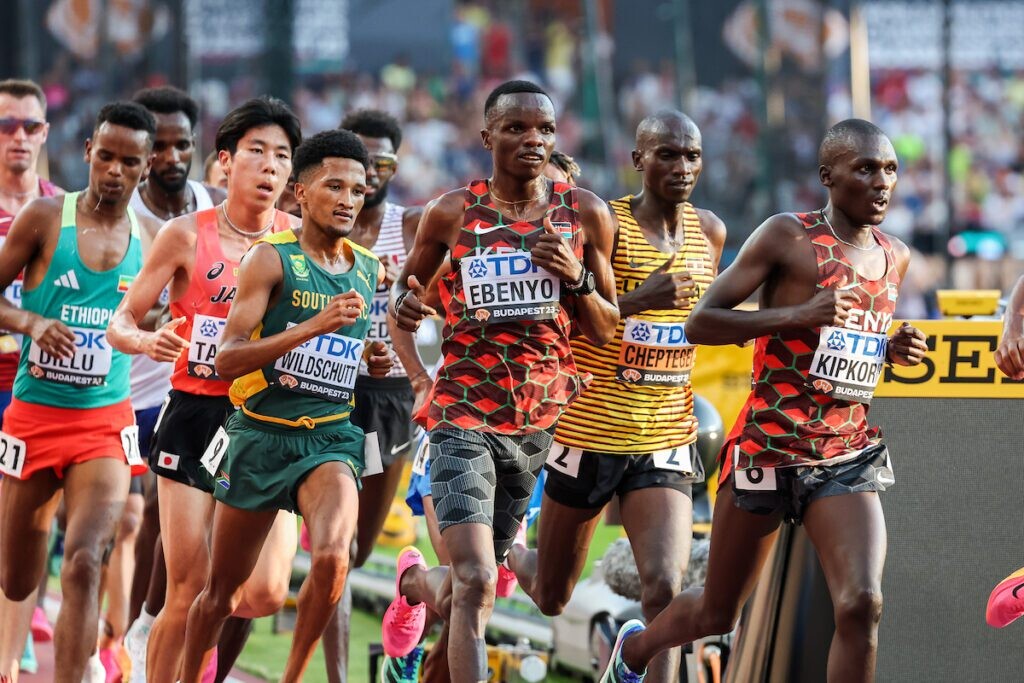
Joining Ebenyo in the men’s field is 2022 London Marathon champion Amos Kipruto, who has the fastest personal best in the field (2:03:13 from the 2022 Tokyo Marathon). Kipruto has podiumed at three of the six AWMMs and is known as one of the best tactical marathoners in the world. Chicago will be Kipruto’s first marathon since his seventh-place finish in Berlin last year.
The lone Canadian in the men’s field is Phil Parrot-Migas of London, Ont. This will be the third marathon of his career. He holds a personal best of 2:15:53, set in Hamburg in April.
The women’s field
At the 2022 Chicago Marathon, Chepngetich was on a world-record pace until the final kilometre, ultimately missing it by 14 seconds (2:14:18). This capped off her second-straight Chicago victory, following in the footsteps of her compatriot, Brigid Kosgei. Last year, Chepngetich was second to Sifan Hassan’s course record-setting run, in 2:15:37. Her personal best is the fastest in the field by a minute and a half, and with her experience on the flat and fast course, she’s going to be a tough athlete to beat come Oct. 13.
Besides Chepngetich, there’s a strong American contingent, consisting of three of the country’s top five fastest marathoners: Keira D’Amato, Sara Hall and Betsy Saina. D’Amato had a rough go at the 2024 U.S. Olympic Trials, and was unable to finish, due to injury. Months later, she announced a coaching change and a planned move to Utah to train under distance running guru Ed Eyestone, the coach of U.S. Olympic marathoners Conner Mantz and Clayton Young. D’Amato, who will turn 40 in October, told Runner’s World she made the switch because she wanted a different perspective on her training and a chance to learn from someone new.
Saina comes into the race as the strongest American athlete, placing in the top five of her last three marathons, including a win at the 2023 Sydney Marathon. Sydney is currently a candidate to be added as the seventh AWMM, joining Tokyo, Berlin, London, Boston, Chicago and NYC.
(07/18/2024) ⚡AMPby Marley Dickison
Bank of America Chicago
Running the Bank of America Chicago Marathon is the pinnacle of achievement for elite athletes and everyday runners alike. On race day, runners from all 50 states and more than 100 countries will set out to accomplish a personal dream by reaching the finish line in Grant Park. The Bank of America Chicago Marathon is known for its flat and...
more...Quincy Wilson: 5 things you need to know about America's youngest track Olympian
Five things you need to know about Quincy Wilson, a 16-year-old protege set to represent Team USA in the 4 by 400m of the Paris 2024 Olympics.
America's teenage sprint sensation Quincy Wilson has taken the track world by storm, setting records and captivating audiences with his speed and determination.
At just 16 years old, he has already secured his place in history as the youngest U.S.-born male to compete in track and field at the Olympics.

As he gears up for his debut on the Olympic stage, here are five crucial things you need to know about this extraordinary athlete as per NBC.
1. A prodigy from a young age
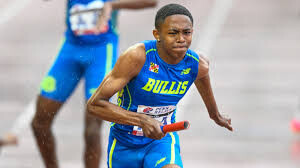
Quincy Wilson began his track and field journey at the tender age of eight. Growing up in Chesapeake, Virginia, Quincy quickly outpaced his peers, prompting his family to move to Potomac, Maryland, where he could benefit from a superior athletic program at Bullis School.
Despite his youth, Quincy has already shown a prowess that rivals seasoned athletes.
At just 16, he broke records that many would not dream of approaching until well into their careers.
He clinched his first national title at the 2023 New Balance Indoor Nationals in the 400m competing as the only freshman in the field.
2. A family of athletes
Quincy's athletic prowess is no coincidence; it runs in the family as parents, Monique and Roy Wilson, were both collegiate athletes.
Monique excelled in soccer and basketball, while Roy played football for the Naval Academy.
The influence of his family extends beyond just genetics. The Wilsons have been integral in providing support and guidance throughout Quincy's career, attending his meetings and ensuring he has the resources needed to succeed.
Quincy also draws inspiration from his older sister, Kadence, who runs track at James Madison University.
Watching her compete and train has fueled his desire to push his limits and strive for excellence, creating a healthy sibling rivalry that spurs both to greater heights in their respective athletic careers.
3. Breaking barriers and setting records
Quincy Wilson is not just competing; he is redefining what young athletes are capable of achieving.
His rapid ascent in track and field culminated in him becoming the youngest American male to secure an Olympic track and field bid, a testament to his extraordinary capabilities and the potential to shape the future of the sport.
His inclusion in the U.S. Olympic team, particularly in the 4x400m relay, is a significant achievement, positioning him as a key player on the international stage.
Quincy's record-breaking journey has been filled with notable highlights, including multiple AAU Junior Olympic Games titles and national titles.
These accolades have not only earned him recognition from his peers but also attracted attention from major sports brands, leading to an NIL deal with New Balance, making him one of the youngest athletes to sign such a contract.
4. Life beyond the track
Despite his rigorous training schedule, Quincy leads a balanced life. He is a typical teenager who enjoys video games, spending much of his free time playing popular titles like Fortnite and Call of Duty.
After his successful stint at the Olympic Trials in June, Quincy's first choice to unwind was to grab his headset and join his friends for a game of Call of Duty: Warzone.
This blend of normal teenage activities with his professional commitments provides Quincy with a much-needed outlet for relaxation and social interaction.
It helps him maintain a sense of normalcy amidst the high pressures of competitive sports, ensuring he remains grounded and focused.
Quincy’s interests also include a deep appreciation for his education. Attending Bullis School, he excels in his studies, understanding the importance of having a well-rounded life that balances sports with academics.
5. Looking toward the future
Quincy Wilson's debut on the Olympic stage captures global attention, with audiences anticipating standout performances from this remarkable young athlete.
His ambitions stretch beyond mere medal victories; Quincy is driven to motivate a new generation of athletes to passionately chase their dreams.
The path he has taken showcases a formula for success rooted in perseverance, familial support, and natural skill.
Quincy Wilson is more than just an emerging talent to keep an eye on; he stands as a dynamic force poised to reshape the limits of track and field for the foreseeable future.
(07/18/2024) ⚡AMPby Festus Chuma
Mary Moraa reveals what cost her glory at Tokyo Olympics as she seeks to make ammends in Paris
Mary has disclosed what cost her a medal at the delayed 2020 Tokyo Olympic Games and what she has done differently to ensure she is lethal in Paris.
Reigning world 800m champion Mary Moraa has disclosed what cost her a medal at the delayed 2020 Tokyo Olympic Games and what she has been doing in training to avoid a repeat of the same.
At the Tokyo Olympic Games, the reigning world champion was eliminated in the semifinal after she finished third.
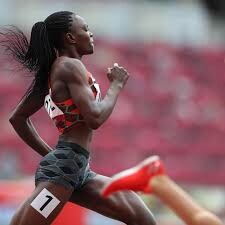
The race was eventually won by Athing Mu, who will unfortunately not be defending her title after falling at the U.S. Olympic trials and ended up finish ninth in the final of the women’s 800m.
Speaking about her experience in Tokyo, the 24-year-old noted that she was yet to master how the 800m well and the event was more of a learning curve. However, at the moment, Moraa noted that she knows better and she has the skills when it comes to running the 800m from the preliminaries, to the semifinal and to the final and eventually win a race.
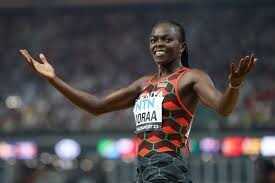
She added that the team has been training well and she has enjoyed the company of Vivian Chebet and Lilian Odira who will be making Olympic debuts, competing in the 800m.
“I reached the semifinal in 2020 and now my big target is to reach in the final and get a medal. We have been training well as a group, I, Lilian and Vivian have been working together in training and we pray that God gives us energy so that when we get to the Olympics, we are able to run well and get to the final and bring back medals,” Moraa said.
“In Tokyo, I had not mastered the art of running the 800m well but now I have the experience and I know how I can run and get to the final and get a medal,” she added.
Moraa faces tough opposition at the Olympic Games, going up against Briton Keely Hodgkinson who finished second in Tokyo. Nonetheless, she is not putting pressure on herself ahead of her Olympic return.
She will certainly be more confident, thanks to the gold medal she won at the World Championships in Budapest, Hungary.
(07/18/2024) ⚡AMPby Abigael Wafula
Paris 2024 Olympic Games
For this historic event, the City of Light is thinking big! Visitors will be able to watch events at top sporting venues in Paris and the Paris region, as well as at emblematic monuments in the capital visited by several millions of tourists each year. The promise of exceptional moments to experience in an exceptional setting! A great way to...
more...Running helps prevent erectile dysfunction, new study says
For those looking to enhance their bedroom performance naturally, lacing up your running shoes and hitting the pavement could be the ticket. According to recent research in Harvard Health, regular aerobic activity can significantly improve erectile dysfunction (ED) symptoms, offering a safe and effective solution.
Running is a low-risk and inexpensive therapy that not only improves ED but also boosts overall health. Here’s why your love life (and your overall health) may thank you for starting a regular running regime.

A drug-free remedy
When most people think of ED treatments, medications like Viagra and Cialis typically come to mind. A study published in The Journal of Sexual Medicine suggests that aerobic exercise can be just as effective, particularly for men with severe ED. The study reviewed 11 randomized controlled trials involving more than 1,000 men with mild to moderate ED. The findings were clear: men who engaged in 30 to 60 minutes of aerobic exercise three to five times a week experienced notable improvements in their erectile function, compared to those who did not exercise.
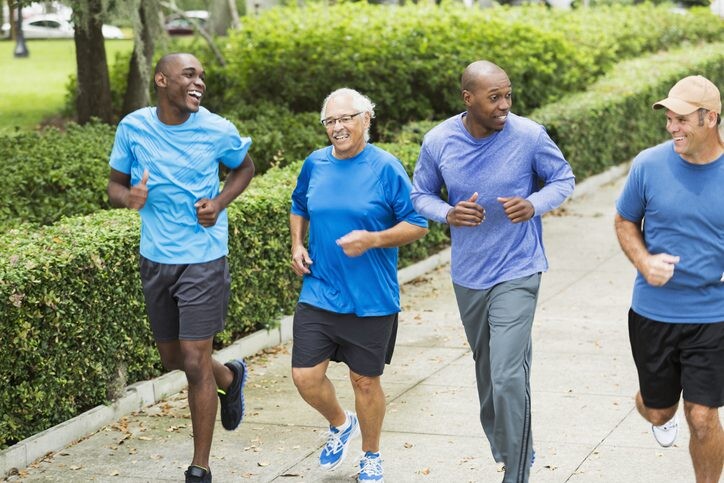
Men with severe ED saw an average improvement of 4.9 points on a 6-30 scale (where higher scores indicate better function), comparable to the improvement typically seen with ED medications. Exercise also doesn’t come with the potential side effects associated with these drugs, such as headaches, vision changes and chest pain. The benefits of aerobic exercise for ED are supported by additional research, including a Harvard University study involving more than 22,000 men aged 40-75. This study found that men who ran for one and a half hours or engaged in three hours of rigorous outdoor activity weekly were 20 per cent less likely to develop ED than those who didn’t exercise.
Why running works
Why does exercise have such a positive impact on erectile function? Exercise promotes overall cardiovascular health, which is closely linked to erectile function. Healthy blood flow is essential for maintaining an erection. Regular exercise also aids in reducing weight, lowering blood pressure and improving blood sugar control, all of which are risk factors for ED.
Exercise also improves the function of endothelial cells, which line blood vessels and regulate the exchange between the bloodstream and surrounding tissues; better endothelial function results in improved vascular and erectile health. Physical activity can temporarily boost testosterone levels, which can enhance libido and erectile function. Exercise helps reduce oxidative stress and inflammation, both of which can contribute to ED.
Healthcare providers are increasingly recognizing the value of exercise for managing ED, making it a recommended strategy for those seeking an alternative to medication, and yet another reason to put on your running shoes.
(07/18/2024) ⚡AMPby Keele Milne
Olympic champion Christine Ohuruogu shares her secret weapon for athletic excellence
Olympic legend Christine Ohuruogu has attributed her athletic success and gold medal glory to a diet rich in meat and dairy. The track icon celebrated her unique pre-race routine with a glass of milk, singing praises of its role in her dietary plan.
Ohuruogu discussed the importance of milk in her diet, particularly for its natural calcium, which she found essential. The MBE awardee said: "As an athlete, I needed healthy bones, muscles, and nerves - but also something which gives me that spark of energy."
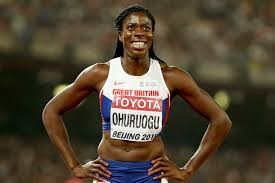
She lauded British milk for being packed with crucial nutrients, saying: "British milk contains essential nutrients like calcium that is important for bone health, as well as protein which supports muscle growth, making it ideal for performance."
Advocating for natural food sources over supplements, she continued: "Milk is often overlooked - and people tend to reach for supplements, but I believe in a natural diet and keeping it clean and simple."
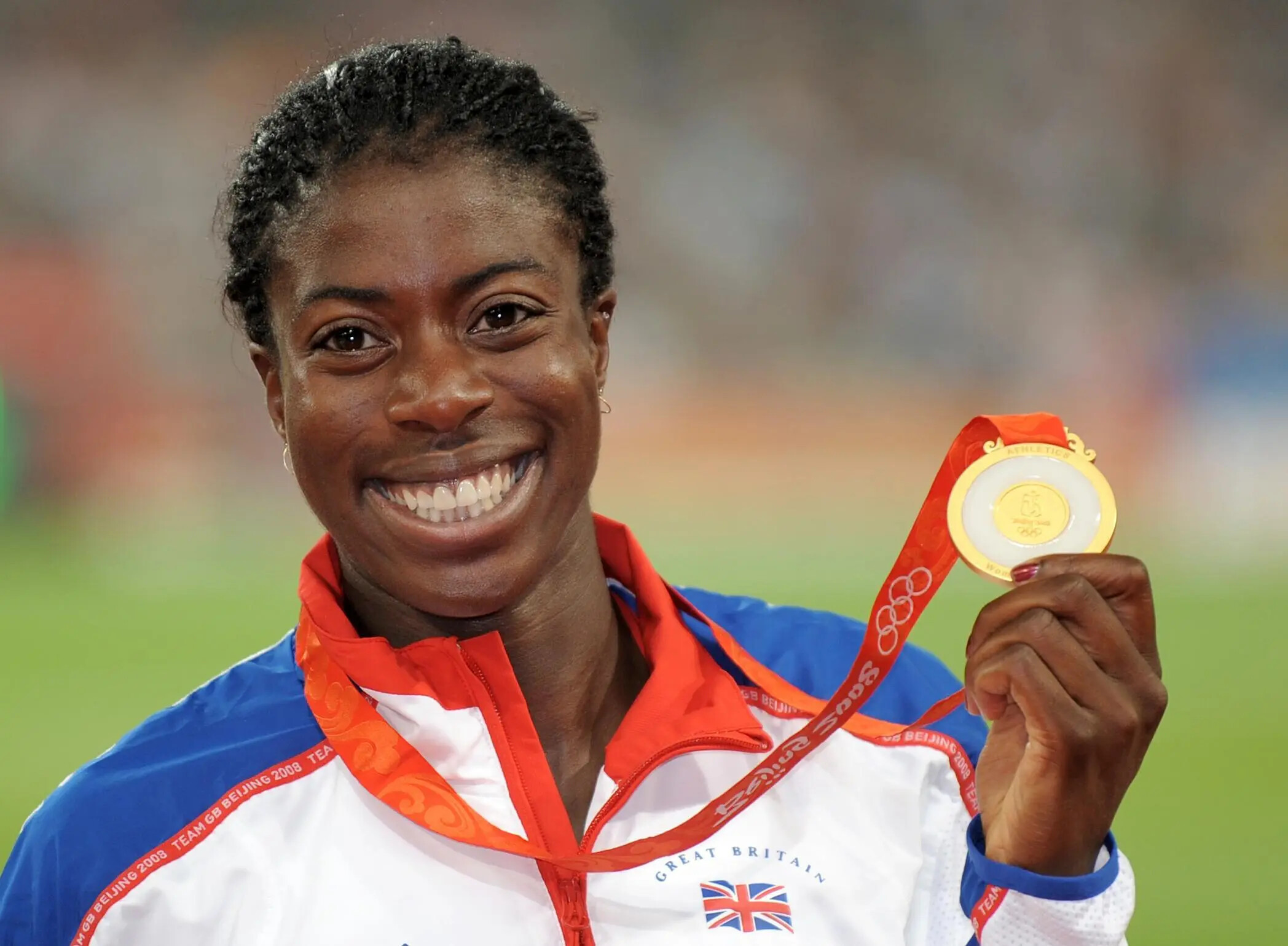
Ohuruogu made these remarks while backing the Agriculture and Horticulture Development Board's (AHDB) campaign to promote the link between sporting achievements and the intake of British dairy and red meat.
In a bold campaign gesture, Ohuruogu has been portrayed in full gold alongside four rising Team GB stars.
It comes as Brits who hit the gym three times a week are increasingly opting for milk, chosen by 39% as a vitamin-rich option, over nutritional supplements at 36%.
Vwaire Obukohwo, Team GB's rowing sensation and face of AHDB's latest campaign, has opened up about her own dietary journey, saying: "Before starting sport I restricted meat and dairy from my diet."
She revealed the struggle that followed: "As I became more competitive, I struggled not having enough energy to complete training and improve my performance."
"Talks with doctors and nutritionists uncovered that I had multiple deficiencies and lacked enough protein to keep up with the high training demands."
She decided: "I could either take supplements - which come with risks of cross contamination with banned substances, can have poor bio availability and are more expensive - or change my diet."
Ultimately, she found success by adjusting her intake: "It was best to re-introduce meat and dairy into my diet which gave me the nutrition I needed to flourish and excel as a high-performance athlete."
AHDB's lead nutritionist Kate Arthur also weighed in on the benefits of dairy, stating: "Milk is naturally rich in high-quality protein, making it an affordable alternative to supplementary protein powders and shakes."
She highlighted its importance for athletes: "Protein supports the growth and maintenance of muscles. It also contains potassium, which helps muscles to work normally."
(07/17/2024) ⚡AMPby Lauren Edwards
Three ways strides will supercharge your running performance
Ready to take your running game to the next level in under five minutes? Strides are your secret weapon. These short, 20- to 30-second bursts of faster running are a fun and efficient way to boost your speed and improve your running form. Whether you sprinkle them into your workout before, after or even during your regular run, you’ll feel the benefits. Finish a long, easy run with some strides to loosen up your legs, increase your range of motion, and perfect your form. Or, use them as a warmup to prime your body for a faster pace.
1.- Enhance running form
Strides can improve your running form by encouraging better posture, increasing your cadence and enhancing your overall biomechanics. By running at a faster pace for short bursts, you naturally adopt a more upright and efficient posture, engage your core muscles and drive your knees higher. This practice helps you develop muscle memory for an optimal running form, making your regular runs smoother and more efficient. Over time, this increased efficiency can make your speedwork feel easier and boost your performance when it really matters.
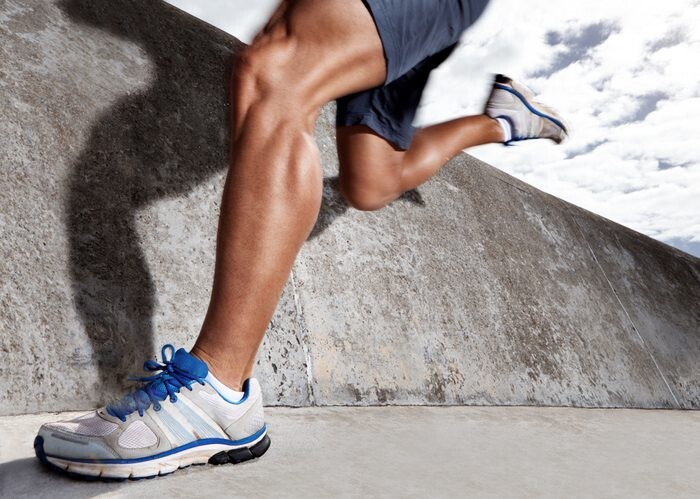
2.- Practice race pace on tired legs
After a tempo run or interval session where you’ve been running slower than your goal race pace, strides provide an opportunity to run more quickly on legs (and a mind) that is already fatigued. This is a great segue into doing more work at race pace as you get stronger, and helps you practice running fast on tired legs, which will come in handy on race day as you charge into a final sprint to the finish.

3.- Kickstart recovery
Strides are not just about speed; they also play a crucial role in recovery and injury prevention. By briefly re-activating your muscles and your circulatory system after your heart rate has already begun to come down, you can help your muscles to take up lactate more efficiently. This is a great way to kick-start the recovery process after a short-to-medium-length workout.
The dynamic nature of strides also helps activate and strengthen muscles that might be neglected during slower, steady-state runs. This can help balance your muscle development and reduce the likelihood of overuse injuries.
Get started today
Adding strides to your training regime is simple, and doesn’t require much time. Begin by adding four to six strides at the end of one or two of your easy runs each week. To perform a stride, gradually accelerate over the first few seconds, reach your top speed by the middle of the stride, and then decelerate.
Focus on maintaining good form throughout, with relaxed shoulders and a quick, light turnover. Allow for a full recovery between strides, either by walking or running slowly for about a minute. As you become more comfortable, you can increase the number of strides or incorporate them into different parts of your training routine.
(07/17/2024) ⚡AMPby Keele Milne
The top 5 male Marathon runners in 2024
Kenya has 3 in the top 5 marathoners, list
In the world of marathon running, Kenya continues to produce elite athletes who dominate the global stage. As we approach the 2024 Paris Olympics, let's delve into the top five marathoners who are making headlines with their exceptional performances.
1. Benson Kipruto - 2:02:16
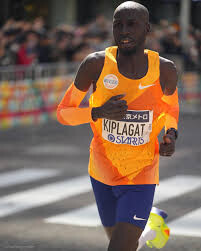
At the forefront is Benson Kipruto, whose recent victory at the 2024 Tokyo Marathon not only set a world-leading time but also established a new personal best. Known for his resilience and strategic prowess, Kipruto's triumph over Eliud Kipchoge in Tokyo solidified his status as a formidable contender for the gold medal in Paris. His impressive track record includes wins at prestigious events like the Boston Marathon (2021) and the Chicago Marathon (2022), highlighting his consistency at the highest level of competition.
2. Timothy Kiplagat - 2:02:55

Timothy Kiplagat emerges as another standout performer, narrowly missing out on Kenya's Olympic team but securing his spot as the reserve athlete. His remarkable second-place finish at the 2024 Tokyo Marathon, where he outpaced Eliud Kipchoge, showcased his ability to excel under pressure and set a new personal best time. With the potential to join the Olympic squad if circumstances permit, Kiplagat remains a key figure to watch in Kenya's marathon scene.
3. Deresa Geleta - 2:03:27
Deresa Geleta represents Ethiopia but deserves mention for his exceptional performance at the 2024 Zurich Maraton de Sevilla, where he set a course record. As part of Ethiopia's Olympic team alongside legends like Kenenisa Bekele, Geleta's prowess in long-distance running underscores East Africa's dominance in the sport.
4. Morhad Amdouni - 2:03:47
Morhad Amdouni, a prominent figure in French athletics, secured second place at the 2024 Seville Marathon and will represent his country at the upcoming Olympics. His training stints in Kenya highlight the allure of Kenyan terrain for honing marathon skills, reflecting the global appeal of East African training camps.
5. Alexander Munyao - 2:04:01
Alexander Munyao rounds off the top five with his impressive performance at the London Marathon, where he triumphed over Bekele in a thrilling finish. With a strong track record in European half marathons and marathons, Munyao's ability to compete at the highest level underscores Kenya's deep talent pool in long-distance running.
(07/17/2024) ⚡AMPby Eric Munene
Why Hellen Obiri is poised to win her first Olympic gold medal
Hellen Obiri has a high chance of winning the coveted Olympic gold medal in the marathon following recent developments in her preparations for the Olympics.
Hellen Obiri has every chance to claim the women’s marathon title at the Paris 2024 Olympic Games, thanks to the latest shoes by her sponsor, On running.
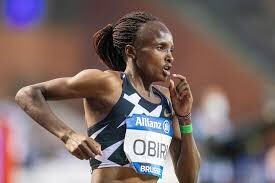
The shoes, set to start retailing on the eve of the Olympic Games will be a major boost for her to impress on the Olympic stage.
The two-time Olympic Games 5000m silver medalist has made it clear that she will be going for the only accolade missing in her trophy-laden cabinet, the Olympic gold medal.
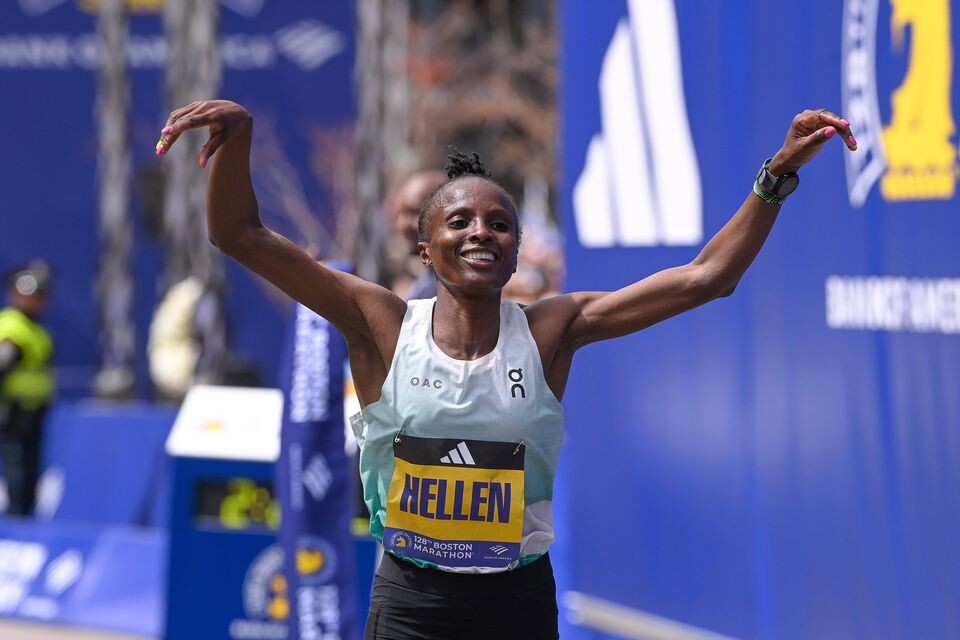
As reported by the New York Times, the 2023 New York City Marathon champion will be wearing the Cloudboom Strike LS, the new sneakers from On.
When Obiri first saw the shoes, she never thought she would fall in love with them but after Boston Marathon win earlier this year, she definitely is not returning them.
“The first time I saw the shoes, I said, ‘No,I can’t run with these.’ The shoes had no laces. They had no heel cap, and a hard plate at the back to keep my foot in place. They were made of a weird, stretchy, plastic-y material,” Obiri said.
She added: “In the changing room, even my colleagues were saying, ‘It’s a joke.’ They were saying, ‘You can’t use these shoes for a marathon.’”
Obiri also noted that having comfortable shoes for the Olympics will certainly help her have a strong winning mindset. “When you trust the shoes, you have that mentality, like, ‘I’m going to run fast,’” she said.
The director of innovation, technology and research for On, Nils Altrogge noted that after Obiri’s win at the Boston Marathon and after training with the shoes for some time, she did not give them back.
Meanwhile, the shoe that will surprise many on the Olympic stage was created from a single semi-translucent synthetic monofilament that was extruded by a robot arm. They were made to help athletes run in the most effective way and are heat-fused to a foam rubber and carbon-fiber sole.
On insist that the shoe weighs 170 grams and has 75 percent less impact on the environment than a traditional sneaker.
“In the end, you need to believe that this look will be adopted. If it is, we believe it could change the industry,” said Marc Maurer, chief executive of On.
(07/17/2024) ⚡AMPby Abigael Wafula
Paris 2024 Olympic Games
For this historic event, the City of Light is thinking big! Visitors will be able to watch events at top sporting venues in Paris and the Paris region, as well as at emblematic monuments in the capital visited by several millions of tourists each year. The promise of exceptional moments to experience in an exceptional setting! A great way to...
more...The KATA monthly time trial (number 35) was highlighted by outstanding performances by the women
The 35th Monthly Kenya Athletic Training Academy (KATA) July time trial was held today July 17th in Thika Kenya. The turn out was good considering the weather. It was chilly and started drizzling as athletes were heading to the starting line.
Men were really affected by wet weather. Despite the effort, Zachary kirika won the men 10km race in 29:39, well outside his personal best.
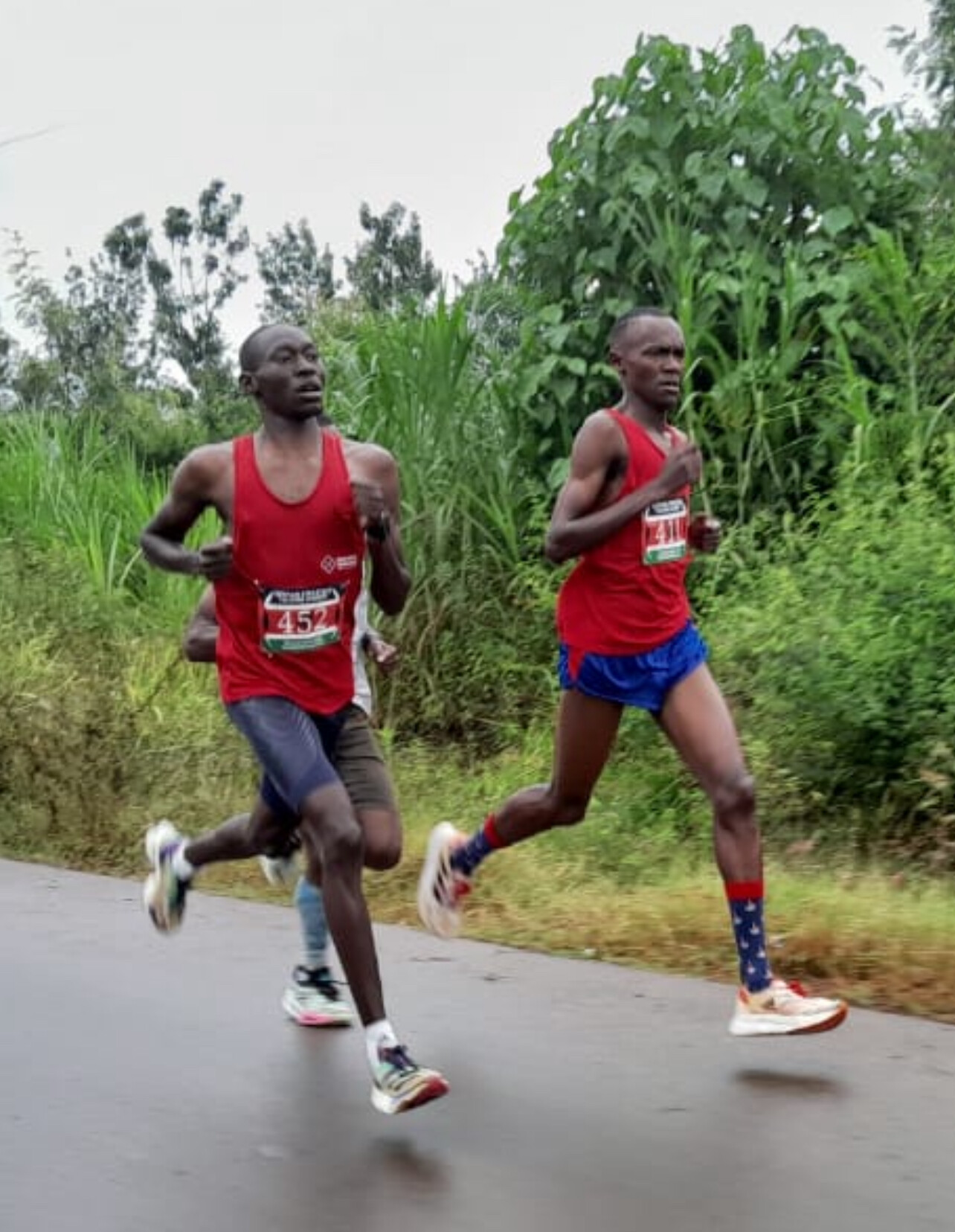
Lewis kuria won the men 5km race in 14:56 which was just ten seconds slower than his previous time.
The day belonged to the women. They defied the cold weather making personal bests and course records. Monica wanjiru won the 5km race in an impressive time of 16:19. This was her personal best time and also the course record.
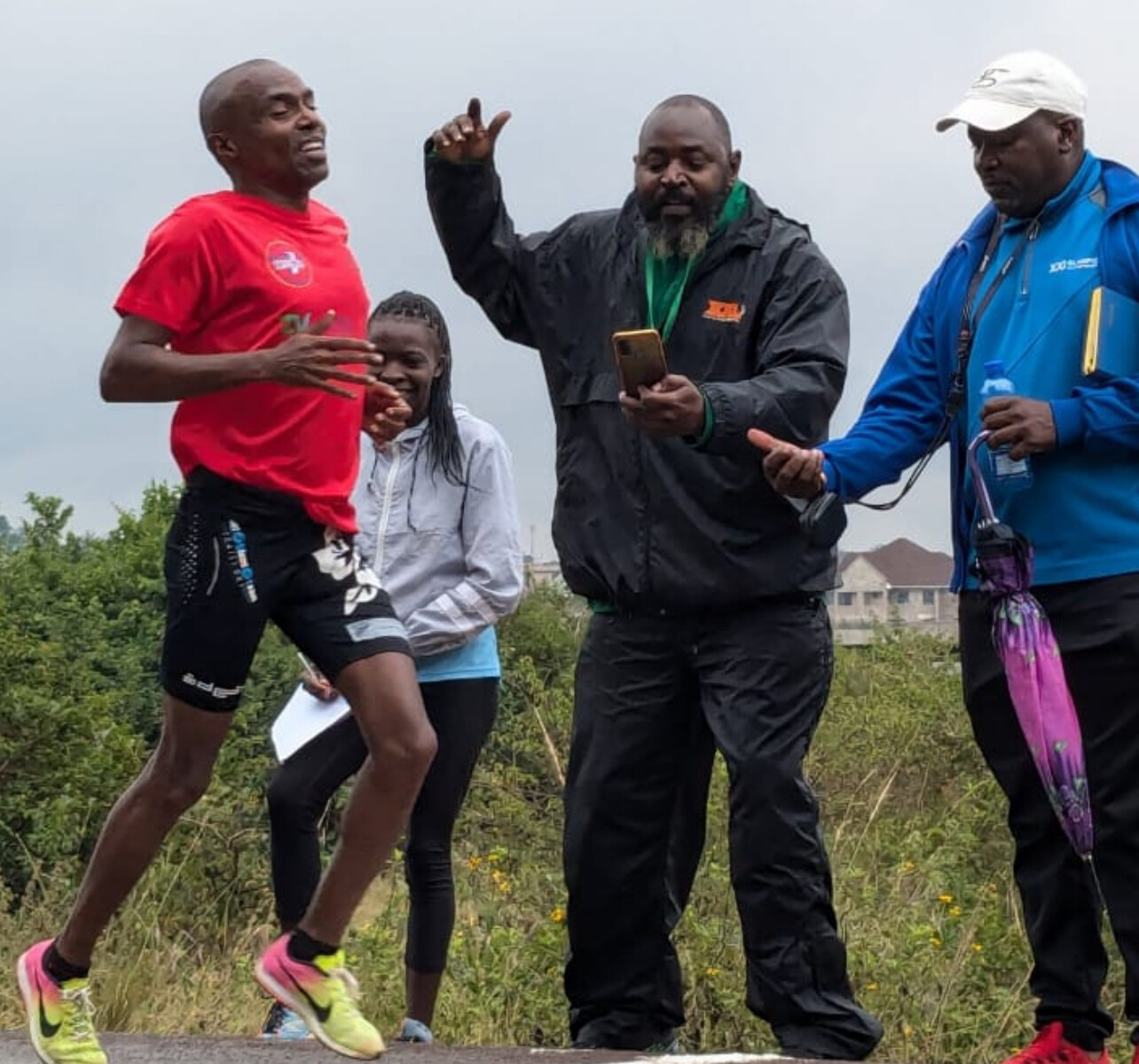
Nympha kiteta only 18 years old took victory in the women's 10km race in a personal best time of 33:53. She was followed by Lois wambui who lowered her personal best by over one minute clocking 35:04.
Virginia wanjiru finished in third place in a personal best time of 35:09.
The overall performances was indeed impressive considering the weather conditions.
Women 5km
1 Monica wanjiru 22 482 16:19
2 Susan njuu 36 179 17:24
3 Karen chepkemoi 22 244 17:51
4 Lilian musenya 22 240 18:23
5 melody ochana 21 149 18:59
6 Anastasia muthoni 21 75 19:08
7 Sheila makungu 21 198 21:32
8 Catherine njihia 22 153 21:43
9 shelmith rono 24 196 24:23
10 Doreen waka 26 251 25:51
11 Catherine waithira 24 242 29:06
12 mwolobi sarafin 19 241 29:07
MEN 5km
1 lewis kuria 22 779 14:56
2: Gabriel kahura 41 998 15:17
3 Shadrack kiprotich 23 120 15:27
4 Charles ndirangu 23 474 15:54
5 Amos chirchir 23 252 16:15
6 Jeremiah obura 20 255 16:40
7 Geoffrey ngama 50 466 17:26
8 Benjamin marauder 26 145 17:38
9 Felix koech 28 450 17:43
10 Ethan ochana 19 138 17:45
11 Anthony owino 28 193 18:39
12 Jared olero 24 458 18:49
13 Alex kamau 22 410 19:52
14 festus waita 29 154 20:37
15 Alvin mise 28 134 20:51
16 Sammy lagat 34 468 21:16
17 Philip kinyanjui 24 453 21:26
10km WOMEN
1 Nympha kiteta 18 335 33:53
2 Lois wambui 23 409 35:04
3 Virginia wanjiru 22 502 35:09
4 Florence kiarie 33 239 37:30
5 Jane wanjiru 41 197 37:44
6 Monica Njoroge 22 131 40:10
7 Ruth maina 21 251 43:23
8 Lucy muritu 39 238 47:38
10km MEN
1 Zachary kirika 22 179 29:39
2 John njuguna 26 245 30:15
3 Stephen ngigi 20 498 30:47
4 peter wanyoike 23 432 31:04
5 Fredrick kiprotich 23 319 31:17
6 Joseph kariuki 38 449 32:16
7 David muriuki 28 642 32:17
8 Joseph wanjiru 27 489 33:33
9 Hezira kiprotich 23 436 33:40
10 Fred kamande 24 457 33:54
11 Ismael mburu 23 205 33:57
12 Charles ndirangu 64 163 37:11
(07/17/2024) ⚡AMPKATA Time Trial Series
Welcome to the KATA Monthly Time Trial Held at the Kenyan Athletics Training Academy in Thika, Kenya, the KATA Monthly Time Trial is a unique and inclusive event designed to support runners of all levels in achieving their goals and showcasing their fitness. This event offers both 10K and 5K distances on an accurate, certified course, providing participants with...
more...Paris 2024 Olympics: 5 races most likely to yield gold for Team USA
Team USA are big favorites to top the Olympics medal standings in track and field yet again and here are five races where the Americans will likely grab gold in Paris.
US Track and Field finally unveiled its team to the Paris Olympics where they hope to finish top of the medal standings yet again.
Team USA scooped seven gold, 12 silver and seven bronze medals at the Tokyo 2020 Olympics, taking their total medal tally from track and field to 26.
Heading into Paris 2024, there is optimism that they will increase their tally following the emergence of new runners, added to the star quality in the team.
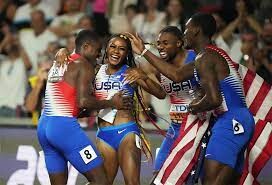
The US team is comprised of world champions Noah Lyles, Sha’Carri Richardson, Grant Holloway among others while there are some like Kenny Bednarek who look in good form heading to Paris.
Pulse Sports looks at where Team USA is likely to win gold medals from on the track at the Paris 2024 Olympics.
Men’s 100m
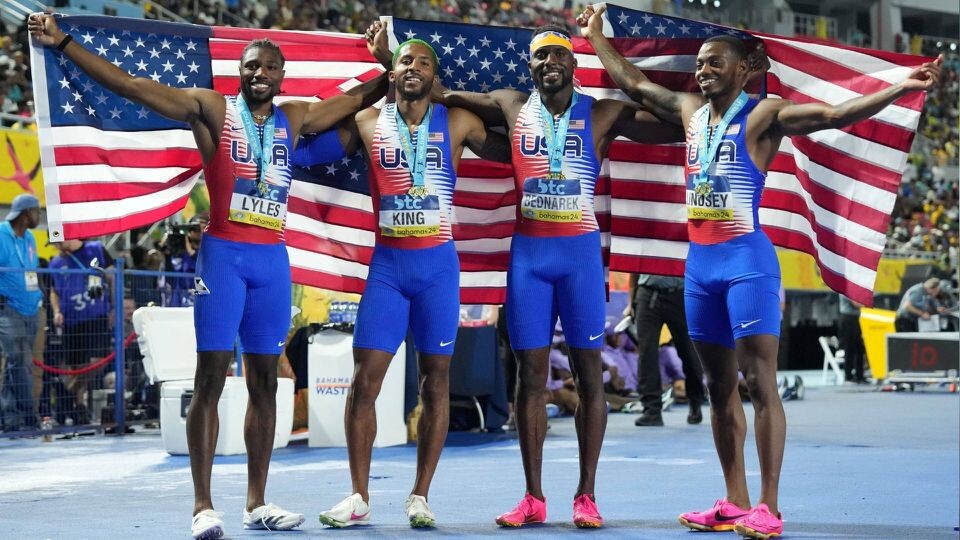
The USA men’s team has world champion Noah Lyles, Kenny Bednarek and former world champion Fred Kerley.
Of the three, Lyles is hot favorite for gold in Paris and laid down the marker with his dominant performance at the Olympics trials.
He will likely face stiff competition from Jamaicans Kishane Thomas and Oblique Seville as well as Britain’s Zharnel Hughes, Bednarek and Botswana’s Letsile Tebogo. However, his experience and form suggest he will bag gold.
Women’s 100m
Another American tipped to win gold is world 100m champion Sha’carri Richardson.
Richardson’s bid for a double failed at the trials when she did not make the 200m team and will have all her focus on the 100m race.
That is not good news for her rivals, who include Jamaicans Shericka Jackson and Shelly-Ann Fraser-Pryce.
She is joined by Melissa Jefferson and Twanisha Terry on the US team but with defending champion Elaine Thompson-Herah not in Paris, few of the other rivals pose real danger, making Richardson a shoo-in for gold.
Men’s 200m
Winning gold in the men’s 200m will be tough for the Americans but they have two good runners capable of achieving it.
Noah Lyles, who has won three world titles over the distance, appears favorite but Kenny Bednarek could just spoil his party which would still be a good thing for Team USA.
The two are joined by Erriyon Knighton but face a threat from Canadian Andre De Grasse, Letsile Tebogo of Botswana and Briton Zharnel Hughes.
However, it is America’s race to lose and it will depend on how Lyles and Bednarek execute their strategy.
Men's 110m hurdles
Triple world champion Grant Holloway is joined on the US team by Freddie Crittenden and Daniel Roberts but he is the man likely to win gold at the Olympics.
Holloway does not dominate outdoors as he does indoors but he is in great form as he heads to Paris having won all his races this year, including last week’s Monaco Diamond League.
Jamaican Hansle Parchment will want to defend his title while home favorite Sasha Zhoya will also pose a threat but Holloway is backed to improve on his silver medal of 2020 this time.
Women’s 400m hurdles
World record holder Sydney McLaughlin-Levrone will start as favorite despite world champion Femke Bol’s good form that saw her break the European record on Sunday.
She made her intensions clear at the Olympics trials when she broke her own world record again, clocking 50.65. Anna Cockrell and Jasmine Jones finished second and third to join her.
McLaughlin-Levrone is not only in good form but also in great shape to defend her crown and few will get close to her in the present condition.
(07/16/2024) ⚡AMPby Joel Omotto
Paris 2024 Olympic Games
For this historic event, the City of Light is thinking big! Visitors will be able to watch events at top sporting venues in Paris and the Paris region, as well as at emblematic monuments in the capital visited by several millions of tourists each year. The promise of exceptional moments to experience in an exceptional setting! A great way to...
more...Ambitious Tauta all set for Olympic debut
The national 400m champion Kelvin Tauta will have a two-pronged attack at the Paris Olympic Games.
In addition to seeking to impress in his Olympic debut, Tauta is keen on using the Olympics as a launchpad ahead of the 2025 World Championships in Tokyo, Japan.
Tauta is part of the Kenyan 4x400m mixed relay team in Paris alongside Maureen Thomas, David Sanayek, Veronica Mutua, Boniface Mweresa and Mercy Chebet.
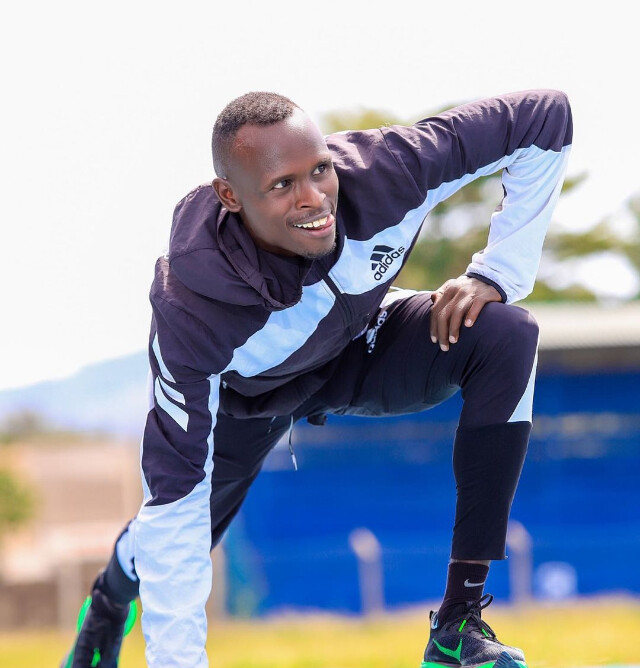
The 23-year-old said: “We are also going to fight for a slot in the final at the Olympics. This will be enough motivation as we look forward to 2025.”
Tauta believes his strong start to the season will fuel his ambitions.
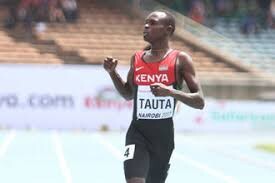
“My season kicked off on a high. I took part in the 4x400m World Indoor Championships and although we did not secure a podium finish, I am happy we secured an African record,” he said.
In Glasgow, Tauta, alongside Wiseman Were, Zablon Ekwam and Mweresa, clocked 3:06.71, shattering Nigeria’s record (3:07.95).
The Netherlands (3:04.25), the USA (3:02.60) and Belgium (3:02.54) secured the podium.
On May 22, Tauta claimed the national crown with a time of 45.09 at the Ulinzi Sports Complex.
Last month, he featured in the African Senior Championships in Douala, Cameroon, but failed to advance past the heats after placing fifth (47.49) in his preliminary round.
Tauta believes the training facilities at Kenya’s Olympic camp in Miramas, France, will be crucial for his improvement.
“The training equipment at Miramas are state-of-the-art. I am sure I will be able to improve and attain my targets,” he added.
He highlighted the rise of sprinting in Kenya and called for government support to develop the sport.
“We are improving in sprint events. Last year we had four athletes running 45 seconds, who have risen to about 10. The government needs to step in and support sprinters,” Tauta said.
(07/16/2024) ⚡AMPby Teddy Muley
Paris 2024 Olympic Games
For this historic event, the City of Light is thinking big! Visitors will be able to watch events at top sporting venues in Paris and the Paris region, as well as at emblematic monuments in the capital visited by several millions of tourists each year. The promise of exceptional moments to experience in an exceptional setting! A great way to...
more...Brazilian Olympic marathoner receives doping suspension
Daniel do Nascimento, a 2:04 marathoner who famously fist-bumped Eliud Kipchoge during the last Olympic marathon, has been banned after testing positive for three illegal substances.
Brazil’s national marathon record holder and Paris Olympic-bound athlete, Daniel do Nascimento, has been provisionally suspended by the Brazilian Doping Control Authority (BDCA) after testing positive for three banned substances: drostanolone, methenolone and nandrolone.
According to Brazilian media outlet Globo, do Nascimento tested positive for the three anabolic steroids during an out-of-competition test conducted on July 4 while training in Kenya for the Paris Games. As a result, he will miss the Olympics. He was slated to run the marathon after qualifying at last year’s Hamburg Marathon with a time of 2:07:06. His personal best of 2:04:51 from the 2022 Seoul Marathon stands as the South American record.
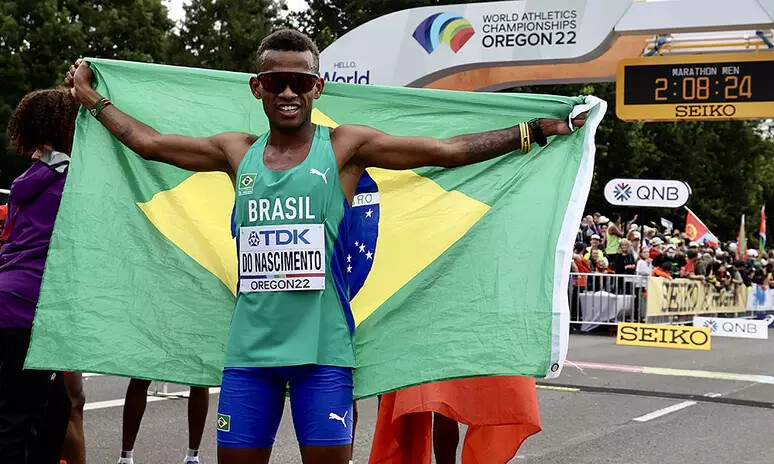
The three banned substances in Nascimento’s test are all anabolic steroids (precursors of testosterone). Do Nascimento will likely face a four-year ban from athletics, jeopardizing his dreams for the 2028 Olympics in Los Angeles. The 25-year-old’s suspension may be reduced to three years if he admits to the three anti-doping rule violations.
Do Nascimento’s girlfriend, Graziele Zarri, was also suspended earlier this year after testing positive for androstanediol and testosterone in a test conducted by the Anti-doping Agency of Kenya (ADAK). She ran 2:42:48 in her marathon debut last December in Valencia.
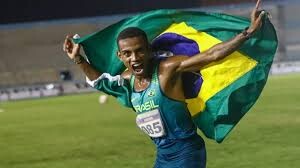
Beside being the South American record holder for the marathon, do Nascimento is most famous for taking a porta-potty stop while leading the 2022 New York City Marathon. He set a blistering pace for 30 km, but ended up collapsing and did not finish the race.
Do Nascimento also made headlines at the 2020 Olympic marathon in Tokyo for exchanging mid-race fist bumps with former world record holder Eliud Kipchoge. The moment went viral, making do Nascimento a well-known name in Brazil and the distance running world.
(07/16/2024) ⚡AMPby Marley Dickison
Top athletes from Kenya, Ethiopia, Spain, Germany and Ecuador will take part in the Bogotá Half Marathon
There are just over 1 week left until the next edition of the Bogotá Half Marathon takes place, a race that takes place year after year in the capital of Colombia and brings together thousands of athletes from different parts of the world. For 2024, the participation of great international athletes is expected.
The mmB, in its two distances (10 and 21 kilometers), will be run on Sunday, July 28. And less than a month from that date, it was confirmed that six star long-distance runners, from different countries and continents, will be competing.
“World-class runners from Kenya, Ethiopia, Spain, Germany and Ecuador appear on the second long list of elite foreign runners who will visit the Colombian capital to compete in the Bogotá Half Marathon on Sunday, July 28,” the organization announced.
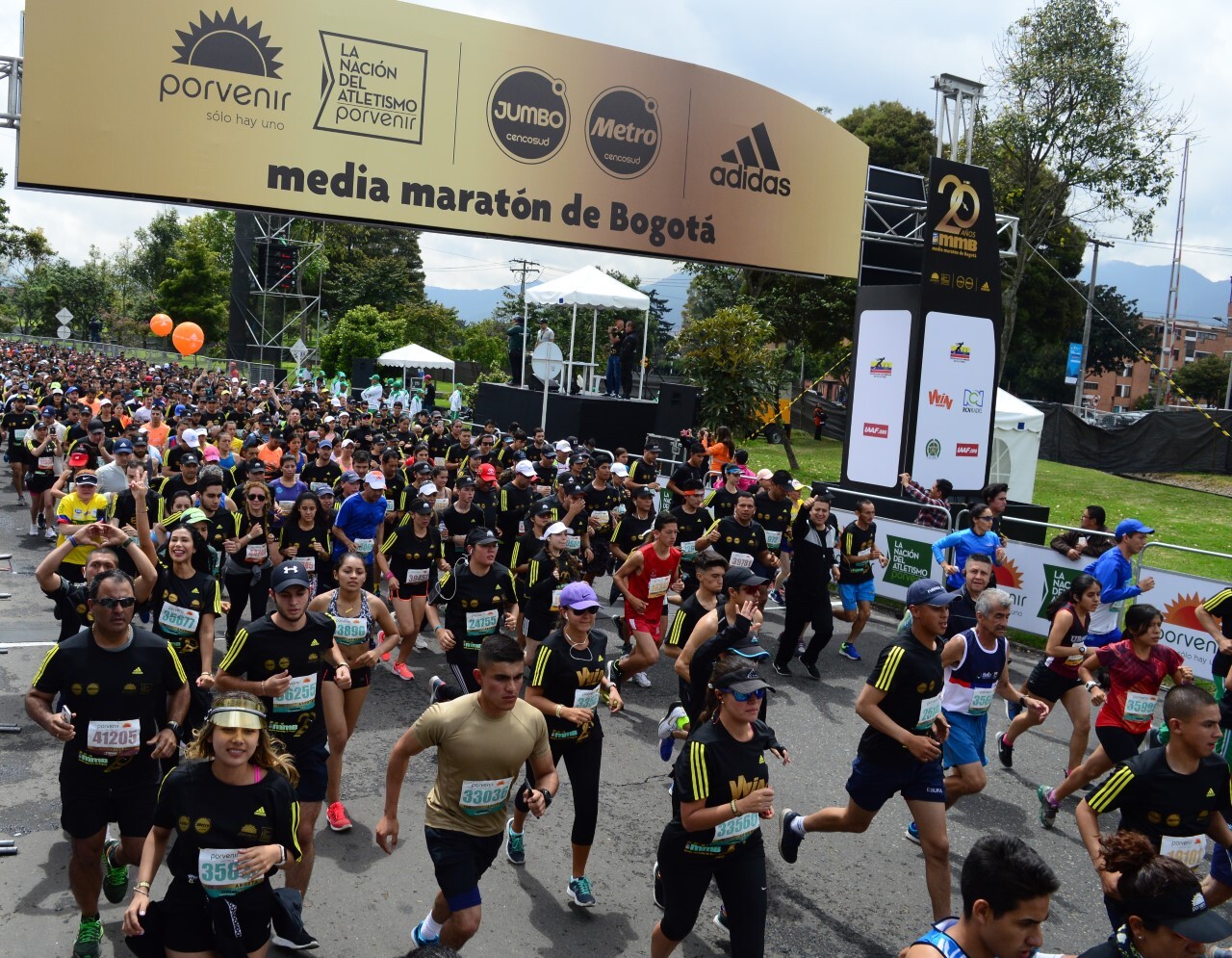
Kenya will be represented by Gladys Kwamboka, recent gold medallist in the 10,000-metre race at the African Athletics Championships, and Philemon Kiplimo, champion of the Boston, Bahrain and Prague half marathons. South America will be represented by Ecuadorian Paula Bonilla, current national champion in the 10,000-metre race.
The participation of the German Esther Pfeiffer, winner of the 2022 Koln Half Marathon and the 2023 Koln Marathon, and the Spaniard Chakib Lachgar, first in the Belgrade Marathon and second in the Azkoitia Half Marathon, was also confirmed. The group of star long-distance runners who will run in Bogotá is completed by Asefa Boki (Ethiopia), current champion of the Xiamen Marathon.
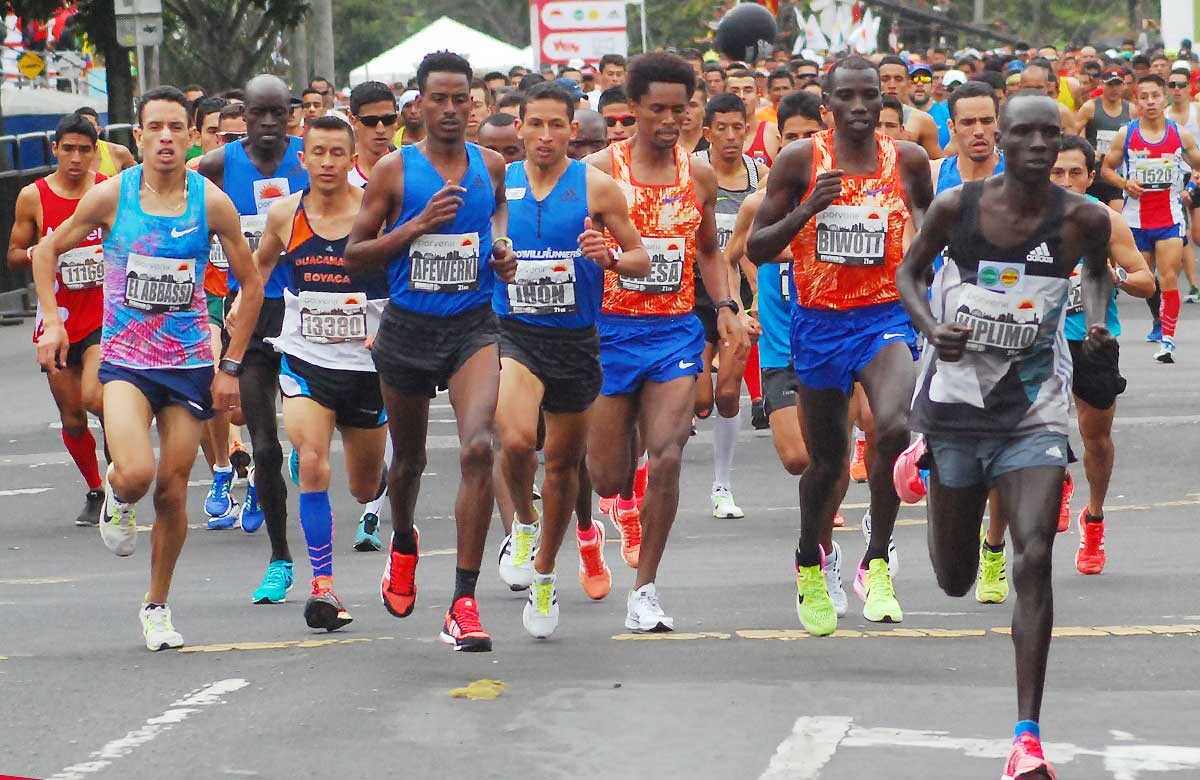
“In this way, the confirmation of foreign elite athletes for the Bogotá Half Marathon is progressing, which this year has a new home, since the Hilton Bogotá Corferias will be the official venue of the race,” concluded the mmB.
Follow the Diario AS channel on WhatsApp , where you will find all the sport in one place: the current news of the day, the agenda with the latest news on the most important sporting events, the most outstanding images, the opinion of the best AS writers, reports, videos, and some humour from time to time.
(07/16/2024) ⚡AMPby Valentín Beato
Bogota Half Marathon
The Bogotá International Half Marathon, or mmB as it is traditionally known, is an annual road running competition over a half marathon distance 21.0975 kilometres (13.1094 mi) taking place in Bogotá, Colombia in late July or early August. Established in 2000, it holds IAAF Gold Label Road Race status, making it the first and thus far only South American race...
more...London Marathon champion shares his winning routine ahead of Paris Olympics
Kenyan marathoner Alexander Mutiso has given a sneak peek into his training routine ahead of tackling the tough marathon course at the Paris 2024 Olympic Games.
Reigning London Marathon champion Alexander Mutiso has discussed his training routine ahead of his Olympic debut at the Paris 2024 Olympic Games.
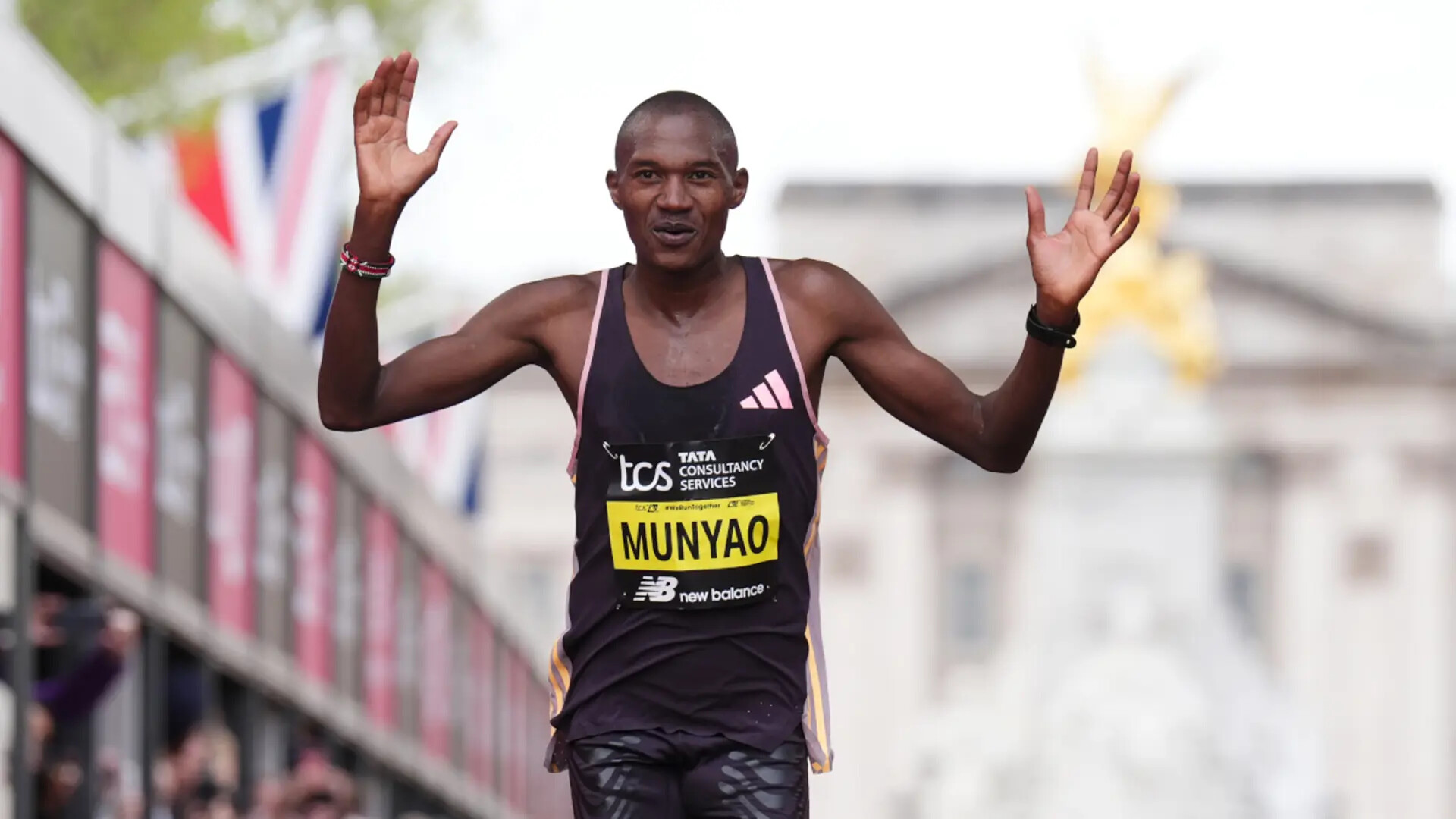
Mutiso has been selected alongside defending champion Eliud Kipchoge and Tokyo Marathon champion Benson Kipruto. Timothy Kiplagat has been selected as a reserve.
The 27-year-old, as he looks forward to win a medal in Paris, disclosed that he mostly works on his strength and endurance.
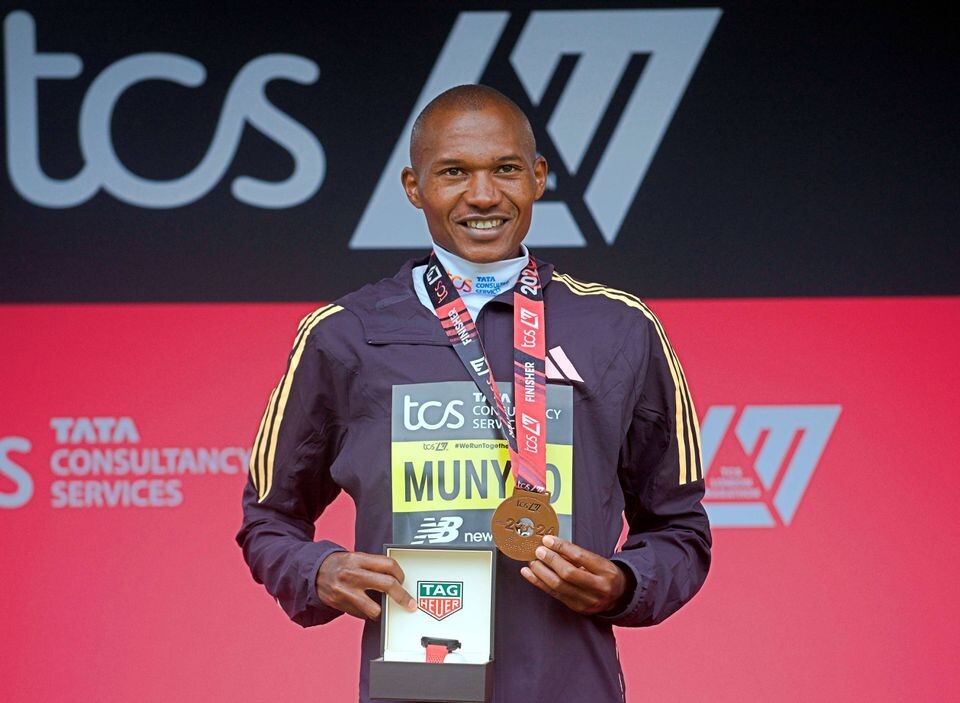
He admitted that the Olympic marathon course is not a walk in the park and his coach decided to focus on the two things, however, he still works on the other aspects. The former world under-18 bronze medalist was also in awe of being selected in the team, saying that it is a dream come true.
“Being selected in the team has always been my prayer and I feel very happy for being given a chance to compete there because I know it’s not easy,” Mutiso told RFI media.
“I start with strength training and going to the gym because we were given the Paris marathon course outlook and we saw it’s not an easy one. My coach and I sat down and discussed the program and how I can train and we have planned everything according to how the course looks like,” he added.
“We have set aside gym days, hard workouts, and then long runs and speed work. I always work towards gaining more endurance through long runs, speed work, and hill runs to maintain my stamina.”
Mutiso noted that diet is also an important aspect of his routine as he plans to face off against the best in the world. The 2023 Prague Marathon champion also maintains discipline and his trust in God stands out above everything.
“Diet is also very important and ensuring I have enough rest. I know we shall be many and everyone is preparing for gold and everyone has to work hard and follow the training program,” he said.
“You also have to trust in God and be disciplined and we shall bring a medal if all goes well. Qualifying for the Olympics is a dream come true and if I manage to win, it will be a very huge blessing in my life.”
(07/16/2024) ⚡AMPby Abigael Wafula
Paris 2024 Olympic Games
For this historic event, the City of Light is thinking big! Visitors will be able to watch events at top sporting venues in Paris and the Paris region, as well as at emblematic monuments in the capital visited by several millions of tourists each year. The promise of exceptional moments to experience in an exceptional setting! A great way to...
more...Boilermaker Road Race: Women's 15K comes down to final steps as new champions crowned
Grace Nawowuna was crowned as the Boilermaker female 15K winner after edging Emmaculate Anya Achol at the finish line.
Nawowuna won by a margin of less than .2 seconds, with the two breaking the ribbon side-by side in 49:17.82 and 49:18.00. Both were born in Kenya and now run out of West Chester, Pennsylvania.
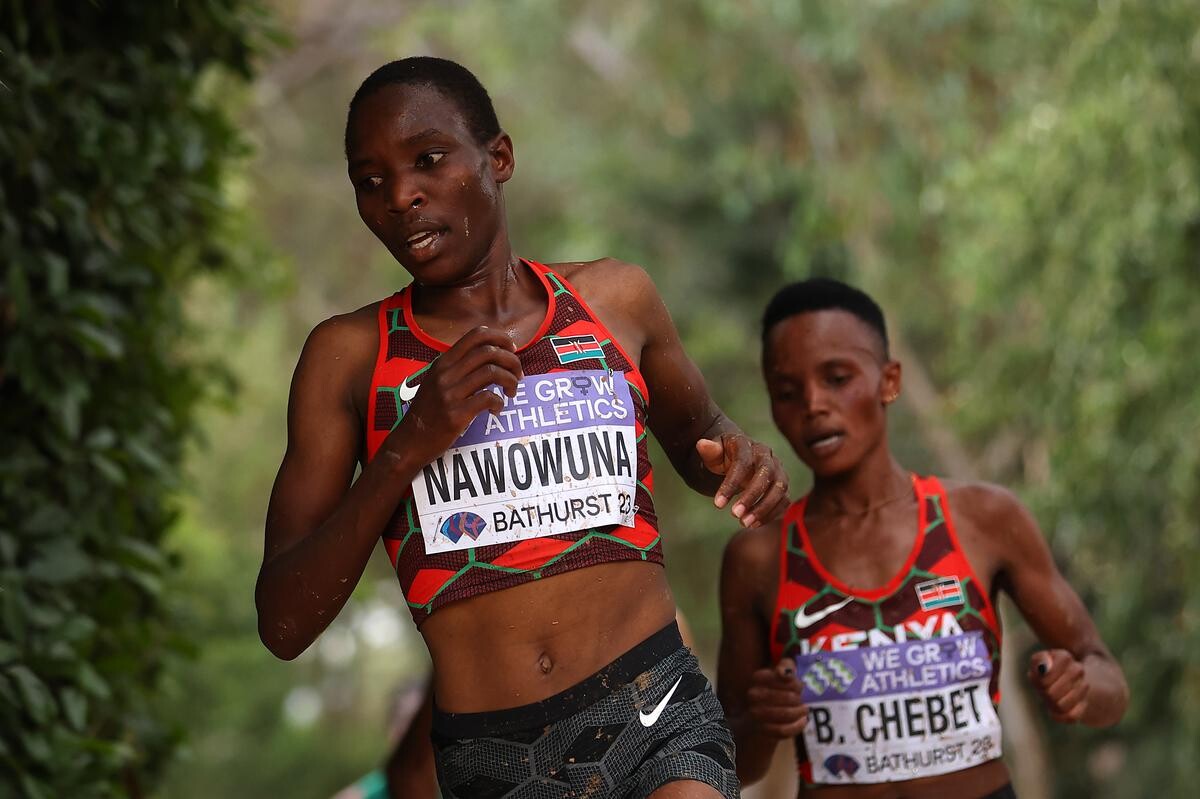
"In my mind, I didn't expect to win," Nawowuna admitted after the race.
Cynthia Jerotic Limo, a third Kenyan, was just over one second behind Achol at the finish, with defending champion Jesca Chelangat fourth, 17 seconds back.

Annamaria Kostarellis, a Rochester native from Arkansas, was the top American finisher in eighth place. She, too, was running the Boilermaker for the first time.
"I heard about (the Boilermaker) growing up," said Kostarellis. "When I thought about taking a trip back home, this seemed like an opportunity to represent Rochester."
Kostarellis added the Boilermaker to her schedule after she withdrew from the U.S. Olympic trials with an ill-timed injury; the former Baylor University runner had planned to compete in the 10,000-meter run. The Boilermaker experience did not disappoint.
"It was so exciting," she added. "I love the energy. I love the community.
"I hope (to return). Please have me back."
(07/15/2024) ⚡AMPby Jon Rathbun
Boilermaker 15k
The Boilermaker 15K is the premier event of Boilermaker Weekend. This world krenowned race is often referred to as the country's best 15K. The Boilermaker 15K is recognized for its entertaining yet challenging course and racing's best post-race party, hosted by the F.X. Matt Brewing Company, featuring Saranac beer and a live concert! With 3 ice and water stops every...
more...Kenyan John Korir captures 2024 Boilermaker 15K title
John Korir of Kenya finished first at the 47th Boilermaker 15K Road Race presented by Excellus BlueCross BlueShield, falling just short of last year’s record at 42:11.
This year’s 15K race saw 7,967 finishers, with 3,663 crossing the finish line for the 5K, up from 6,973 and 3,125, respectively, in 2023.
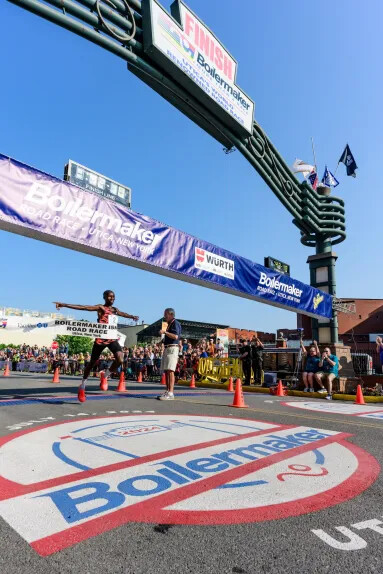
Korir successfully unseated the champion of the 2022 and 2023 Boilermaker, Jemal Yimer of Ethiopia. Yimer came in second place this year, just 8 seconds slower at 42:19. Yimer and Korir remained neck and neck throughout the race before the golf course.
Biya Simbassa of Flagstaff, Arizona, led the pack of American athletes, finishing 8th overall with a time of 43:53.
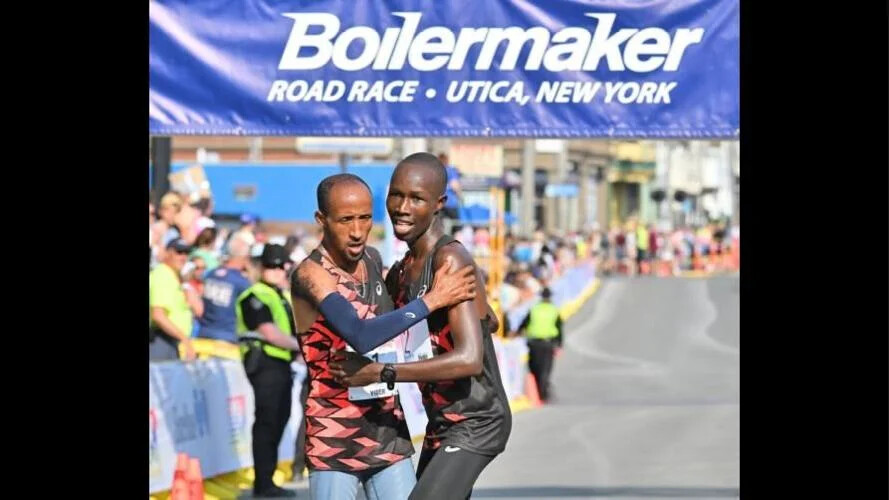
Winning the Women’s Open Division by a matter of milliseconds was Grace Loibach Nawowuna of Kenya, who broke the tape at 49:18. Emmaculate Anya Achol, also of Kenya, came in just mere steps behind Nawowuna.
The American women’s contingent was led by Annamaria Kostarellis of Arkansas, who finished in fifth place overall with a time of 50:18.
Canadian Josh Cassidy defended his title in the men’s open wheelchair division with a time of 34:05, beating Utica’s own Hermin Garic, who finished second with a time of 36:06. The 2024 Women’s Wheelchair Open Division saw a new champion in Hoda Elshorbagy of Illinois finishing in 40:25.
19-year-old Brendan Carter of Watertown, Massachusetts, won the 5K Road Race presented by Utica National in 15:38, crossing the finish line 13 seconds ahead of second-place finisher Dan Casatelli of Deansboro. Annika Hurley of Springfield, New Jersey, won the women’s open division of the 5K at 19:03.
“The 2nd Sunday in July never seems to fail to deliver beautiful weather for the Boilermaker,” said Mark Donovan, Boilermaker president, “for our 47th running, Mother Nature provided yet another picture-perfect day for our participants and spectators, making for a great experience.”
(07/15/2024) ⚡AMPby Guest
Boilermaker 15k
The Boilermaker 15K is the premier event of Boilermaker Weekend. This world krenowned race is often referred to as the country's best 15K. The Boilermaker 15K is recognized for its entertaining yet challenging course and racing's best post-race party, hosted by the F.X. Matt Brewing Company, featuring Saranac beer and a live concert! With 3 ice and water stops every...
more...Sifan Hassan to race four events at Paris 2024 Olympics
At the Tokyo 2020 Olympics, Dutch distance runner Sifan Hassan made history by winning three individual medals across three different athletics disciplines, two golds and one bronze. She won golds in the women’s 5,000m and 10,000m events, and bronze in the women’s 1,500m behind Faith Kipyegon and Laura Muir. Well apparently three events didn’t keep Hassan busy enough, raising the stakes for Paris 2024 by competing in the 1,500m, 5,000m, 10,000m and the marathon—an unprecedented Olympic quadruple.
According to an announcement from the Dutch Olympic team, Hassan is entered in all four disciplines and will race a total of seven times over 10 days. Her most challenging stretch will be from Aug. 8-11, when she is scheduled to race the 1,500m semi-finals and finals, the women’s 10,000m final, and the women’s marathon on the final day of Paris 2024 (Aug. 11); all on consecutive days.
Hassan is the only athlete in Olympic history to have medaled in the 1,500m, 5,000m and 10,000m events at a single Games. She is also the first to qualify for and attempt this quadruple-distance feat.
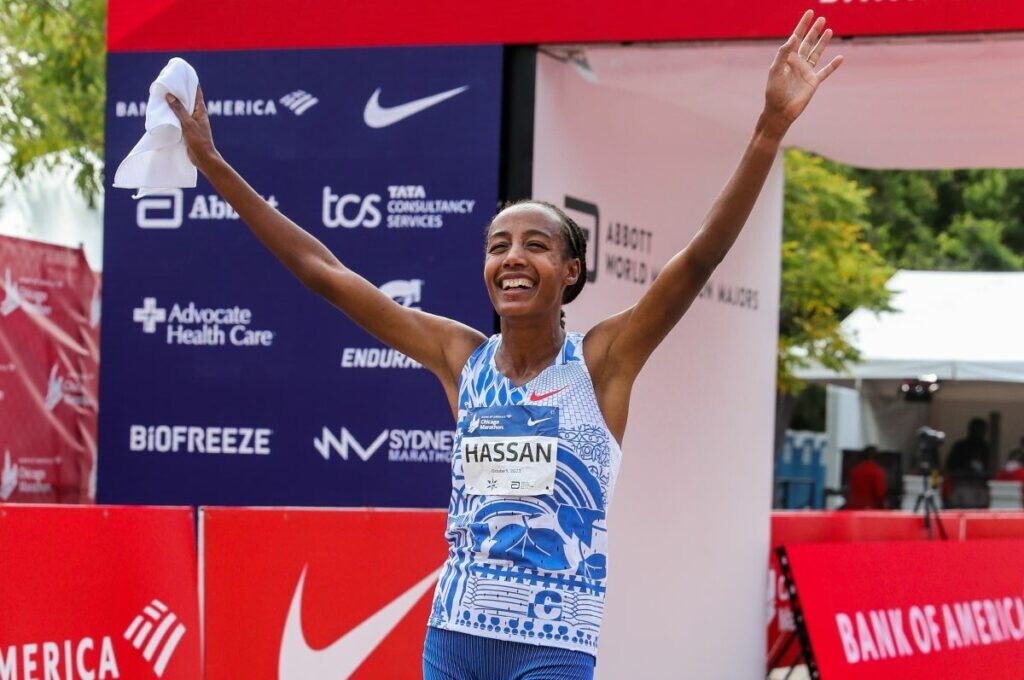
Last year, Hassan expanded her repertoire by adding the marathon to her list of racing disciplines. She won her marathon debut at the 2023 London Marathon and went on to clock the second-fastest women’s marathon time in history (2:13:44) to win the 2023 Chicago Marathon.
Hassan’s Paris 2024 schedule is ambitious. Although she is one of the greatest distance runners in history, replicating her Tokyo success will be incredibly challenging. The women’s 1,500m and 5,000m are two of the deepest events right now, featuring formidable competitors like defending world champion Faith Kipyegon, Laura Muir (Olympic silver medallist), Australia’s Jessica Hull (2,000m world record holder), Ethiopia’s Gudaf Tsegay (5,000m world record holder), and Kenya’s Beatrice Chebet (world XC champion). Hassan’s best chances for a medal lie in the women’s 10,000m final and the marathon, which come at the end of the Olympic schedule.

Here’s a look at Hassan’s Olympic schedule:
August 2: 5,000m, Round 1 – 6:10 p.m.
August 5: 5,000m, Final – 9:10 p.m.
August 6: 1,500m, Round 1 – 10:05 a.m.
August 8: 1,500m, Semifinal – 7:35 p.m.
August 9: 10,000m Final – 8:55 p.m.
August 10: 1,500m, Final – 8:25 p.m.
August 11: Marathon – 8:00 a.m.
Only two athletes have won four medals at a single Olympic Games: U.S. sprint icon Florence Griffith-Joyner, who won three golds and one silver (in the 4x400m relay) at Seoul in 1988, and Fanny Blankers-Koen of the Netherlands, who won four golds at the 1948 Olympics in London in the 100m, 200m, 4x100m relay, and 80m hurdles.
(07/15/2024) ⚡AMPby Marley Dickison
Paris 2024 Olympic Games
For this historic event, the City of Light is thinking big! Visitors will be able to watch events at top sporting venues in Paris and the Paris region, as well as at emblematic monuments in the capital visited by several millions of tourists each year. The promise of exceptional moments to experience in an exceptional setting! A great way to...
more...How a trip to Kenya motivated former optician Guillaume Pontier to nurture athletics talent in Iten
Frenchman Guillaume Pontier is passionate about nurturing talent in Iten and has opened up on the motivation he got when he visited the area for the first time alongside his father, who was a coach.
Frenchman Guillaume Pontier, a former optician, is making huge contributions in the Kenyan athletics scene to ensure the nurturing of talents continues.

Most Kenyan athletes come from humble backgrounds and affording training gear is always an uphill task but Pontier has made it easy for the athletes, providing them with affordable training gear in a store set up in Iten.
With the help of the Distance Athletics company, where Pontier is the co-founder, he was able to construct a tiny metal hut in 2022 with the outside of the structure reading, “For All Runners”.
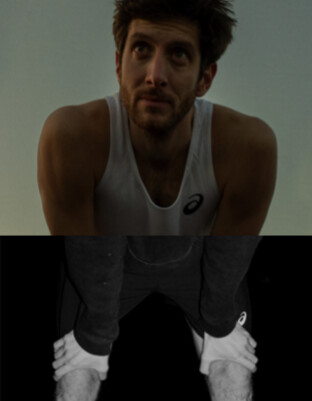
There, they sell second-hand shoes from well-known brands with prices ranging from about Ksh 300 to Ksh 1500.
His motivation came from a trip to Kenya with his father, Jef, who was a coach of the France national marathon team some years back. Seeing athletes run barefoot with some wearing inappropriate gear, Pontier was motivated to help them. His father also spent much of his time in Iten where he trained French runners.
“It’s a community project, not a profit-driven enterprise. We saw many athletes on our trips running barefoot because they didn’t have trainers. It’s inaccessible. In Kenya they run 200km a week…They need shoes to do that,” Pontier told Financial Times.
To ensure the shoes are sold at fair prices, Pontier noted that he has by Ledisha, a local athlete, who works with her brother at the shop and they always decide the prices of the shoes.
The training gear sells fast and Pontier admitted that once they restock, news spreads like wildfire and dozens of athletes flock the store to purchase what is available. Due to that Pontier decided to partner with Distance’s European stores to help.
(07/15/2024) ⚡AMPby Abigael Wafula
This Ultramarathoner Runs 100s of Miles to Build Inner Strength and Confidence
“Through ultrarunning, I’ve learned how tenacious and resilient I am.”
Name: Rachel Bambrick Age: 31 Hometown: Philadelphia Occupation: Occupational therapist, ultrarunning coach, founder of Women in Ultrarunning Time Running: 9 years Reason for Running: Running, and ultrarunning in particular, teaches me something new about myself every time I’m out on the trail.
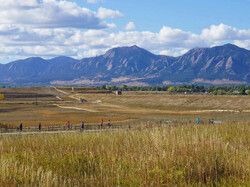
When I moved to Philadelphia in 2016, I wanted to find an active community to meet new people and continue to challenge myself. I laced up my shoes, and started running with run clubs in the city.
In 2018, I watched a friend take part in the Run Across Haiti, a 200-mile run in eight days, organized as a fundraiser for WORK, a nonprofit which financially empowers families through employment.
I knew it would be difficult to push myself through the distance. I had never run an ultramarathon before, but I was determined to see how far I could go. I decided to take the leap and give ultrarunning a try through a worthwhile cause in Haiti.
Inspired by my friend, I completed Run Across Haiti in 2019, raising money for WORK. The adventure made me reflect on what drew me to ultra distances. While fighting sore muscles, scorching heat, and self doubt, I surprised myself that I still continued and succeeded. This journey of self-discovery empowered me to explore my limits.
I kept running ultramarathons following Run Across Haiti, and eventually set my sights on something longer: the epic Cocodona 250-mile race, which leads from Black Canyon City to Flagstaff, Arizona through the rugged and exposed trails of the backcountry.
In May 2023, I set off from Black Canyon City. For more than 119 hours, I wondered if I was strong enough to finish, and if I would make the cut-off time. When I could actually sleep, it was just for an hour or two at aid stations, or curled up in the dirt on the side of the trail.
But I kept moving, and telling myself “I am exactly where I need to be” and “It will get better.” I cried and smiled when I saw the finish line in Flagstaff. I was proud of how far I had come and of my inner strength in those many challenging moments.
I’ve been lucky to reach many starting lines these past few years and meet amazing people. But I felt like something was missing. I wanted to create a space for women to share experiences, knowledge, and support in ultrarunning.
So, I founded Women in Ultrarunning in January 2024 as a four-part program providing women in the Philadelphia area with a space to learn about ultrarunning. The group is a mix of seasoned ultramarathon runners and newer ultra runners who are looking to sign up to their first ultra race.
The first events began at local trailheads with an introduction to ultra running, mental strategy, nutrition, and how to navigate technical trails.
After discussions, we set off through the trails for a 90-minute run, maintaining an average 13-minute-per-mile pace to stay together. Our goal is to foster community and connection, not break speed records. We’re out there to enjoy the company, stay together, and learn from one another. A time-based group run allows us to be pace inclusive and welcome those who may be out on their first trail run.
Women in Ultrarunning is now a community across the United States, and an online community on Heylo to celebrate each other’s successes, help find training partners for runners, and chat about all things ultrarunning, like gear, nutrition, and strength and conditioning. It has been surreal to see an idea that lived in my head grow into fruition and take shape.
Through ultrarunning, I’ve learned how tenacious and resilient I am. I’ve also found a supportive community that I’m proud to be a part of. Because of the Women in Ultrarunning community, I’ve experienced a connection to ultrarunning in a way I never thought was possible.
I hope to be here for years to come with glitter on my cheeks and a smile on my face to continue to cheer on women as they achieve their toughest goals.
These three tips have made my running journey a success:
1. Be consistent and patient with nutrition on the run
Just like training your legs for races, you need to train your stomach for races. Don’t be disheartened if you have a string of discouraging runs. The process can be very rocky, and you may need to try a few brands before you find what works for you! It took me years to be comfortable with fueling on long runs.
2. Remember that trail pace is different than road pace
Getting used to running on rocky terrain, sand, or dirt takes time and practice. While it’s easy to get swept up in paces on the roads, try to run on trails based on effort. Some miles will be slow going! What matters is you are still moving forward.
3. Give yourself grace
Remember in running you’ll have low moments, but what is important is how you pull yourself out of the negativity. Feel the struggle and remind yourself it’s okay to feel down, then put yourself back into a mindset that allows you to continue positively. If you fall or fail, give yourself grace to get back up and continue on.
Rachel’s Must Have Gear:
→ WildSense Run Glitter: My approach to running and ultras is all about adding softness and sparkle wherever I can. Wild Sense’s glitter is all natural and biodegradable so I can feel good about the sparkly little trail I may leave behind.
→ HOKA Challengers: Living in the city of Philadelphia, being a trail/ultrarunner can be tough sometimes! Often my runs have one objective: How can I get to the trails? The Challengers are perfect because they’re designed as all-terrain shoes so I can easily take them from city streets to the trails of the Wissahickon.
→ Zensah Seamless Run Bra: As an ultrarunner, chafing can be a huge issue. Especially with sports bras. This bra from Zensah has been my go-to for all my long efforts and races for years. I used these bras for the entirety of the Cocodona 250 in 2023 and walked away without any bra hotspots.
(07/14/2024) ⚡AMPby Runner’s World
Teen sprinter sues Gatorade over doping ban that cost him an Olympic spot
The fastest high school sprinter in history is suing Gatorade, claiming the company gave him a fraudulently certified product that contained a banned substance and led to his four-year banishment from track and field, costing him a chance to compete in the Paris Olympics.
Issam Asinga, the Surinamese teenager who set the under-20 world record in the 100 meters, said that when Gatorade honored him as its high school track and field athlete of the year in July 2023, it provided a gift basket that included Gatorade Recovery Gummies. In a lawsuit filed Wednesday, the 19-year-old Asinga claims those gummies are the reason he later tested positive for the banned substance GW1516, which led to a four-year ban this May and stripped him of his record. The suit further claims the company took measures to protect its reputation, damaging Asinga’s in the process.
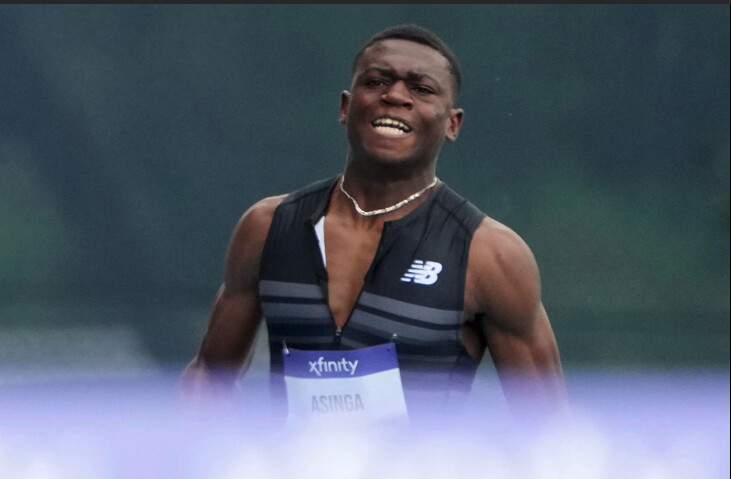
Asinga filed suit in the Southern District of New York against Gatorade and Pepsi Co., its parent company. He is seeking, according to the lawsuit, to “recoup the millions of dollars he has lost in economic opportunities, as well as compensation for the devastating emotional harm he has suffered.”
In an emailed statement, a Gatorade spokesperson said: “The product in question is completely safe and the claims made are false. … Gatorade products are FDA compliant and safe for athlete consumption, which was validated by the findings of the Athletics Integrity Unit investigation.”
Were he eligible, Asinga could have competed for Suriname at the Paris Olympics, earning potentially millions on a sponsorship deal. Instead, he is banned from the Games and lost his endorsement opportunity. The suspension also will prohibit him from training with or competing his college teammates at Texas A&M, and despite support from his coaches, Asinga believes he could lose his scholarship.
“You’re either guilty or you’re not,” Asinga said in a Zoom interview alongside his lawyers. “I know I’m not, so I’ve got to chase my dream. I’ve got two Olympian parents; I was born to run. Am I going to destroy my dream because of something I didn’t do, or am I going to keep fighting until the end?”
‘I was honored when they told me to get tested’
Asinga grew up in Atlanta, went to a St. Louis boarding school, lived a couple of years in his mother’s native Zambia, went to high school in Florida and currently attends Texas A&M. He is the son of track and field Olympians: His mother, Ngozi, competed for Zambia, and his father, Tommy, once served as the flag bearer for Suriname.
By the summer of 2023, Asinga had become one of the world’s most promising track athletes. That April, he stunned the track world by beating world champion Noah Lyles in a 100-meter race in Florida with a wind-aided time of 9.83 seconds.
Asinga chose to compete under the flag of Suriname. In a Zoom interview Wednesday, as he described the effect of his son’s suspension on his home country, Tommy began to cry.
“I felt like I had more of an opportunity to make a difference running for Suriname,” Issam Asinga said. “In Suriname, the one thing that’s holding them back is the facilities. They don’t have someone who can make that difference. I can use whatever I do in my track career to help better this country.”
Gatorade named him its 2023 Florida boys’ track and field player of the year and invited him to a July 11 ceremony in Los Angeles. One month before the ceremony, according to the lawsuit, Asinga took a drug test that came back clean.
“I was honored when they told me to get tested,” Asinga said. “I was like, ‘Okay, bet!’ That’s how I know I’m going somewhere.”
At a gathering the day before the awards ceremony, Gatorade gave Asinga and other athletes a gift bag that included cherry-flavored Gatorade Recovery Gummies. The container was stamped as “NSF Certified for Sport.” NSF is an independent public health organization.
According to the lawsuit, Asinga’s mother texted Issam’s coach, Gerald Phiri, a photo of the ingredient label and asked, “Is this ok to eat[?]”
When Ngozi showed him a picture of the Gatorade logo, Phiri wrote back: “Oh yea these are both fine. Gatorade doesn’t make products that are against sporting rules.”
For the next two weeks, according to the lawsuit, Asinga took two gummies after his workouts. The Athletics Integrity Unit (AIU), the drug-testing arm of World Athletics, tested him again July 18.
Asinga stopped taking the gummies “on or around” July 25, according to the lawsuit. On July 28, Asinga ran the 100 meters in 9.89 seconds at a meet in São Paulo, Brazil. This time, the wind was legal: He had broken the under-20 world record. The AIU tested him again on that day, and that July 28 test would come back clean.
On Aug. 9, 2023, the AIU informed Asinga he had failed the July 18 drug test. Picograms of GW1516 had been detected in his urine. When Asinga received the call, he said, he dropped to his knees in shock.
“It was devastating,” Asinga said. “It was the worst day of my life.”
Known as cardarine, GW1516 was originally developed as a potential treatment for obesity and alters how the body metabolizes fat, according the U.S. Anti-Doping Agency. It is illegal for use in food or medication. The U.S. Anti-Doping Agency notes in its handbook, “athletes should be aware, however, that dietary supplements may be contaminated with this compound.”
Asinga and his lawyer, Paul Greene, who specializes in defending athletes accused of performance-enhancing drug use, compiled a list of foods and supplements he had consumed that could be tested for GW1516. They included the Gatorade gummies.
“We kind of laughed it off,” Asinga said. “It was the last thing I would have thought this source would have been in. This brand is something I’ve looked up to my whole life. Gatorade is a part of sports.”
Asinga sent the gummies to the same lab, according to the lawsuit. On Oct. 26, 2023, according to the lawsuit, the lab notified the AIU that “preliminary findings” concluded the Gatorade gummies had been contaminated with GW1516.
When a company produces a dietary supplement that requires certification, it makes them in numbered lots so each lot can be tracked in case of contamination. By federal regulation, it must keep samples of each lot.
According to the lawsuit, further testing at the Utah lab confirmed not only the GW1516 contamination in the gummies Asinga had supplied; it also showed the same baseline concentration of GW1516 that had been detected in Asinga’s drug test. The chemical codes matched. The lab provided those analytical results to the AIU.
According to the AIU decision, the lab noted “two unusual aspects.” There was a “large discrepancy in the findings between the two containers of the Gatorade Recovery Gummies” and the contamination was present on the surface of the gummy rather than uniformly distributed.
The lab concluded “it was not possible to rule out deliberate adulteration of the product after it was opened,” the decision read.
Asinga’s lawyers said it defies belief that Asinga could have adulterated the gummies.
“All of them would have had to have been dipped individually in a formula that would have been watered to a trillionth of a gram,” Greene said. “An 18-year-old kid living in a dorm would have had to have done that. It’s almost laughable that that’s what he was accused of doing.”
According to the lawsuit, Asinga again contacted Gatorade and requested a sealed bottle from the 22092117150234 lot.
According to the lawsuit, Gatorade instead sent a bottle of recovery gummies to the AIU from a different lot. That lot had been tested by NSF and was accurately labeled as such, according to the lawsuit. The NSF, in a a public notice issued in early June, said the container in Asinga’s case came from an allotment it had not tested.
“They did a bait-and-switch,” said Alexis Chardon, the lawyer representing Asinga in court. “They said, ‘We don’t have a sealed supplement of the one we gave Issam. But we have this other one. Why don’t you take this one?’ That one was NSF tested. And then they let that lie fester.”
“Gatorade fully complied with the Athletics Integrity Unit investigation, including producing evidence that was accepted by the AIU that the gummies were not contaminated with the banned substance in their original ruling,” a Gatorade spokesperson said in an emailed statement.
When the AIU tested the gummies from that container, the results came back clean, according to the lawsuit. Once the AIU received those tests, it handed down its four-year ban to Asinga.
“Gatorade created, fed, and encouraged the false narrative that Issam was given ‘clean’ gummies and therefore Issam had adulterated the ones he got tested,” the lawsuit reads.
Attempting to restore a reputation
On June 14, less than two weeks after the NSF released its public notice about Gatorade, Asinga received what he hoped would be a breakthrough: A representative from the AIU called Greene and told him Gatorade had found and sent a sealed bottle from the same lot as Asinga’s bottle of recovery gummies. If that bottle was tainted with GW1516, it would be pivotal to overturning Asinga’s suspension.
The tests came back negative, according to the lawsuit.
Feeling “confused,” according to the lawsuit, Asinga contacted other athletes from the 2023 awards ceremony and found one who had a similar bottle of recovery gummies. When that bottle was tested for GW1516, according to the lawsuit, it also came back negative.
“For a while, it looked like we dug ourselves in deeper,” Chardon said.
According to the lawsuit, Asinga’s team had one more idea: On June 26, they asked for his original recovery gummies to be retested. They wondered whether the GW1516 had become undetectable over the previous six months.
On July 5, according to the lawsuit, the results came back: The gummies that once had tested positive now returned a negative result.
“Gatorade’s delay had cost Issam the possibility of proving contamination in a sealed container from the same lot he had ingested, robbing him of the possibility of ever meeting the AIU’s gold standard test for showing innocent ingestion of a banned substance,” the lawsuit reads.
In a statement, Gatorade said it “spent those months looking for the specific lot number in the field and, once sourced, immediately provided the product to the AIU.”
Because GW1516 is illegal, Greene said, scant testing has been done on it. Greene is hoping to organize lab tests that can prove GW1516 could become undetectable over the six months. He hopes to use that finding in his Court of Arbitration for Sport appeal later this year.
The lawsuit against Gatorade made Wednesday “one of the first days I can say I’m actually taking a deep breath and let it out a little bit,” Ngozi said. “As a parent, it’s so overwhelming. You never in a million years expect your child to be fighting for his character and his integrity because of something he didn’t do.”
Over the past month, Asinga lost his final glimmer of hope that he could run in the Paris Olympics. He has remained optimistic that he will sprint next year for Texas A&M. He has cried and felt depressed at times. Over the winter, he stopped practicing for several days and wondered whether track was worth it. He still believes he will prevail.
“It hurts,” Asinga said. “There’s been some bad days. The clouds might be over us. But they’re going to have to clear eventually.”
(07/14/2024) ⚡AMPLudovic Pommeret Wins Hardrock 100 in Course-Record Time Courtney Dauwalter is on course-record pace, trying to win the race for a third consecutive year
This is an ongoing story that will continue to be updated as more runners reach the finish line in Silverton, Colorado.]
Maybe you forgot that Ludovic Pommeret was the 2016 Ultra-Trail du Mont-Blanc champion. Or that he was the fifth-place finisher in Chamonix, France, just last year. Or maybe you thought the 49-year-old Frenchman was past his prime. Either way, he reminded us all he’s at the top of not only his game, but the game at the 2024 Hardrock 100.

The Hoka-sponsored runner from Prevessin, France, took the lead less than a third of the way into the rugged 100.5-mile clockwise-edition of the course after separating from countryman François D’Haene, the 2021 Hardrock champion and 2022 runner-up, and never looked back. Pommeret progressively chipped away at the course record splits—a course record, mind you, set by none other than Kilian Jornet in 2022—to win this year’s event in 21:33:12, the fastest time in the race’s 33-year history. Jornet set the previous overall course record of 21:36:24, also in this clockwise direction in 2022.
(Pommeret kissed the rock in to complete the course in 21:33:07 at 4:33 A.M. local time, but race officials credited him with the slightly slower official time.)
“It was my dream (to win it),” Pommert told a small collection of fans and media after winning the race at 3:33 A.M. local time. “I was just asking ‘when will there be a nightmare?’ But finally, there was no nightmare. Thanks to my crew. They were amazing. And thanks to all of you. This race is, uh, no word, just so cool and wild and tough.”
On Friday, July 12, 146 lucky runners embarked on the 2024 Hardrock 100. Run in the clockwise direction this year, it was the “easy” way for the course with a staggering 33,000 feet of climbing and an average elevation over 11,000 feet thanks to the steep climbs and more tempered, runnable descents.
Combined with relatively cooperative weather (hot during the day on Friday, but no storms) and a star-studded front of the pack headlined by Courtney Dauwalter and D’Haene, the tight-knit Hardrock 100 community was on course record watch.
And the event delivered—along with a whole lot more.
On the men’s side, the front of the race took a blow before the gun even went off when Zach Miller, last year’s Ultra-Trail du Mont Blanc runner-up, was denied entry after undergoing an emergency appendectomy the weekend before.
Despite the heartbreak of being forced to wait another year to participate in this hallowed event, Miller was very much a presence in the race, most notably for slinging fastnachts (Amish donuts) from his van in Ouray for race supporters and fans.
Such is the spirit of this event, deemed equally as much a run as a race.
The men’s race was further upended when D’Haene, in tears surrounded by his wife, three children, and friends, dropped from the race at the remote Animas Forks aid station (mile 58). An illness from two weeks before proved insurmountable for the challenge ahead. That blew the door wide open for the hard-charging leaders ahead.
Pommeret had built a 45-minute lead over Jason Schlarb, an American runner who lives locally in Durango, and Swiss runner Diego Pazosby, the time he had left the 43.9-mile Ouray aid station amid 85-degree temperatures. His split climbing up and over 12,800-foot Engineer Pass (mile 51.8) extended his lead to more than an hour over Schlarb and nearly 90-minutes at the Animas Forks aid station.
“I thought it was great. To run off the front like he did, and then just hold that all day and get the overall course record is pretty awesome,” Miller said. “When Killian did it, two years ago, it was a, it was a track race between him, Dakota, and François, after they got some separation from Dakota, it was Kilian and and François, all the way to Cunningham Gulch (the mile 91 aid station) and then Kilian just torched it on the way in. So yeah, it was super, super impressive for Ludo to do that. That’s a very impressive effort.”
The sleepy historic mining town of Silverton, Colorado was unusually hectic at 6 A.M. on Friday. In the blue hour before the sun poked over the San Juan Mountains looming above, 146 runners toed the start line of the Hardrock 100, marked by flags from the countries represented by competitors on either side of the dirt road.
With the sound of the gun, runners jogged off the start line—their caution a tacit sign of respect for the monumental challenge of what was to come. As the runners passed through town to the singletrack wending its way up to Miner’s Shrine, group of men headlined by D’Haene, Ludovic Pommeret, Diego Pazos, and Jason Schlarb quickly took command of the front, the bright yellow t-shirt of Courtney Dauwalter was easy to spot just behind, along with Katharina Hartmuth and Camille Bruyas.
If they weren’t awake already, runners certainly were after crossing the ice-cold Mineral Creek two miles into their journey before starting the grunt up to Putnam Basin. At the top of a sunny, grassy Putnam Ridge (mile 7) 1:34 into the race, the lead pack of men remained, while Dauwalter had made a statement solo just three minutes back from the men and four minutes up on Hartmuth.
Dauwalter was smiling and chatty when she reached the KT aid station at mile 11.5, in 2:24 elapsed. By Chapman (mile 18.4), four hours in and 10 minutes under her own course record pace, she was pouring water on her head under the blazing sun. Things were heating up—in more ways than one.
When Pommeret galloped into Telluride (mile 27.7) after 5:37 of elapsed time in the lead, he was right on Jornet’s course record pace. One minute, some fluids and restocking later, and he was gone.
But wait, it was still a close race! D’Haene charged into Telluride just two minutes later and hardly stopped before continuing on through downtown before busting out the poles and starting the steep, steep 5,000-foot climb up Virginius Pass to the iconic Kroger’s Canteen aid station nestled into a notch of rock at the top at 13,000 feet.
Not to be outdone, the women’s race proved equally thrilling coming into Telluride. Bruyas bridged the gap up to Dauwalter, and the two ran into town together in 6:25 elapsed. Both took three minutes in the aid station, although that must have been enough social time for Dauwalter, as she pulled ahead marching up the climb, poles out and head down. A bouncy Bruyas alternated between hiking and jogging just behind.
But time again again, Dauwalter’s long, powerful stride simply proved unparalleled. By Kroger’s (mile 32.7) Dauwalter had reestablished her lead by five minutes over Bruyas and 17 ahead of Hartmuth in third. She’d built that gap to 10 minutes in Ouray at mile 43.9, but she left that aid station in less than two minutes with a stern, serious look on her face. But as she crested Engineer Pass at the golden hour, wildflowers blanketing the vibrant green hillsides basking in the setting sun, she enjoyed a 30-minute lead in the women’s race and was knocking at the door of the men’s podium.
While Dauwalter forged ahead with her unforgiving campaign for a third straight win, the men’s race started to rumble. Like Dauwalter, Pommeret continued to blaze the lead looking strong as he trotted down Engineer to the Animas Forks aid station at mile 57.9 in 11:39 elapsed. He hardly stopped before continuing on to Handies Peak, which at 14,058 feet marks the high point of the race. He had blown the race wide open.
An hour and 15 minutes later, Schlarb, looking a bit more beleaguered, ran into Animas Forks with his pacer, where he sat down and changed his shirt while receiving a pep talk from his partner and son. But he made quick work of the time off feet nonetheless, and three minutes later he was back at it, seven minutes before Pazos appeared.
While D’Haene arrived just 10 minutes later, he did so in tears, holding the hand of his youngest son. After a considerable amount of time sitting in the aid station, surrounded by his family and crew, he called it quits. The lingering effects of an illness from just 10 days before proved too much to overcome as the hardest miles of the race loomed ahead.
While D’Haene pondered his fate, Dauwalter blitzed into Animas Forks in 13:26 with that same look of determination, 16 minutes ahead of course-record pace. She briefly stopped to prepare for the impending night, picking up her good friend and pacer Mike Ambrose to leave the aid station in fourth overall. Bruyas maintained her second place position 30 minutes back, with Hartmuth in third about 20 minutes behind her.
Pommeret continued charging ahead solo, increasing over Schlarb and Pazzos by more than two hours late in the race. When Pommeret passed through the 80.8-mile Pole Creek aid station at 10:44 P.M., it shocked the small group of race officials, media and fans watching the online tracker from the race headquarters in Silverton. Based on that split, it was originally calculated that Pommert could arrive as early as 2:34 A.M.—which would have been a finishing time of 20:34—but he didn’t run the final 20 miles quite as fast as Jornet did in 2022.
Behind him Pazos caught Schlarb to take over second place before Pole Creek and increased the gap to four minutes by the Cunningham aid station (mile 91.2).
Pommeret, who develops training software for air traffic controls in Geneva, Switzerland, didn’t break into ultra-trail running until 2009 when he was 34 years old. He was third in UTMB that year—behind a 20-year-old Jornet, who won for the second straight year—the first of seven top-five finishes in the marquee race in Chamonix. (He was third in 2017 and 2019 and fourth in 2021 and 2023.) He also won the 90-mile TDS race during UTMB week in 2022, and the 170-kilometer Diagonale des Fous race (Grand Raid La Reunion) on Réunion Island in the Indian Ocean in 2021 and placed sixth in his first attempt at the Western States 100 in California in 2022.
Last year, Pommeret placed 13th overall in the Western States 100 and nine weeks later finished fifth at UTMB behind Jim Walmsley, Miller, Germain Grangier, and Mathieu Blanchard.
“We know Ludo is a beast, but to be a beast for so long, for so long is so impressive,” Miller said. “He’s 49, which by all means is a capable age in this endurance world. But I think anytime someone 49 does something like that, it’s gonna turn some heads because that would’ve been a really good performance for anyone. To have the track record he’s had—winning Diagonale des Fous, UTMB and Hardrock, that’s pretty impressive.”
Courtney’s Final
By the time Dauwalter was pushing her way up Handies Peak, she had a smile on her face and engaged in playful conversation with media and spectators on the course. She had good reason to smile: she was feeling good and she had increased her 10-minute lead at Ouray to more than 60 minutes. Dauwalter went through the Burrows aid station (mile 67.9) in less than a minute, while Bruyas came in an hour later and spent four minutes refueling before heading out again.
Three hours after Pommeret had passed through the Pole Creek aid station (mile 80.8), Dauwalter arrived at 1:54 A.M., still in fourth place overall about 50 minutes behind Pazos and Schlarb. She took a little more time there, but was back on her feet in four minutes and running strong again and still on record pace. Bruyas walked in to Pole Creek at 3:08 A.M. in sixth overall, but the gap behind Dauwalter continued to widen.
Dauwalter was in and out of the Maggie aid station (mile 85.1) in two minutes and blazed through the Cunningham aid station (mile 91.2) even faster. The race seemed to be in hand at that point with Bruyas more than 90 minutes behind (in fact, someone updated Wikipedia and declared her the winner not long after Pommeret finished), it was just a matter of how fast she could finish.
(07/14/2024) ⚡AMPHow to Keep Tick Bites from Ruining Your Summer
More people in the U.S. are being diagnosed with tick-related diseases every year, but we don't have to let that stop us from getting outdoors.
At home in Brooklyn, New York, my wife and I have discovered ticks on our dog, a pit-boxer mix who lacks the wherewithal to notify us of such an intruder. A few weeks ago, I found a tick—luckily, before it bit—on my arm while visiting Oakland, California. Outside editors have been coming across the disgusting creatures in northern New Mexico, northern Virginia, and coastal Massachusetts.

A decade ago, my little sister contracted Lyme disease in high school, so I have always been paranoid about tick bites. And with growing tick populations, ever more tick-related diseases, and a flurry of headlines about both, I’m sure I’m not alone.

There are hundreds of species of ticks, but the one to be most concerned about in the United States is Ixodes scapularis. The hard-body tick, also known as the blacklegged tick or deer tick, is a vector for a handful of diseases, including Lyme. “It causes far and away the most trouble in terms of health,” says Dr. Peter Krause, a senior research scientist with a specialty in epidemiology and infectious diseases at Yale Medicine.
Ticks are experiencing a largely unwanted glow-up in our current times. The largest vector-borne disease today is still Lyme, says Alison Hinckley, epidemiologist with the Centers for Disease Control and Prevention’s (CDC) Division of Vector-Borne Diseases in Fort Collins, Colorado. She cites a 2021 estimate based on insurance records that shows 476,000 Americans are diagnosed and treated for Lyme disease each year, which can cause headaches, muscle aches, joint swelling, severe fatigue, and even neurological symptoms. (As a point of comparison, only about 2,000 cases of Rocky Mountain spotted fever are reported each year in the U.S.) The reasons for the rise in Lyme range from deer populations to climate change. It’s enough to make me consider trading my hiking boots for gym trainers.
But if we stay inside, the bugs win. So we spoke to some experts to learn why ticks are prospering, what we can do about it, and how to continue to exercise outside safely. The good news? You can take precautions no matter your outdoor sport of choice, and finding a tick doesn’t have to be a five-alarm emergency.
According to the CDC, there are ticks in every state, though different species (carrying different diseases) proliferate in different environments. For instance, the lone star tick, named for a white spot on its back, is often found in Texas, and the brown dog tick thrives in Arizona. Lyme hails from Krause’s home state of Connecticut—it was named for the town of Old Lyme, in the state—but he might also encounter wood ticks and brown dog ticks, which can both transmit Rocky Mountain spotted fever. It’s not very common, he says, but the disease can cause fever, nausea, muscle pain, and a host of other scary symptoms. Despite its name, the lone star tick can also be found in Connecticut (it’s prevalent elsewhere on the East Coast, too, and in the southeastern and south-central United States), and can transmit an infection that leads to Alpha-gal Syndrome, which sometimes causes a permanent allergy to red meat. And that’s just one state. Another tick-borne disease, Babeosis, used to be called “Nantucket fever,” because one of the first cases in America was found on the nearby Massachusetts island in 1969. The Gulf Coast, American dog, and winter ticks transmit different pathogens around the country. You can see what ticks live in your state on the CDC website.
Still, the majority of tick-borne illnesses in the United States are Lyme disease. Ticks have a three-stage life cycle, Krause explains. As larvae, ticks feed on small mammals like mice. If these mammals are carrying Lyme-causing Borrelia bacteria, the tick is now infected and can transmit the disease. The “bloodmeal” (yum!) allows the larvae to molt into its next stage, when it is known as a nymph. At this point, if a nymph feeds on a human, the human will become infected.
Climate change is a major factor in the rise in tick diseases. Ticks need temperate, moist climates—they’ll die if it’s too hot, cold, or dry. Global warming, Krause says, is increasing tick habitat, with more areas becoming warm and humid. Given the southern states are experiencing hot, dry weather, they might have a temporary decrease in tick populations, but that hasn’t yet been shown, he says.
As a point of proof, Krause points to our northern neighbor. Canada was not historically home to Lyme-carrying tick populations, but now sees many cases of Lyme each year, due to both climate change and tick migration. Deer ticks, predictably, travel on the backs of deer and other furry creatures, but they can also attach to birds, Krause says, allowing them to establish a new colony hundreds of miles away.
The second factor that might be fueling today’s tickflation is deer distribution. Adult ticks use deer as all-you-can-eat mating hotels, and a single deer can host hundreds of ticks, Krause explains. “Wherever deer are, there are a lot more ticks than there would be without deer,” he says.
There is some agreement from across the pond. Dr. Lucy Gilbert is a Senior Research Fellow at the University of Glasgow with a focus on ecology, environmental change, and infectious disease ecology, along with evolution and diversity. Her research strongly suggests that the boom in deer distribution and abundance is a greater factor in the proliferation of ticks (though not necessarily Lyme disease) than climate change.
Lyme disease cases surged by 69 percent in 2022, according to the CDC. But even as data collections gets more efficient, there are still likely many cases missed. As STAT News reports, “There are a lot more cases of Lyme disease in the country than are ever reported to the CDC.”
The increase in disease incidence, Gilbert says, may be related to deer and climate change. Additional factors could be better awareness from the public and doctors identifying tick-related diseases, paired with an increase in outdoor recreation.
The simple answer is that activities that put you in tick habitat—long grass or forests with dense shrubs—will be higher risk than sports that don’t. Hiking and running in the woods increase the likelihood that you’ll encounter a tick. Even short grass, like you’d find on a baseball field or soccer pitch, can carry ticks, Krause says. Something on a hard court, like basketball, would be very low-risk.
The CDC recommends staying away from thick vegetation, high grass, and leaf litter and to “walk in the center of trails when hiking,” to avoid brushing up against grass or other plants where ticks might be hanging out.
Riding a bike on a trail might be lower-risk than running it, says Krause, because ticks will have greater difficulty reaching you from the grass, and cyclists are more likely to stay in the center of the trail. Walking may also be safer than trail running, as you’re more likely to avoid brushing any grasses in places with sharp turns, Krause says.
Dr. Kevin DuPrey, a sports medicine specialist, wrote a 2015 article about Lyme disease in athletes for Current Sports Medicine Reports, and he also has firsthand experience. When running cross-country at University of Delaware, Duprey contracted Lyme disease. Before he was diagnosed and treated, he’d experienced mid-race fatigue—to the point of wanting to lie down and nap during the middle of a competition.
Today, as a precaution, DuPrey tries to avoid overgrown trails especially from mid-May through August, when the transmission rate is highest for Lyme and other tick-borne diseases. He’ll check himself for ticks after running, or even mid-run if he’s in an overgrown area.
He recommended bug spray with DEET to repel ticks, but also offered a clothing tip: light-colored threads can make it easier to spot ticks on your body.
The CDC also recommends using EPA-registered insect repellents (like OFF! Active Insect Repellent I), wearing loose-fitting clothing, and treating your gear with permethrin, an insecticide that should not be applied directly to your skin. The organization even has chat bots to help you find effective repellents (they recommend something with DEET, picaridin, IR3535, oil of lemon eucalyptus, para-menthane-diol, or 2-undecanone) and assessing tick bites.
“In general, DEET, if used as prescribed, is safe,” Krause says. You wouldn’t want to apply it to a small child if they’re going to lick their skin, he says, but considers it safe overall when used as directed. If ingested, it can cause serious side-effects including seizures, according to the National Pesticide Information Center. But aside from a chance of skin irritation, it’s safe to apply topically. Permethrin, which is only suitable for application to gear and clothing, has more safety concerns, says Krause.
When you head back inside, Hinckley recommends you check your clothing and gear for ticks. Then, using a mirror, check your entire body, particularly under your arms, in and around ears, inside your belly button, the backs of your knees, your hair, between your legs, and around your waist. Then, take a shower as soon as possible.
Hinckley also encourages good tick hygiene for pets. Preventative products like topicals, chews, and collars can help, and she advises manual pet-downs for ticks after time outside. This isn’t just for your pets sake—ticks can take a pitstop on your four-legged roommate before making their way to you.
It’s understandable that you might freak out if you find a tick, especially if it’s attached. But if you find it early—within 36 to 48 hours—DuPrey say, the chance of Lyme disease transmission is actually very low.
If you’re uncertain how long it’s been since you were bitten, he advises seeking professional medical advice, especially if you were bit during the summer months, find a circular rash, or experience flu-like symptoms. If caught early, both Krause and Duprey says, Lyme and other tick-borne diseases can be treated with antibiotics.
As an expert who’s closely studied ticks and tick-borne diseases, Gilbert praises the media’s coverage in highlighting tick awareness and Lyme disease. But she says there is sometimes “too much scare-mongering and exaggerating the outcomes of Lyme disease.” While noting that some people progress to chronic Lyme disease, which can be debilitating, the vast majority of people who contract Lyme do not develop a long-term illness.
Gilbert has heard about certain tick-removal techniques like applying Vaseline, olive oil, or burning them off your skin, but her advice is simple: “This is not a good idea!” Instead, she recommends gently plucking the tick off of your skin by its mouth, using fine tweezers or tick tools (available at veterinary clinics, pharmacies, and online) which won’t squash the tick. If you do find a tick, take a picture before you dispose of it, so you can show it to a doctor in the event you need to visit one.
For disposal, the CDC recommends putting the bug in alcohol, a sealed bag, tape, or a soon-to-be-flushed toilet. The CDC also has resources that can help you decide what to do after a tick bite.
People with immunocompromising conditions are at greater risk for tick-borne infection, Krause says, and should exercise additional caution. As a historical example, he notes when Babesia (the parasite that causes Babesiosis) took over Nantucket, an editorial in the New England Journal of Medicine advised people who didn’t have a spleen avoid buying land on Nantucket. (The spleen, which helps fight infection, is crucial in warding off Babesiosis.)
The best path forward might be to channel an anti-Robert Frost mentality. If you’re going to choose a path to hike, run, or a bike, choose a well-worn one, and stay in the center of it. And I’m not sure if Frost wrote a poem about this, but check your body, take a shower, and throw all your clothes in the dryer when you get back inside.
(07/14/2024) ⚡AMPby Outside Online
When to visit your athletic therapist
Many recreational runners only visit their chiropractor, physiotherapist or athletic therapist after an injury pops up. If I’ve learned anything as a runner, it’s that athletic treatment should be viewed as an injury prevention method, rather than just a miraculous solution for whatever has flared up.
Since visiting your nearby clinic may be inconvenient and pricy, most people avoid them until absolutely necessary. With the countless appointments and rehab exercises that come with injury recovery, you will probably end up spending more time and money than if you stayed on top of your treatment in the first place. So why not invest in maintenance?

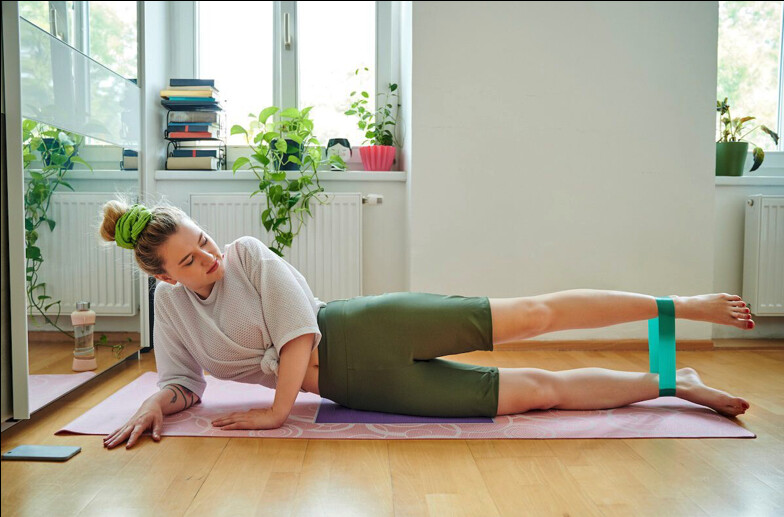
Being consistent is one of the best ways for you to continue running and improving, so sitting on the sidelines due to injury will stand in the way. The best thing you can do is listen to your body, and stop if you feel pain. No matter how tough you are, running through pain will usually make it worse.
When seeing your athletic therapist, or AT, for maintenance, nothing has to be wrong. I typically walk into my appointments asking for a tune-up, and my AT assesses my gait, balance and mobility to find what isn’t working the way it should. This allows me to address and fix an issue before it becomes significant enough to cause pain or affect my stride. The frequency of visits you should make to your clinic is very dependent on your history of injury and the volume and intensity of your training. This could range anywhere from once a month to once a week, and your treatment may be covered by your private healthMaintenance also involves keeping up with your rehab exercises prescribed by your AT between appointments,
ideally three or four times a week. These simple exercises target areas of weakness that are noticeable by your clinician during your session. As horrible as I am at actually completing this “homework,” the movements are helpful for not only reducing imbalances and preventing injury, but can overall make you stronger and in turn, faster. insurance.
(07/14/2024) ⚡AMPby Running Magazine
Timothy Cheruiyot reveals main aspect in training he needs to address before Paris 2024 Olympics
Timothy Cheruiyot has disclosed what he needs to work on after his second-place finish behind Jakob Ingebrigtsen at the Diamond League Meeting in Monaco.
Olympic 1500m silver medallist Timothy Cheruiyot has disclosed the one thing he needs to work on before descending on the purple track at the Stade de France for the men’s 1500m at the Paris Olympic Games.
Cheruiyot has battled injuries in the past seasons but he has slowly been bouncing back and this season has been steady on him. He qualified for the Paris 2024 Olympics at the Kenyan Olympic trials, finishing third in 3:35.90.
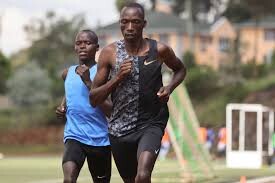
The 28-year-old, after finishing second at the Diamond League Meeting in Monaco, noted that he has to work on his speed endurance if he has to silence his serial rival Jakob Ingebrigtsen.
The Norwegian clocked a stunning 3:26.73 to join the club of legends with a win as Cheruiyot was forced to finish second in 3:28.71. Africa 1500m champion Brian Komen sealed the podium in 3:28.80.
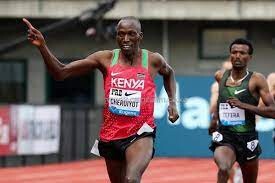
The 2019 world champion was happy to be peaking at the right time, expressing his elation towards the time posted, just less than a month before the Olympic Games.
“The race was good, I am happy about my time and my position. The 1500m nowadays is a very competitive race with a lot of young guys coming up fast," Cheruiyot said in a post-race interview.
“So I am proud because I am peaking myself towards the Olympics. I need to work harder to keep up. I know that I can come back strong. I especially need to work on my speed endurance.”
In the 1500m, Cheruiyot opened his season with a second-place finish at the Diamond League Meeting in Doha before finishing fourth at the National Championships, clocking 3:40.23 to cross the finish line.
Cheruiyot also finished second behind Ingebrigtsen at the Diamond League Meeting in Oslo before the Olympic trials where he finished third. As he heads to the Paris Olympic Games, Cheruiyot hopes to improve on his silver medal won at the delayed 2020 Tokyo Olympic Games.
(07/13/2024) ⚡AMPby Abigael Wafula
Paris 2024 Olympic Games
For this historic event, the City of Light is thinking big! Visitors will be able to watch events at top sporting venues in Paris and the Paris region, as well as at emblematic monuments in the capital visited by several millions of tourists each year. The promise of exceptional moments to experience in an exceptional setting! A great way to...
more...Lucia Stafford demolishes 30-year-old Canadian record in 2,000m
At her very first Diamond League in Monaco on Friday, Canada’s Lucia Stafford obliterated the 30-year-old Canadian record over the 2,000m distance. Her time of 5:31.18 beat Angela Chalmers’ previous record of 5:34.49 by almost three seconds.
The 2,000m isn’t commonly run, so many of the elite athletes in the field jumped at the chance to set new records, including Australia’s Jessica Hull. The race was set up for Hull to challenge the world record of 5:21.56 set by Francine Niyonsaba of Burundi at the World Continental meet in Zagreb, Croatia in 2021. With the help of three different athletes who shared the job of pace-setting, Hull finished with a time 5:19.70–the fastest 2,000m in history–with exactly two seconds to spare.

In the same race, Cory Ann McGee‘s time of 5:28.78 betters the former North American record of 5:32.70, which Stafford also snuck under.
This sixth-place finish at her very first Diamond League marks Stafford’s first outdoor national record. She already holds the North American indoor 1,000m record of 2:33.75.

Arop runs season’s best
After getting passed in the final 100m stretch of his race, Marco Arop, the reigning world champion in the men’s 800m, finished sixth with a time of 1:42.93–also bettering his season’s best.
Making his Diamond League debut, 19-year-old Christopher Morales-Williams also took sixth place in his 400m race. Although his time of 45.11 is not nearly his fastest of the season, he’ll have the chance to compete against these world-class athletes at the Olympic Games in Paris next month.
Two-time Olympic pole-vaulter Alysha Newman took fourth place in her event earlier in the day, jumping a season’s best of 4.76m. She jumped her previous season’s best of 4.75m to take the win at the Canadian Olympic Trials in Montreal earlier this month.
(07/13/2024) ⚡AMPby Cameron Ormond
Could water sprinting be the next Olympic sport?
The 2024 Paris Olympics are fast approaching, and the world’s best athletes will compete for gold on the track, road and field. Is there the potential for a new Olympic sport that defies traditional athletic norms? Enter water sprinting—a phenomenon demonstrated by basilisk lizards and a bird called the Western grebe. Scientists are exploring the idea of whether humans could also manage this remarkable feat, as reported by physicsworld.com.
How do animals do it?
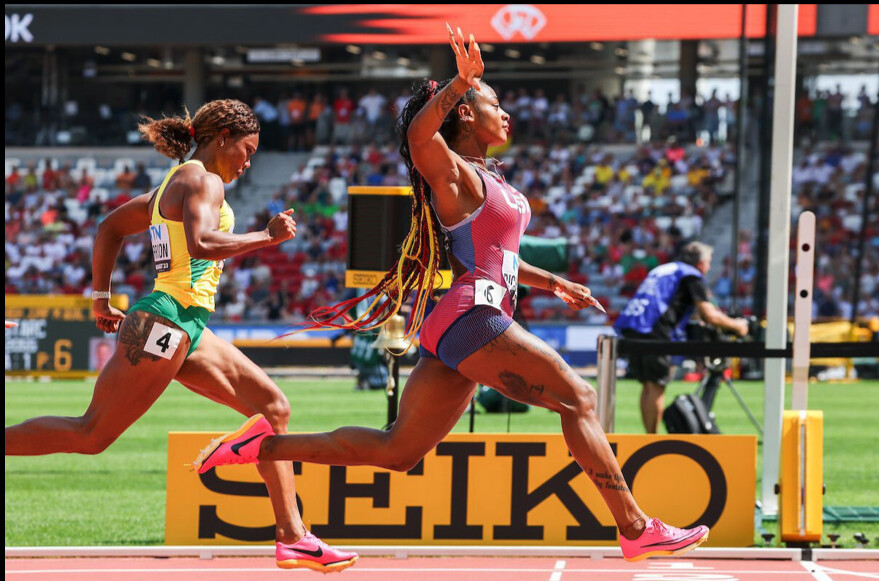

The basilisk lizard, often called the “Jesus Christ lizard” for its ability to sprint across water, can escape predators by briefly running on the water’s surface. Dr. Tonia Hsieh, a biologist at Harvard University, studied the way lizards defy gravity. Hsieh discovered that when the lizards run, their large feet slap the water, creating a force that propels them forward and upward. Hsieh’s research showed that while these lizards can run on water due to their speed and foot size, balancing on this ever-changing surface is still a significant challenge.
Humans and water running
The idea of humans mastering the ability to speed across watery surfaces is appealing, but challenging. Harvard researchers Tom McMahon and Jim Glasheen developed a mathematical model suggesting that to run on water, a human would need to slap the water with a force nearly 15 times greater than the maximum power we can exert. The basilisk is also running on a yielding surface, unlike humans on a track or road.
Humans and water running
The idea of humans mastering the ability to speed across watery surfaces is appealing, but challenging. Harvard researchers Tom McMahon and Jim Glasheen developed a mathematical model suggesting that to run on water, a human would need to slap the water with a force nearly 15 times greater than the maximum power we can exert. The basilisk is also running on a yielding surface, unlike humans on a track or road.
Sha’Carri Richardson could sprint in space
Titan, Saturn’s moon, offers a potential venue for water running. With only 13.8 per cent of Earth’s gravity and lakes of liquid ethane, could athletes like Richardson, the current women’s 100m champion, run on Titan’s surface? Richardson’s sprinting abilities just might make it possible to run across Titan’s ethane lakes, though she would have to deal with extremely cold temperatures.
While water running remains a phenomenon we marvel at in nature rather than a viable Olympic sport (at least for now), it sparks the imagination about what might be possible in different environments. If space exploration continues to advance, we might one day see Olympians racing across the waters of distant planets.
(07/13/2024) ⚡AMPOne Olympian you should definitely follow on TikTok or Instagram
Heptathlete Chari Hawkins is not only an active influencer with 950,000 Instagram followers and 680,000 TikTok followers; she also just qualified for her first Olympic Games as part of Team USA. The heptathlon, a two-day, combined event contest, requires her to have a wide range of skills–hurdles, high jump, shot put, 200m, long jump, javelin and 800m. Although running events are not her only focus, she has plenty of advice to share about improving your technique, speed, strength and recovery.
Hawkins doesn’t skip over the little things. The Rexburg, Idaho native’s content deals with the nitty gritty aspects of your biomechanics–right down to your foot strike. It’s rare to get all three of the what, how and why aspects behind a technique, but Hawkins’ high-quality videos and explanations break things down to make seemingly complex concepts easy to understand.

You know how a lot of influencers post paid promotions that their followers don’t care about or relate to? This Olympian actually works with brands and products that relate to her sport and enhance her performance, meaning these ads may actually be useful to you, too. She usually hides her sponsorships within an informative and fun video–so you don’t even realize it’s an advertisement.
Hawkins’ content isn’t only targeted toward beginners; even experienced athletes can take her advice to further improve their performance. Her videos will teach you how to improve your drills, how to hold your hands while running and which plyometrics exercises you should focus on–all things that are often overlooked, even at the elite level. A bonus is that she shares fun facts about the sport of track and field and takes you along on her journey as a heptathlete.
The success she has seen as a professional athlete provides reassurance that she knows what she’s talking about. If you want to be educated and inspired as a runner, definitely give Hawkins a follow.
(07/13/2024) ⚡AMPby Running Magazine
New Study Reveals How Women's VO2 Max Differs from Men's
A new study from researchers at the Federal University of São Paulo in Brazil focused on women's aerobic capacity suggests that the mechanisms of VO2 max decline—and thus perhaps the best countermeasures—are different in men and women.Maximal oxygen uptake, or VO2 max, is perhaps the single best predictor of long-term health and longevity. It’s also the key trait that distinguishes elite endurance athletes. We know all this from more than a century of research… in men. Whether the same things hold true for VO2 max in women is less clear, because there simply isn’t as much data on them.
A new study from researchers at the Federal University of São Paulo in Brazil aims to fill some of this gap. They recruited 85 runners and 62 sedentary people, all women between the ages of 20 and 70, and split them further into younger (less than 50) and older (greater than 50) age groups. Then they tested their VO2 max with a progressive treadmill test to exhaustion, measured their body composition with a DXA scan, and collected information about their training and other health-related habits. The results are published (and free to read) in Experimental Gerontology.
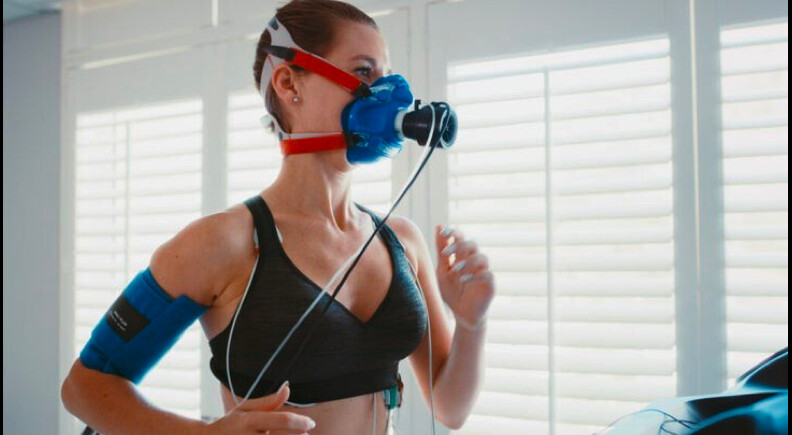
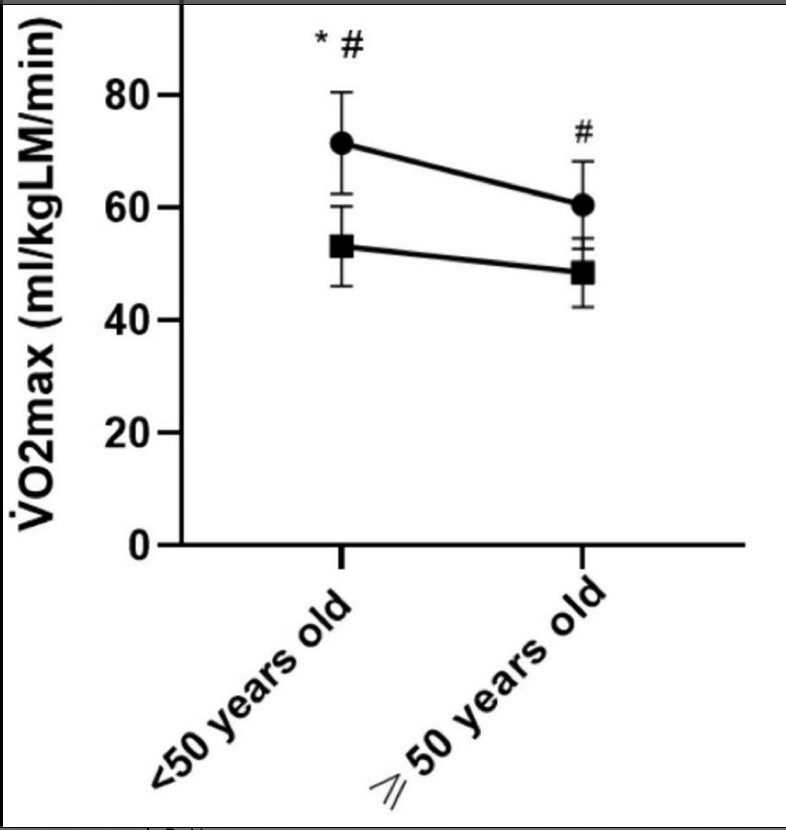
The headline findings are unsurprising: runners had higher VO2 max than non-runners, meaning they were able to suck in, distribute to their muscles, and use more oxygen per minute; younger people had higher VO2 max than older people. But when you zoom in on the details, some more interesting patterns emerge.What the VO2 Max Data Shows
There are three ways of expressing VO2 max. The first is absolute VO2 max, which is simply the greatest volume of oxygen you can use per minute, usually expressed in liters per minute. If you get fitter, you’ll be able to deliver and use oxygen more quickly, enabling you to power your exercise on sustainable aerobic metabolism for longer. Conversely, if you get too unfit and your VO2 max drops too low, even simple daily activities like climbing the stairs will require more oxygen than you can supply, turning them into challenging anaerobic efforts.
Here’s how the absoluteVO2 max values compared for the four groups, with runners represented by circles and sedentary people by squares:All this means that absolute VO2 max is a useful marker of health and performance—but it’s less useful for comparison between different people, because the amount of oxygen you use depends on body size. A heavyweight rower might use twice as much oxygen as a diminutive marathoner, but if she’s twice as big then she’s not necessarily fitter. Instead, she’ll need all that extra oxygen to move her larger body around. A better comparison would be to divide each person’s VO2 max by their weight, giving what’s called relative VO2 max, expressed in milliliters of oxygen per kilogram of body weight. Here’s what that data looks like:The key thing to notice here is that there’s a much bigger gap between the runners and non-runners in relative VO2 max than in absolute VO2 max, which is because the non-runners weigh substantially more on average. The relative value offers a much better reflection of how much fitter the runners are for running: what matters is not just how much aerobic power you can deliver, but how big a load that power needs to move.
Why Body Composition Matters, Too
The researchers also present a less-common third way of expressing VO2 max. In this case, they divided the absolute value not by total weight, but by the weight of each person’s lean mass, meaning primarily muscle as well as connective tissue.
To understand why this is relevant, it’s useful to think about VO2 max in terms of oxygen supply and demand. The traditional view of VO2 max was that it was dictated by oxygen supply—that is, by how quickly you could suck in oxygen, diffuse it from your lungs to bloodstream, and pump it to your muscles. These are all considered “central” limitations on VO2 max. The primary way changing VO2 max, in this picture, is for your heart to get stronger so that it can pump more blood to your muscles.
But oxygen demand also matters. It doesn’t matter how much oxygen you pump to your muscles if your muscles aren’t capable of extracting and, with the help of mitochondria, making use of it to provide aerobic energy. That’s why VO2 max is more closely proportional to your total muscle mass than to your overall weight. If you add ten pounds of fat to your body, your absolute VO2 max won’t change because fat doesn’t consume oxygen. If you add ten pounds of muscle, your ability to consume oxygen will increase, and your ability to supply oxygen will likely follow suit. How much muscle you have, and how effectively that muscle can use oxygen, are “peripheral” limitations on VO2 max.
Here’s what the data showed for VO2 max divided by lean mass only:An Unexpected Finding About VO2 Max in Women
Here’s where the surprise comes in. Based on earlier data from men, the researchers had hypothesized that these relative-to-muscle values would be less affected by aging than the relative-to-whole-body values. To put it another way, the male data had suggested that age-related declines in VO2max were primarily related to declines in central factors like the heart and circulatory system, while peripheral factors like the ability of muscle to use oxygen stayed relatively constant. But that’s not what they found here: both central and peripheral factors seemed to decline at similar rates in women.
Why should VO2-max declines in women be different than in men? One possibility is that it’s a fluke that’s specific to the relatively small group of women being tested here. But it’s also possible that there’s a genuine difference. The researchers suggest that “intramuscular adipose tissue”—that is, small amounts of fat located within the muscle itself, sometimes referred to as muscle fat infiltration—may play a role. This infiltration tends to be higher in women, and increases with age. If that’s what’s happening, then it suggests that the mechanisms of VO2 max decline—and thus perhaps the best countermeasures—are different in men and women.
There’s one final point to note in this data—one that, in this case, does echo previous findings in men. The runners experienced a steeper VO2 max decline with age than the non-runners. This might be a sort of physiological regression to the mean: the higher you start, the more you’re likely to fall. But it probably also reflects the fact that older runners tend to train less than younger ones, a pattern that showed up in this study too. There are plenty of good reasons for that, but it’s also a reminder: if you’re working hard to be super-fit now, you’ll have to keep working similarly hard to be similarly fit in the future. When it comes to fitness, saving for retirement only takes you so far.
(07/13/2024) ⚡AMPby Outside Online
Western States 100: Walmsley Wins a Fourth Time While Schide Rocks the Women’s Field
For hours, Katie Schide (pre-race and post-race interviews) chased ghosts. For hours, Jim Walmsley (pre-race and post-race interviews) and Rod Farvard (post-race interview) chased each other. And in the end, after 100 courageous, gutsy miles at one of the world’s most iconic ultramarathons, it was Schide and Walmsley who won a fast, dramatic 2024 Western States 100.
Schide, an American who lives in France, was on pace to break the course record until late in the race, while Americans Walmsley and Farvard battled throughout most of the second half of the race, alternating the lead as late as mile 85.
Schide’s winning time was 15:46:57, just over 17 minutes behind Courtney Dauwalter’s 2023 course record, almost an hour faster than her own time last year, and the second fastest women’s time ever. Walmsley, meanwhile, won his fourth Western States in 14:13:45, the second fastest time ever — only behind his own record of 14:09:28 that he set in 2019.
Second and third in the men’s race came down to an epic sprint finish on the track between Farvard and Hayden Hawks (pre-race and post-race interviews), who finished in 14:24:15 and 14:24:31, respectively.
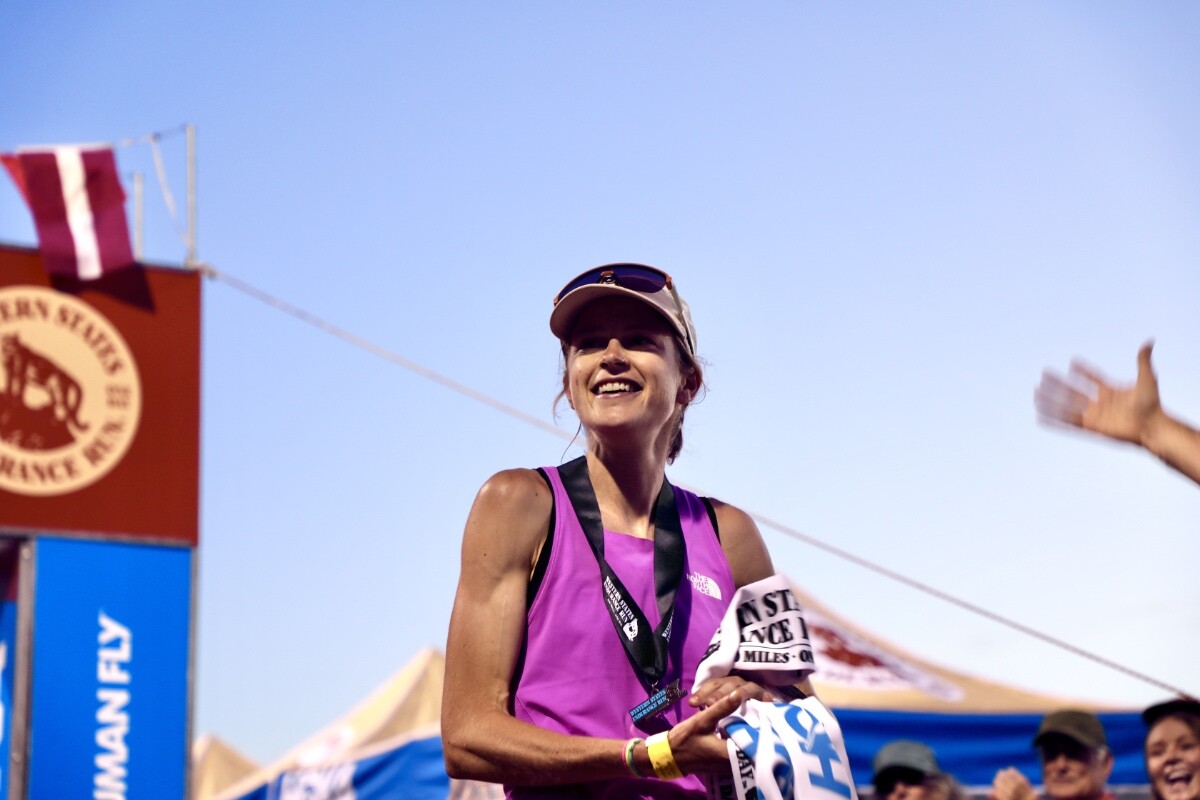
In the women’s race for the podium, Fu-Zhao Xiang (pre-race and post-race interviews) finished second in 16:20:03, and Eszter Csillag (pre-race and post-race interviews) took third for the second time in a row, in 16:42:17.
Both races featured one of the deepest and most competitive fields in race history, with the men’s top five all coming in faster than last year’s winning time, and the women’s top 10 finishing just under 40 minutes faster than last year’s incredibly competitive top 10.
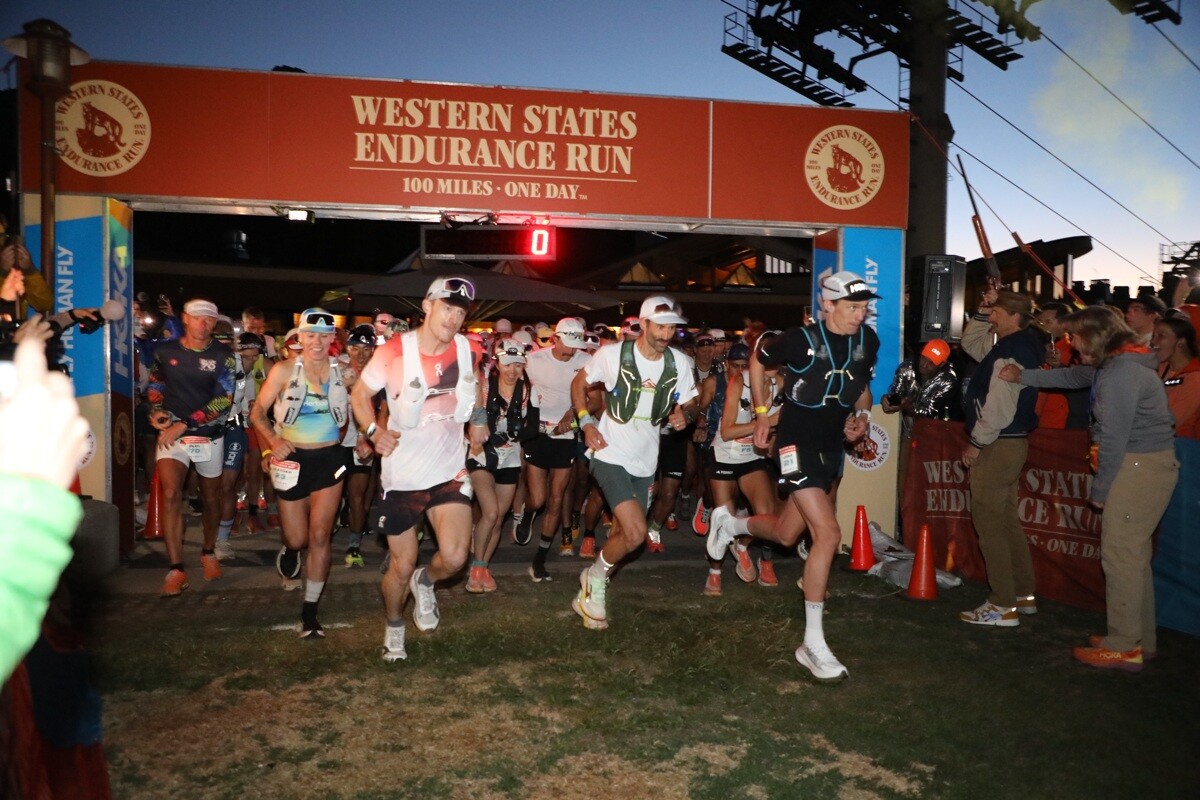
At 5 a.m. on Saturday, June 29, they were all among the 375 runners who began the historic route from Olympic Valley to Auburn, California, traversing 100.2 miles of trail with 18,000 feet of elevation gain and 22,000 feet of loss. After last year’s cool temperatures, the weather at this year’s race was a bit warmer, albeit with a notable lack of snow in the high country. The high temperature in Auburn was in the low 90s Fahrenheit.
A special thanks to HOKA for making our coverage of the Western States 100 possible!
2024 Western States 100 Men’s Race
In his return to the race that propelled him to the heights of global trail running and his first ultra on American soil in three years, Jim Walmsley (pre-race interview) demonstrated why he is, once again, the king of Western States. Before the race, Walmsley exuded a calmness that perhaps eluded him during his first attempts, when he attacked it with an obsessive intensity that led him to famously take a wrong turn and then dropping out in back-to-back years.
“We’ll just roll with what plays out and just kind of see what happens in the race,” he said in his pre-race interview. There’s a marked difference when compared to his remarks from his interview before the 2016 race.
What happened in the race was this: In his fourth Western States, Rod Farvard (post-race interview) had the race of his life to push Walmsley like he’d never been pushed before in his long history with the event.
Farvard — a 28-year-old from Mammoth Lakes, California, who has improved his finish each year at the race, from a DNF in 2021 to 41st place in 2022 to 11th place last year — put himself in a strong position from the start, leading a large pack of runners that included Walmsley at the top of the Escarpment, the 2,500-foot climb in the first four miles of the race. For the next 45-plus miles, Farvard remained in the top 10, part of a chase pack of American Hayden Hawks (pre-race and post-race interviews), Kiwi Dan Jones (pre-race interview), and Chinese runner Guo-Min Deng, among others.
At the Robinson Flat aid station at mile 30 — the symbolic end of the runners’ time in the high country, which features an average elevation of around 7,000 feet — Walmsley, who started the race conspicuously wearing all black, came through in 4:24 looking fast and smooth, now wearing an ice-soaked white shirt. Jones, the 2024 Tarawera 102k champion and fifth-place finisher in his Western States debut last year, and Hawks, who set the course record at February’s Black Canyons 100k after dropping out of last year’s Western States, followed about 90 seconds later. The two runners, frequent training partners, ran together frequently throughout the day, with Hawks often foregoing ice at aid stations.
After the trio of Walmsley, Hawks, and Jones went through Last Chance at mile 43 together, Walmsley put nearly two minutes on them up the climb to Devil’s Thumb. “I was with everybody at the bottom,” he said, according to the race’s official livestream.
About halfway through, at mile 49.5, the order remained the same: Walmsley in the lead with an elapsed time of 6:58, followed by Jones one minute back, Hawks two minutes back, and Farvard just over two and a half minutes back. The rest of the top 10 were last year’s 17th-place finisher Dakota Jones; 2024 Transvulcania Ultramarathon champion Jon Albon (pre-race interview), who is from the U.K. but lives in Norway; 2023 fourth-place finisher Jia-Sheng Shen (China) (pre-race interview); 2023 Canyons 100k champion Cole Watson; Western States specialist Tyler Green (pre-race interview); and Jupiter Carera (Mexico).
Then began a thrilling, chaotic second half of the race — featuring a gripping back-and-forth between Walmsley and Farvard, a wildfire near the course, a two-man river crossing, and a sprint finish on the track.
It all started when Walmsley entered Michigan Bluff at mile 55, again looking calm and in control, changing shirts and getting doused with ice. Farvard came in just behind him and left the aid station first, leading the race for the first time since the first climb up the Escarpment. The same routine took place seven miles later at Foresthill: Walmsley entering first, Farvard leaving first.
For the next 18 miles, the two runners alternated in the lead. By mile 78, they were so close that they were crossing the American River at the same time. Their battle underscored the overall depth of the field at this year’s race: At mile 80, the top five men were within 16 minutes of one another.
Around then, the 15-acre Creek Fire, which started not long before, was visible from the final quarter of the course and crews were temporarily not permitted to travel to the Green Gate aid station at mile 80 because the route to it passed close to the fire. Eventually, a reroute was established for crews to get to Green Gate and, later, after the wildfire was controlled, the regular route was reopened.
At Green Gate, Farvard came through in the lead, with Walmsley four minutes back and looking like he was hurting. It was then, perhaps, that the thought entered people’s minds: Could Farvard really take down the champ?
But Jim Walmsley is Jim Walmsley for a reason, and he again proved why he is among the world’s best. Against the ropes, facing one of his first real challenges in the race that shaped him, he delivered, entering the next aid station, Auburn Lake Trails at mile 85, more than a minute earlier than Farvard. He had made up five minutes in five miles.
Walmsley never trailed again, increasing his lead to 11 minutes by the Pointed Rocks aid station at mile 94 and then picking up his crew, including his wife, Jess Brazeau, at Robie Point to run the final mile with him. He entered the track at Placer High School to loud cheers, his loping stride still looking smooth, stopping a few steps short of the tape to wave to the crowd and raise his arms in triumph. He had done it again.
Behind him, Farvard was fading but determined to cap an extraordinary race with a second-place finish. Hawks, who had made up five minutes on Farvard in the couple miles between Pointed Rocks and Robie Point, was on the hunt, and by the time he stepped on the track, Farvard was within sight.
It was then that fans were treated to one of the most unique sights in all of ultrarunning: After 100 miles of racing, two men were sprinting against each other on a track. In the end, Farvard’s lead held, and he finished 16 seconds ahead of Hawks. He collapsed at the finish line — a fitting end to an epic performance.
Dan Jones ended a strong race with a fourth-place finish in 14:32:29, with Caleb Olson capping an impressive second half of the race — from 11th at mile 53 to fifth in 14:40:12 at the finish. All five men ran a time that would have won the race last year.
Behind Olson came Jon Albon, running 14:57:01 in his 100-mile running-race debut, followed by the surgical Tyler Green, who finished in seventh for his fourth straight top 10 finish at the race. Green’s time of 15:05:39 also marked a new men’s masters course record, breaking the 2013 Mike Morton record of 15:45:21.
Rounding out the top 10 were Jia-Sheng Shen in eighth with a time of 15:09:49, Jonathan Rea in ninth who methodically moved his way up during the last 60 miles to finish in 15:13:10; and Chris Myers in 10th in 15:18:25.
2024 Western States 100 Women’s Race
Through the high country, into and out of the canyons, and along the river of the world’s oldest 100-mile trail race, Katie Schide (pre-race and post-race interviews) raced only the ghosts of the clock and history. Smiling throughout, she seemed unaffected by the solitude and the enormity of the possibility that lay before her: to attempt to break the course record of one of the world’s most iconic trail races.
Schide, an American who lives in France, came into the race as the clear favorite, and for good reason: She finished second last year, breaking Ellie Greenwood’s previously untouchable 2012 course record by more than three minutes and losing to only Courtney Dauwalter, who broke Greenwood’s record by an astounding 78 minutes on her way to a historic Western States-Hardrock 100-UTMB triple win. Schide, winner of the 2022 UTMB and 2023 Diagonale des Fous 100 Mile, spent the last two-and-a-half months in Flagstaff, Arizona, training for Western States, winning this year’s Canyons 100k in an impressive tune-up and putting in a monster training block.
In her pre-race interview, Schide said that she had thought about ways to improve her race from last year, which perhaps should have been the first warning to her competition. The second, then, was her immediate separation from the women’s chase pack: She summited the Escarpment, a 2,500-foot climb during the first four miles, in first place and never looked back. By the first aid station — Lyon Ridge at 10 miles — she was already 12 minutes under course record pace, and by Robinson Flat at mile 30, she was 21 minutes ahead of second-place Emily Hawgood (pre-race interview), from Zimbabwe but living in the U.S.
The lead only ballooned from there. By Dusty Corners at mile 38, Schide was an incredible 26 minutes under course record pace, and though she lost a few minutes from that pace by the time she climbed up to Michigan Bluff at mile 55, her smile had not waned even slightly. She smoothly entered the iconic aid station, doused herself with ice, changed shirts, and was soon on her way. She never sat down.
Twenty-seven minutes behind her was Hawgood, looking to build on back-to-back fifth-place finishes. Eszter Csillag (pre-race and post-race interviews), a Hungarian who lives in Hong Kong, followed soon after, in the same third spot she finished in last year.
After them ran a dense pack of women: Only 16 minutes separated Hawgood in second from Lotti Brinks in 11th.
At the halfway point, the top 10 were Schide, 33 minutes up in an elapsed time of 7:26; Csillag; Hawgood; Chinese runner Fu-Zhao Xiang (pre-race and post-race interviews), the fourth-place finisher at last year’s UTMB; Lin Chen (China); American Heather Jackson, a versatile former triathlete who recently finished fifth at a competitive 200-mile gravel bike race; ultrarunning veteran Ida Nilsson (pre-race interview), a Swede living in Norway; Becca Windell, second in this year’s Black Canyon 100k; 2023 CCC winner Yngvild Kaspersen (Norway); and Rachel Drake, running her 100-mile debut.
Schide, easily identifiable in her pink shirt, maintained her large lead throughout the second half of the race, remaining calm, controlled, and upbeat throughout the tough canyon miles. By Foresthill at mile 62, she was 19 minutes ahead of course record pace and 48 minutes ahead of the second-place Xiang. Schide’s stride still looked smooth as she waved to fans and even high-fived a cameraman.
Schide’s aggressive pace eventually slowed — by Green Gate at mile 80, her lead on the course record had dissipated — but her spirits did not. After a quick sponge bath at Auburn Lake Trails aid station at mile 85, she fell behind course-record pace for the first time all day, only 15 miles remained until the finish.
Schide entered the track a couple of hours later, running with her crew and no headlamp. She would finish before dark. She stopped for a hug on the final straightaway and lifted the tape with, of course, a smile.
Xiang had methodically pulled away from Hawgood and Csillag during an incredibly strong second half to win the battle for second. Fu-Zhao Xiang finished in 16:20:03 for the third fastest time in race history. Chen, who dropped out at mile 78, was one of the few elite runners who had a DNF on this day, which was categorized by a lack of attrition in both the women’s and men’s elite races.
Eszter Csillag came in about 22 minutes behind Xiang in 16:42:17 for her second consecutive third-place finish, a 30-minute improvement from last year — a statistic that perhaps exemplifies the speed of this year’s race better than any other.
The battle for fourth and fifth was nearly as close as Farvard and Hawks’s race for second in the men’s race a couple of hours earlier.
At Pointed Rocks at mile 94, Hawgood led by barely two minutes, running hard and straight through the aid station. Kaspersen, meanwhile, was drinking Coke and made up almost a minute by Robie Point.
Emily Hawgood’s lead ultimately held, and she finished fourth in 16:48:43 to improve her finish from prior years by one spot. Yngvild Kaspersen was less than two minutes back in 16:50:39. Ida Nilsson capped a strong day to finish sixth in 16:56:52 and break Ragna Debats’s masters course record by almost 45 minutes. That means the top six women all finished in under 17 hours in a race that had only ever had three women finish under that mark — and two of them, Dauwalter and Schide, were last year.
The rest of the top 10 were Heather Jackson in seventh in 17:16:43, and, in close succession, Rachel Drake in 17:28:35, Priscilla Forgie (Canada) in 17:30:24, and Leah Yingling in 17:33:54.
The top 10 women were all faster than the 12th-fastest time in race history going into the day.
(07/12/2024) ⚡AMPby Robbie Harms
Hardrock 100
100-mile run with 33,050 feet of climb and 33,050 feet of descent for a total elevation change of 66,100 feet with an average elevation of 11,186 feet - low point 7,680 feet (Ouray) and high point 14,048 feet (Handies Peak). The run starts and ends in Silverton, Colorado and travels through the towns of Telluride, Ouray, and the ghost town...
more...'That is the only record I regret' - Asafa Powell on the 100m race he set a World Record in accidentally
Powell set a then100m World Record of 9.74 in 2007 despite intentionally slowing down towards the end of the race.
Jamaican sprint legend Asafa Powell, renowned for his blistering speed and dominance in the 100 meters, has recently opened up about a race he believes could have resulted in an even faster time if he had given it his all.
The race in question is the 2007 Rieti meeting in Italy, where Powell set a then-world record of 9.74 seconds. Despite his remarkable achievement, Powell reflects on what might have been had he not intentionally slowed down towards the end.

In a recent guest appearance on Justin Gatlin's Ready Set Go podcast, Powell shared his thoughts on the race and the strategy that led to his impressive but bittersweet performance.
The Rieti race took place shortly after the Osaka World Championships in 2007, and to this day, Powell holds the record for the most sub-10 second 100m races in history.
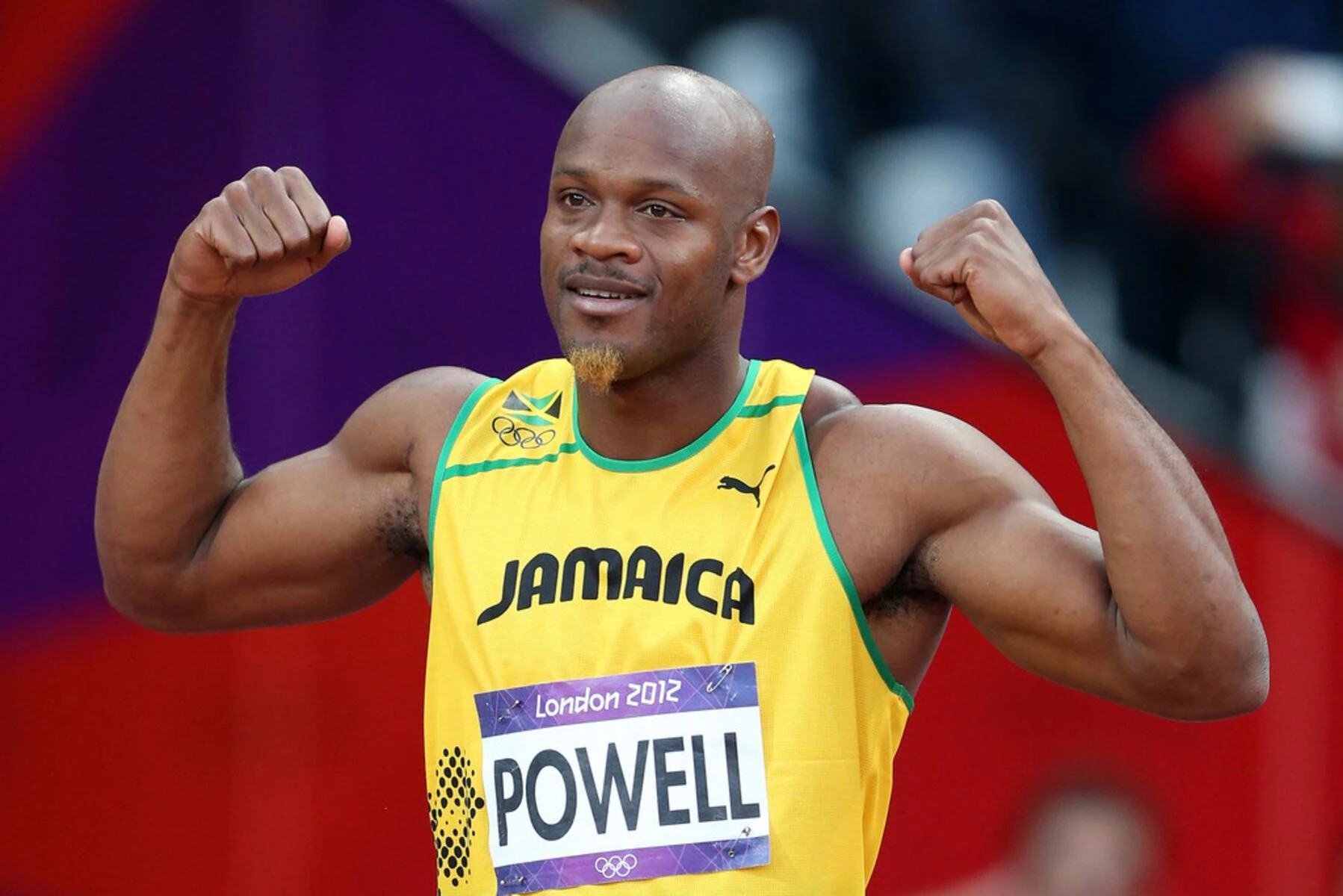
He previously held the world record in the event until fellow Jamaican Usain Bolt shattered it in 2008 with a 9.68-second run at the Beijing Olympics, followed by an astounding 9.58 performance in 2009 in Berlin, Germany.
Reflecting on his performance in Rieti, Powell explained his strategy and the circumstances that led to his record-setting but somewhat unfulfilled run.
"That is the only record I regret," Powell admitted. "This was after the world championships in Japan. We went to Rieti and in the warm-up, the coach was like, ‘make sure you get the 30 meters first.’"
Powell elaborated on the instructions from his coach, which focused on perfecting his drive phase and transition.
"When he makes a command, I am like, ‘I am going to do it,’ so the coach was like, ‘we are working on your drive phase and transition. When you get to 70 meters, just back off the gas,’" he recalled.
True to his coach's directive, Powell executed the plan flawlessly.
"I went out there and did just that, and when I crossed the finish line, I saw 9.74 and I was waiting for the clock to change or something. 9.74? I see everyone celebrating and I am like, I cannot even celebrate. This is just the heat. Am I going to go for the victory lap? I am just getting ready for the final. What am I going to do?" Powell recounted.
"I didn't even know what to do at that time. I see everyone celebrating. My manager was the first to get to the track and I am like, celebration? I need to get back to the warm-up. It was unexpected. I did not feel like I was running a world record at the time. I did not know what to do, but I think I ran that race flawlessly," he said.
Powell's reflection on the race leaves fans and athletes alike wondering what could have been. "I can’t even think about what I would have ran if I had kept on just going to the finish line. I would have ran 9.6 easily," he concluded.
Asafa Powell's legacy in the world of sprinting is undeniable, and his reflections on the Rieti race offer a glimpse into the mind of a true champion who continually strives for perfection.
Despite the "what ifs" that linger, Powell's accomplishments remain a testament to his remarkable talent and dedication to the sport.
(07/12/2024) ⚡AMPby Mark Kinyanjui
Why beginners shouldn’t do running drills
In endurance running, there is less of an emphasis on good biomechanics than there is in sprinting–understandably so, as our races don’t usually come down to the hundredth of a second that separates first and second place. However, good form will only help you run faster while lowering your risk of injury. Drills are basic running exercises that improve speed, agility, balance and coordination; but they may just be overwhelming for beginners.
Even though runners repeat the same forward running movements over and over, it is still important to move through your range of motion in other planes. This will activate different muscles to then support and aid the main muscles and joints that are active while running, giving you an extra boost. As an experienced runner, these are the drills I do in my warmup routine:
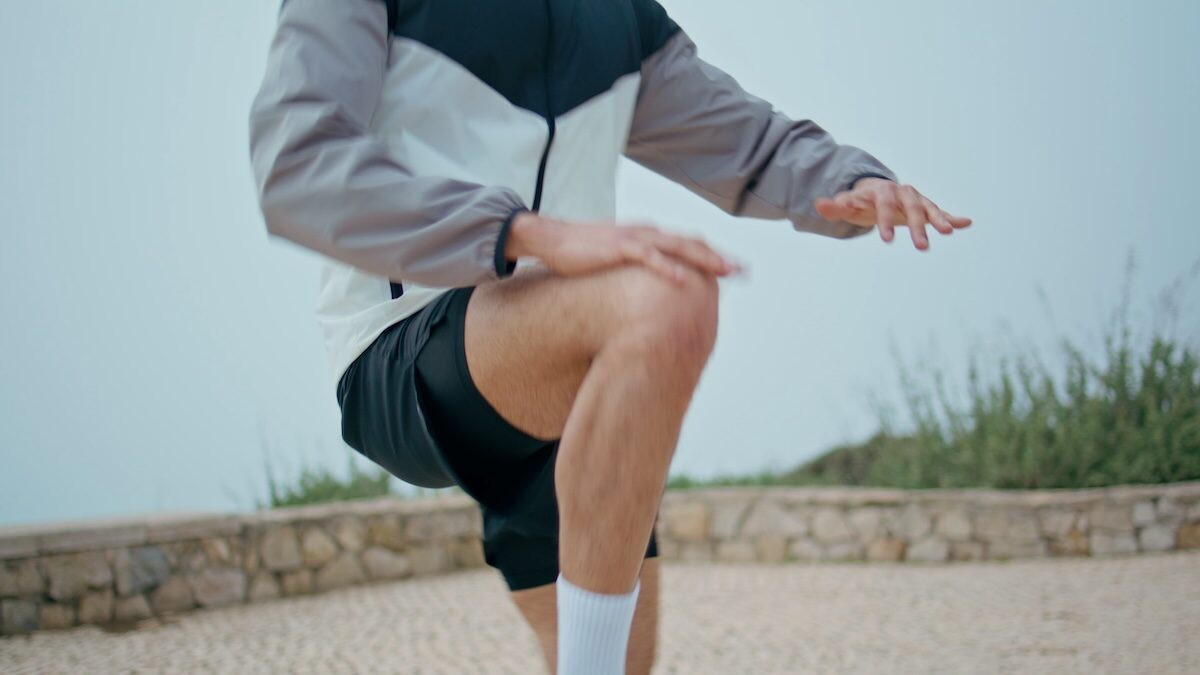
Heel walks and toe walks
Scoops
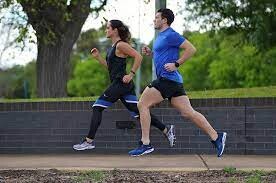
High kicks
Forward skipping with arm circles
Side skips
Carioca (grapevine)
A-skips
B-skips
Dribbling
High knees
One-foot hops
Two-foot hops
Skater jumps
If these sound like complete gibberish, that’s expected–I didn’t know what they were when I first started out, either.
As a beginner, your main focuses should be showing up and being smart as you introduce running into your fitness regime. If you are just trying to build fitness and endurance, first get the habit of running to really stick before trying out these drills.
You don’t want to add too much to your plate by adding technical exercises that will add more time to your workout and tire you out more quickly. Progressing your runs slowly and focusing on recovery until you build mileage and speed will be the key first steps when starting out.
Eventually, you will find yourself shifting your goals to running faster than you did in your last race–and that is when improving your form and adding an extra bounce to your step will make a significant difference in your results. When you no longer classify yourself as a “beginner,” introducing drills as the next step won’t feel as overwhelming. Keep in mind that these ABCs may be more difficult to learn than the ones you are already familiar with. Being patient, moving slowly and focusing on having good technique, above all, will help you become a stronger and faster runner.
(07/12/2024) ⚡AMPby Cameron Ormond


